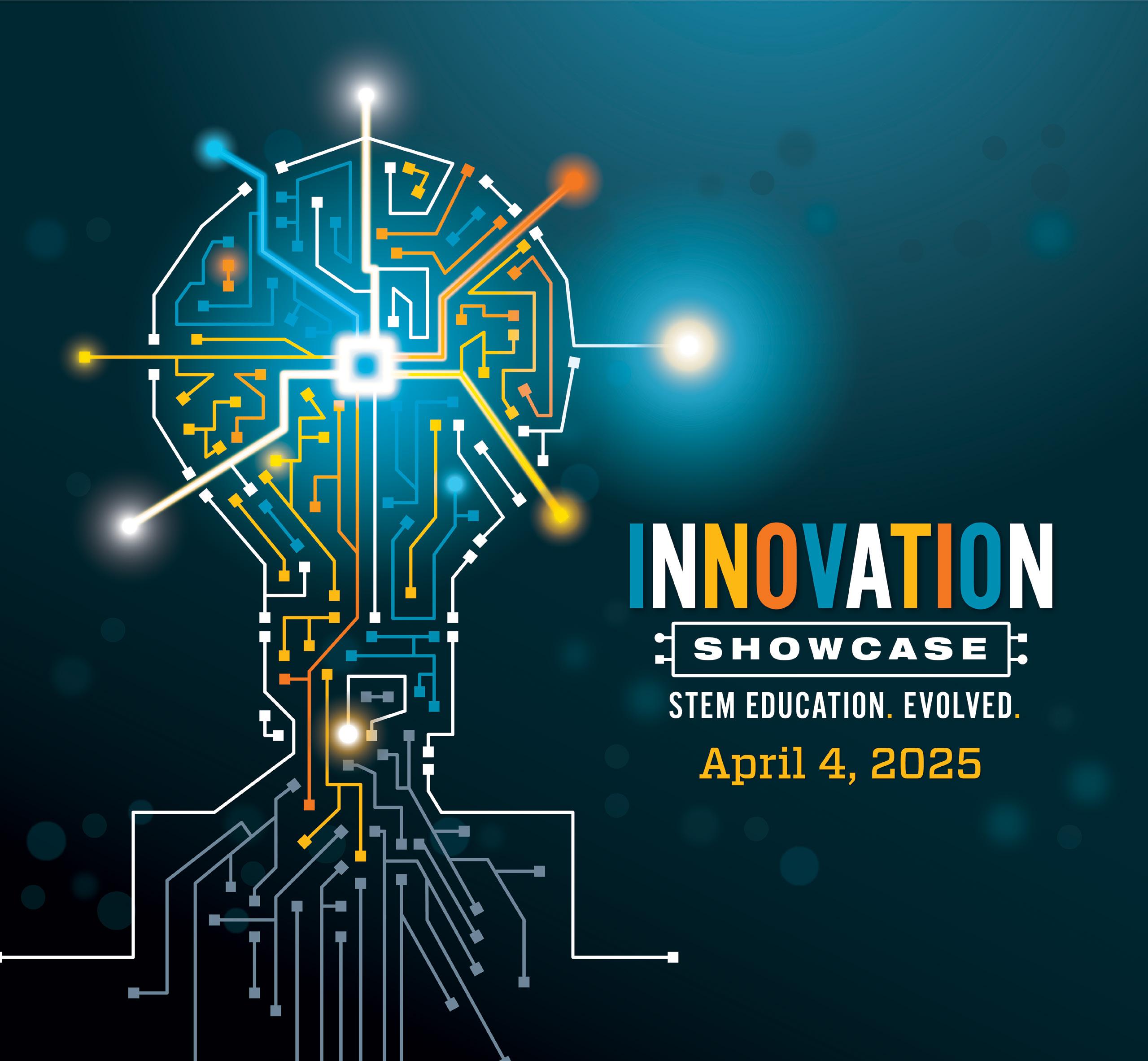




Student photographers captured the vibrant spirit of the Harvey Mudd College community this fall, showcasing moments that celebrate collaboration, engagement and shared purpose. Faculty, staff, students, alumni and other community members gathered for events, workshops and team-building activities that foster inclusivity and strengthen bonds across the College community. From group discussions to lighthearted moments, these images reflect the College’s mission to cultivate a supportive and connected campus environment while celebrating the diverse contributions of its members.

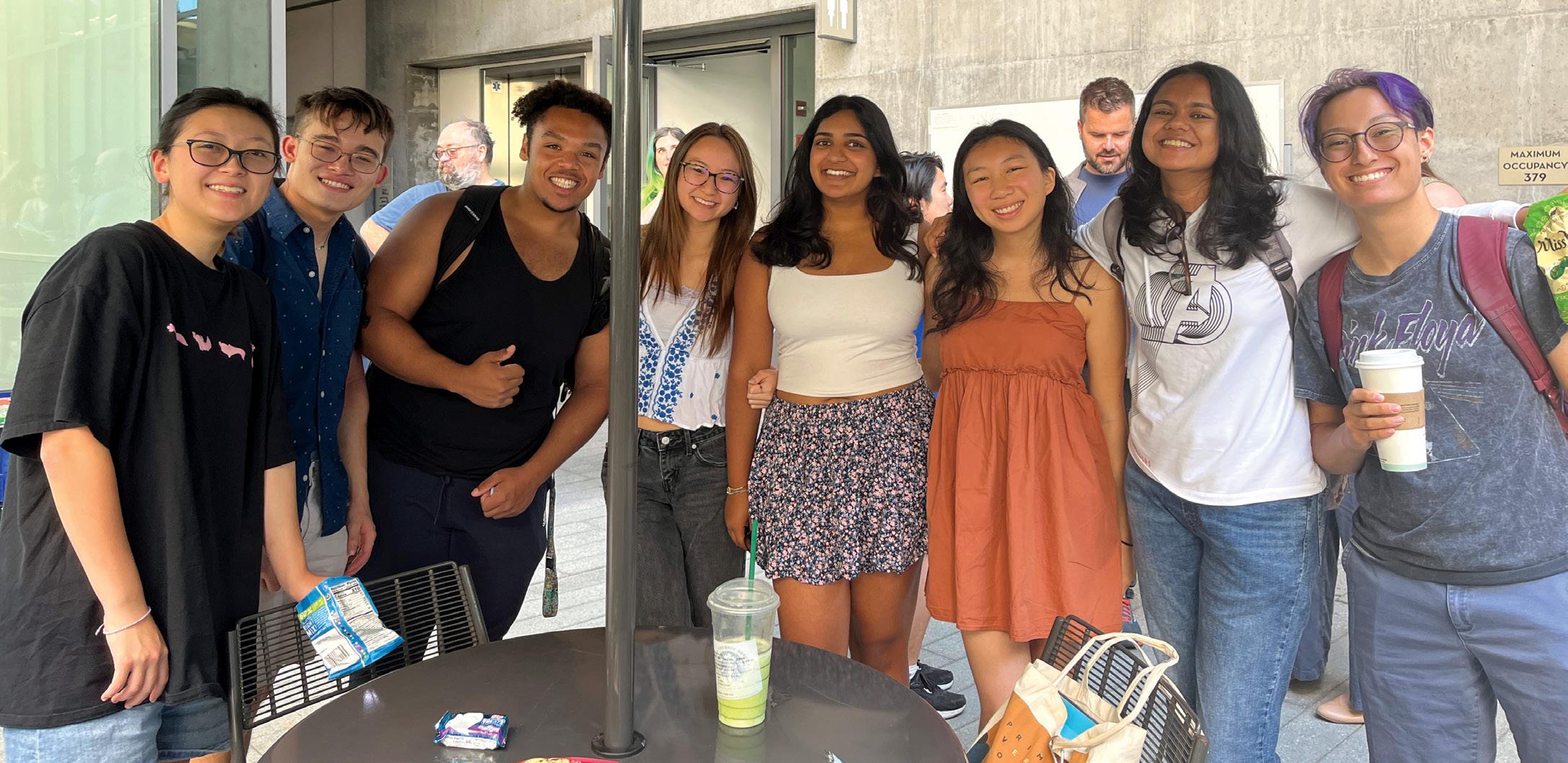
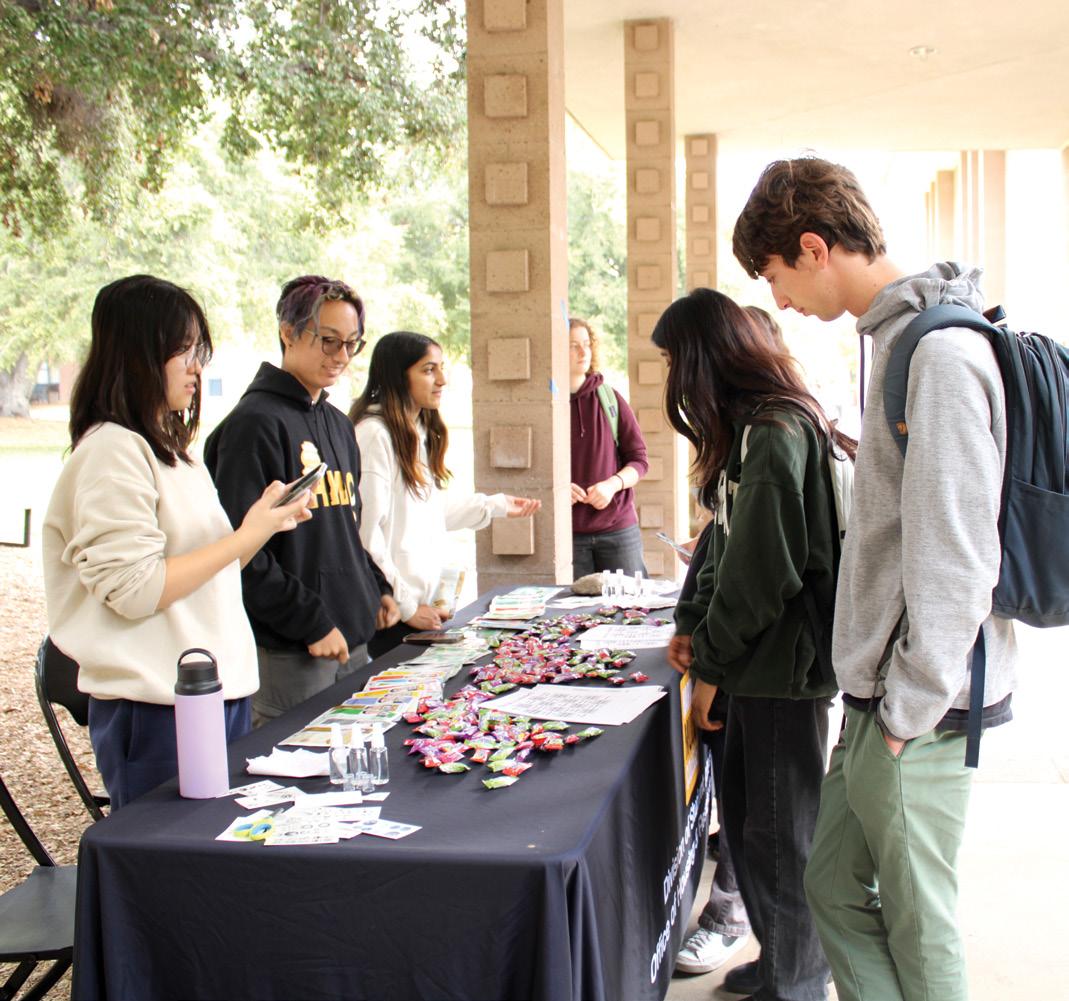
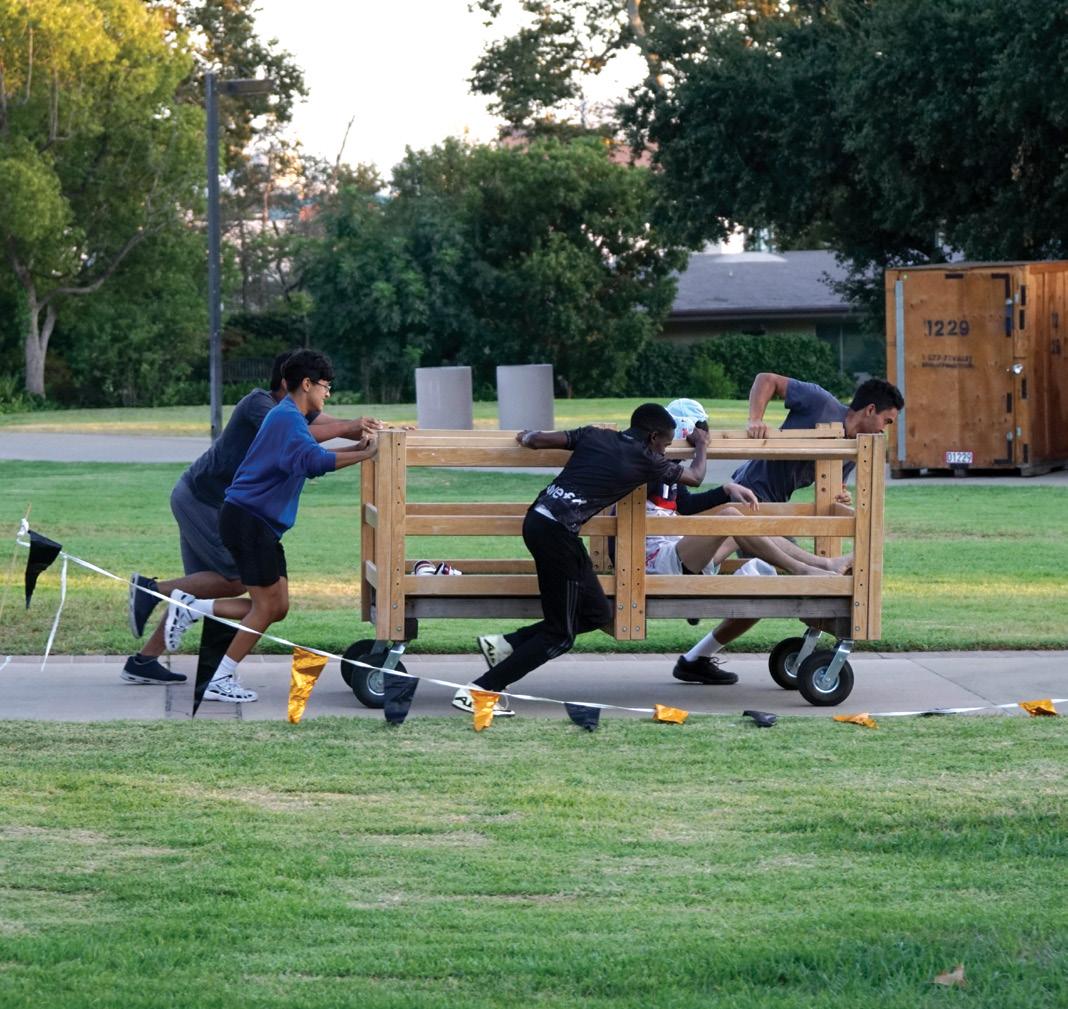

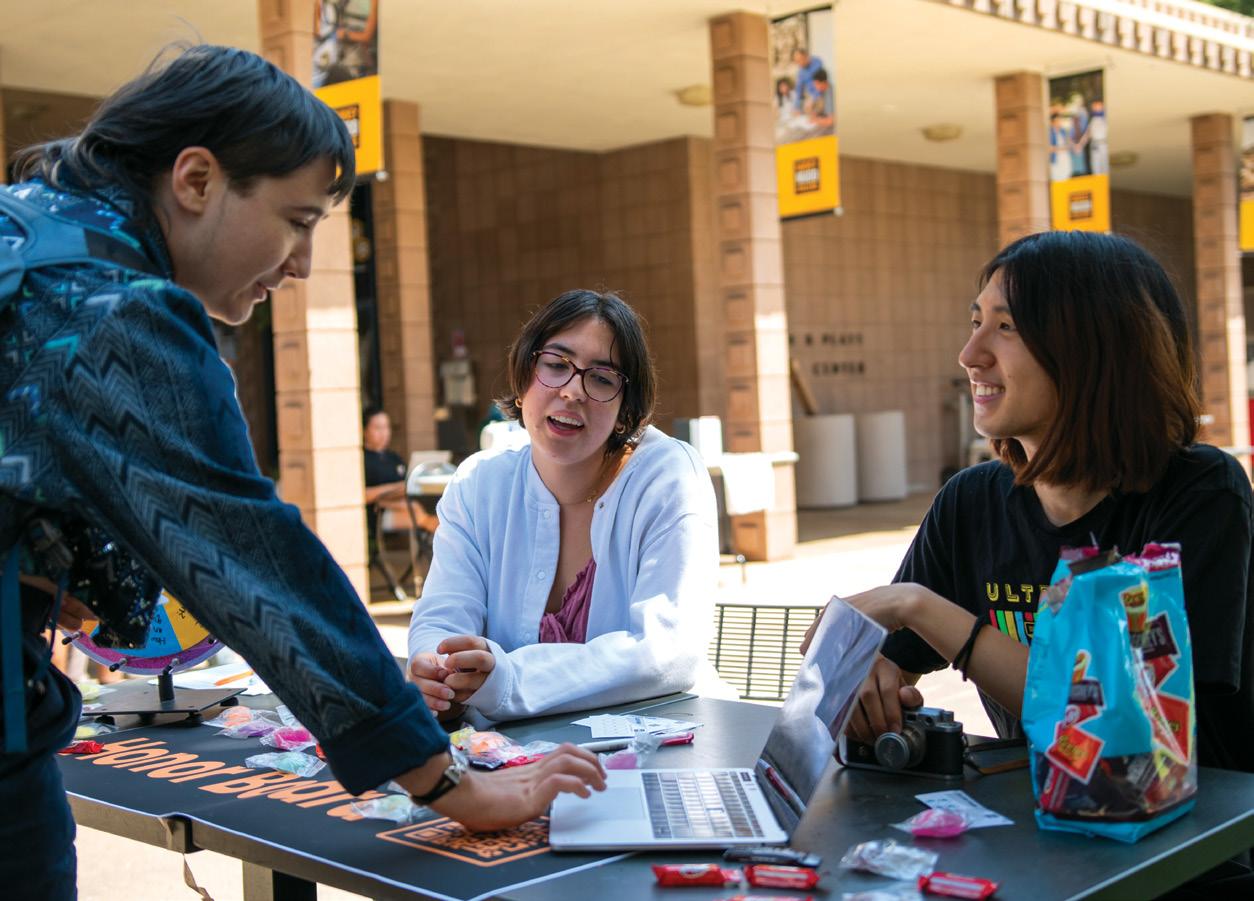
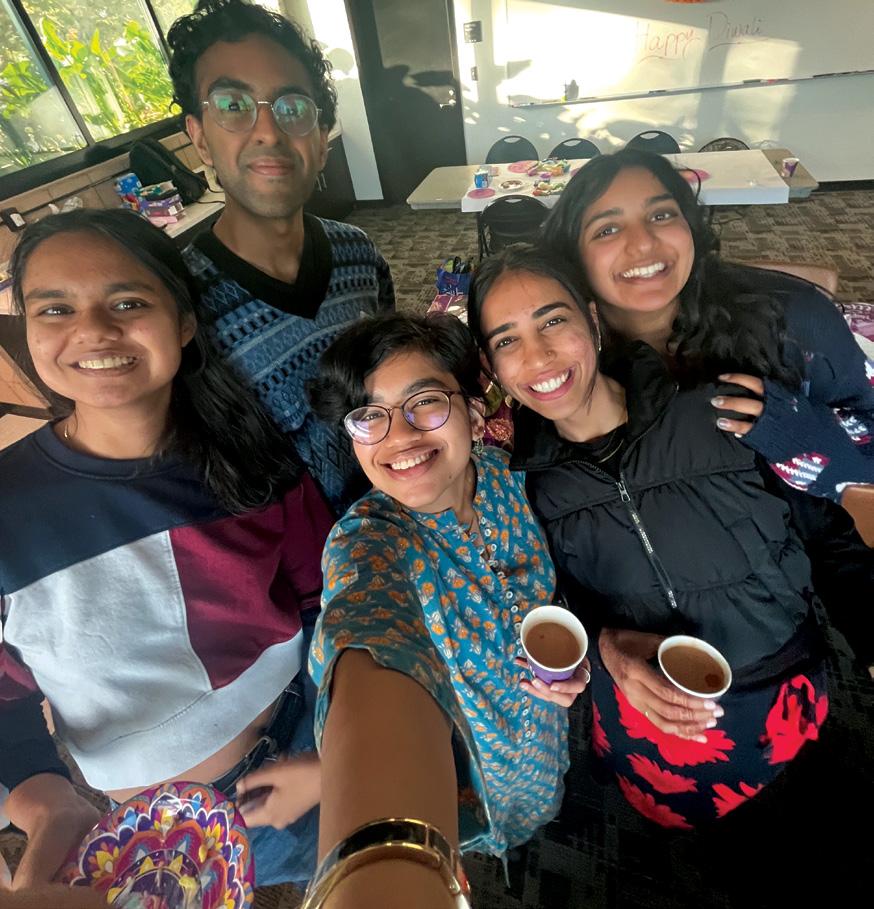
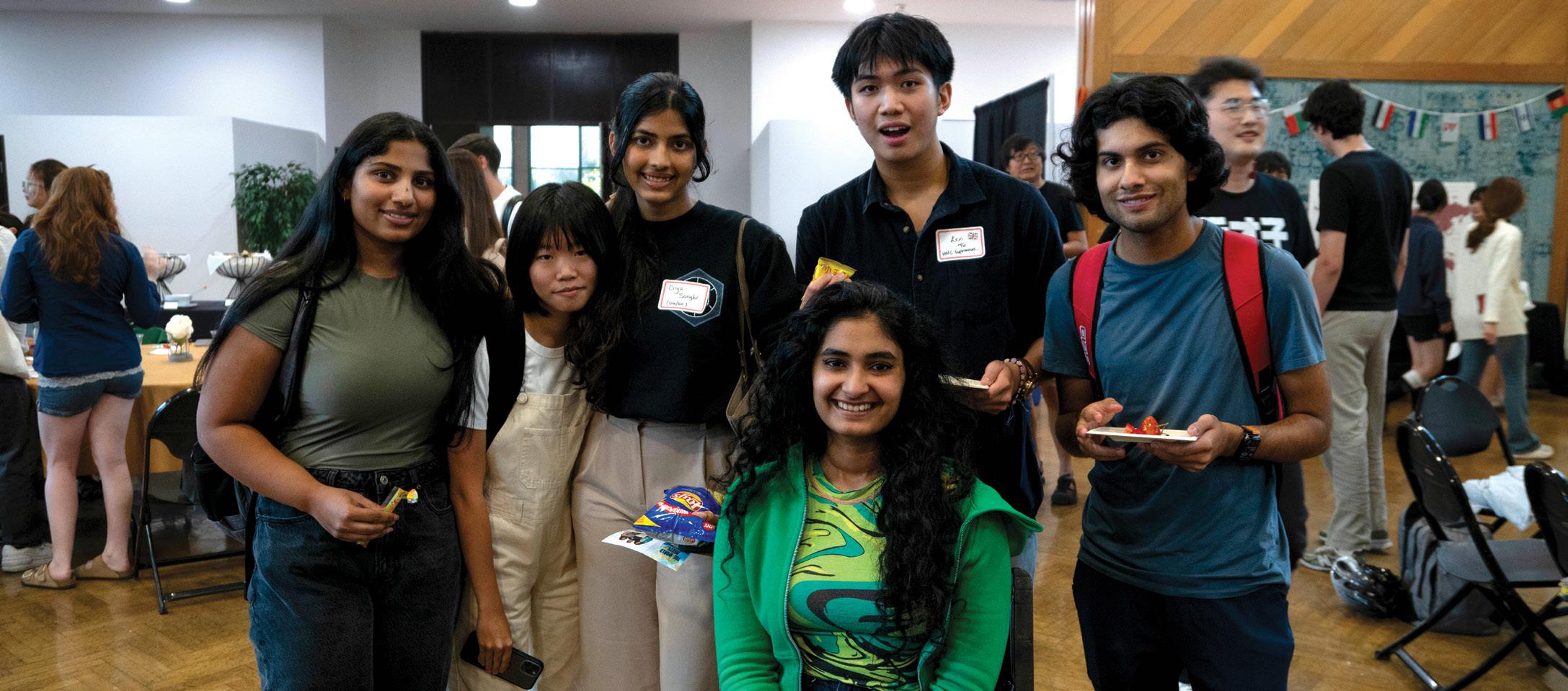
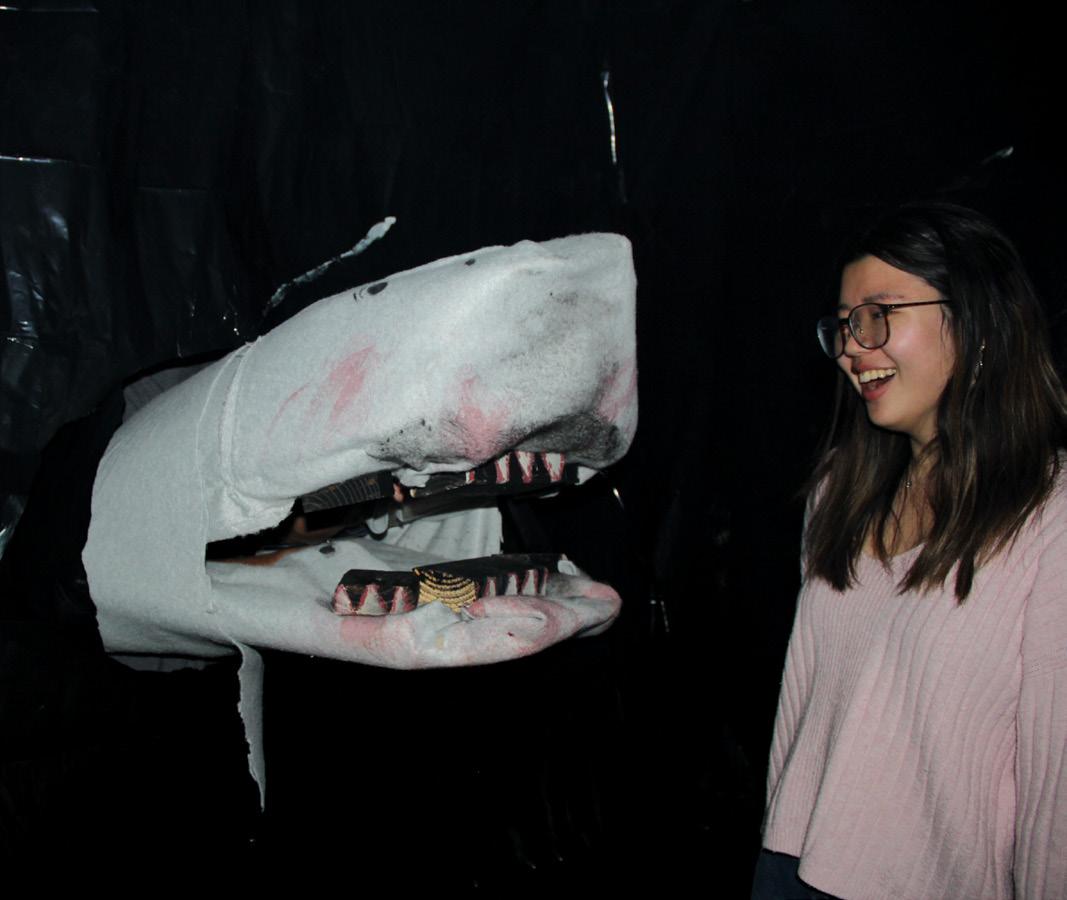
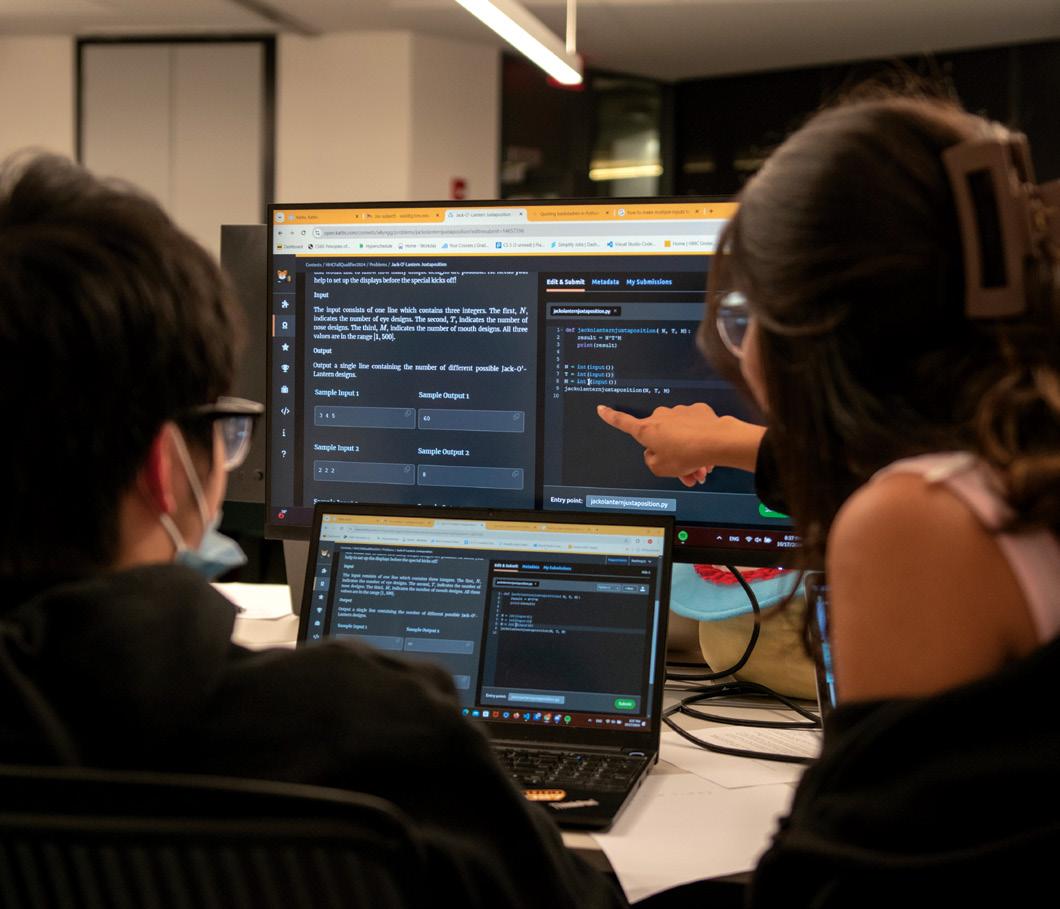

8 Why AI Won’t Destroy Education
Sal Khan, the founder of Khan Academy, discusses the nonprofit’s groundbreaking integration of AI technology during the fall Nelson Lecture Series.
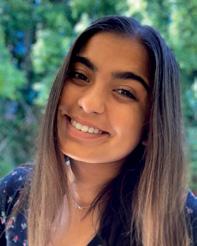
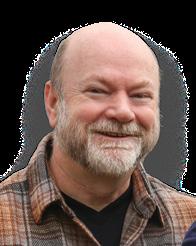
29 Reflections on a Journey Back to Harvey Mudd
Phil Lockwood ’95 (and ’24) describes a decades-long journey in pursuit of his Mudd degree.

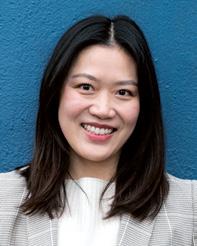
15 An Ace on the Court and in the Classroom Tennis champion,engineering researcher and Astronaut Scholar Alisha Chulani ’25 enjoys success.
18 Mudder of Reinvention
Have a dream? Michelle Gordon ’94 says, “Go for it.”
22 A New Way to Fly
Sarah Wang ’17 sets her sights on a cleaner, greener way to travel.
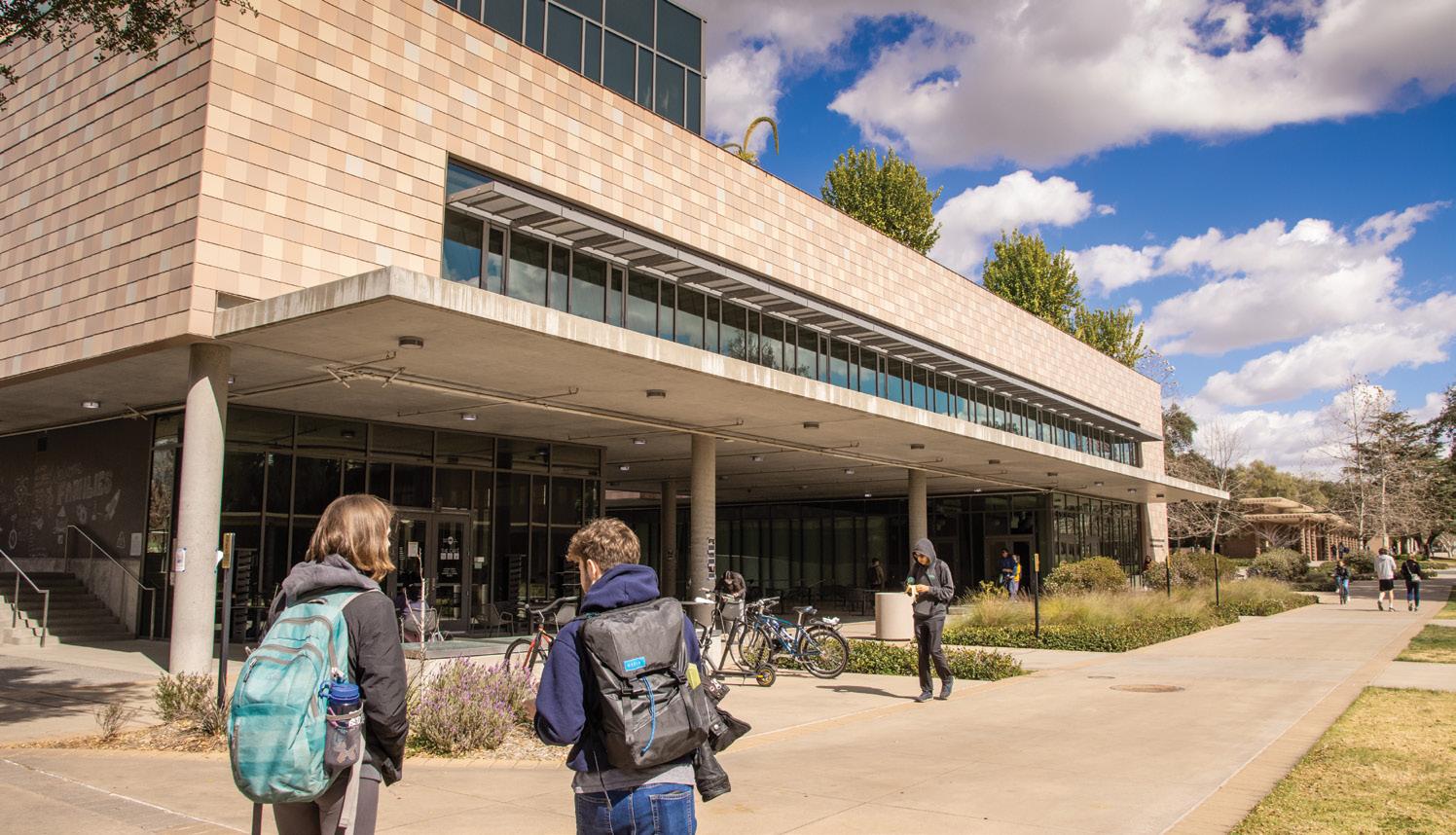
Fall/Winter 2024–2025 Volume 25, No. 1
Mudd Magazine is produced two times per year by the Office of Communications and Marketing.
Senior Director of Communications, Senior Editor
Stephanie L. Graham, APR
Art Director Robert Vidaure
Senior Graphic Designer Joshua Buller
Associate Directors
Sarah Barnes, Muneeza Tahir
Contributing Writers
Dominic Indolino, Jen A. Miller, Brenda Rees
Contributing Photographers
Seth Affoumado, Max Buchanan ’27, Anita Nowacka, Ananya Purwar ’26, Lindsey Sands ’27, Sid Tchanyoum ’25, Caroline White
Vice President for Communications and Marketing/Chief Communications Officer Timothy L. Hussey, APR
Mudd Magazine (SSN 0276-0797) is published by Harvey Mudd College, Office of Communications and Marketing, 301 Platt Boulevard Claremont, CA 91711.
Nonprofit Organization Postage Paid at Claremont, CA 91711
Postmaster: Send address changes to Harvey Mudd College, Advancement Services, 301 Platt Boulevard, Claremont, CA 91711.
Copyright © 2025—Harvey Mudd College. All rights reserved. Opinions expressed in the Mudd Magazine are those of the individual authors and subjects and do not necessarily reflect the views of the College administration, faculty or students. No portion of this magazine may be reproduced without the express written consent of the editor.
Mudd Magazine staff welcomes your input: communications@hmc.edu or Mudd Magazine, Harvey Mudd College, 301 Platt Boulevard, Claremont, CA 91711 magazine.hmc.edu
Follow Harvey Mudd College Instagram, Threads – @harvey_mudd Facebook – @harveymuddcollege LinkedIn – harvey-mudd-college


Iris’ Legacy
Iris Critchell’s words “Harvey Mudd is a special place. It is worthy of special endeavors.” left an indelible mark on me. When I first met her in 2023, her wisdom and warmth were undeniable. A pioneering pilot, Olympian and mentor, she embodied resilience and passion. Her belief in our community fueled my own vision, inspiring our strategic planning. Iris’ legacy will forever shape Harvey Mudd’s future.
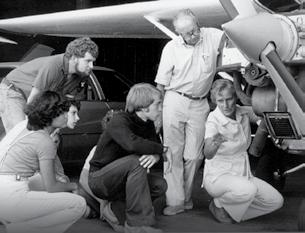

i am filled with gratitude for this incredible community and the opportunities that lie ahead. Despite the challenges we faced last semester, including the profound loss of two cherished members of our HMC family— Arjun Vattipalli and Olivia Guerrero—your care for one another and your enthusiasm for our shared mission continue to inspire me. Their memories will remain a part of the fabric of our College, and I encourage you to read more about their remarkable contributions on page 15.
This spring, we embark on an exciting journey together, one filled with opportunities to gather, connect, and advance Harvey Mudd College’s mission and strategic goals. Among the highlights of this semester is the launch of our Innovation Accelerator, a key initiative born from our community-wide strategic planning conversations. The Accelerator is designed to bring bold ideas to life by providing over a million dollars in internal grants to support transformative initiatives that align with the four overarching goals of our strategic plan and have the potential to shape the future of our College and its impact on the world.
The process began last fall with a call for innovative proposals, which were shared with the Board of Trustees and participants at the Saddle Rock retreat. Six teams were selected to advance to the seed stage, receiving additional funding to develop their proposals further. This spring, these teams will present their visionary ideas to our community and external stakeholders at the inaugural Innovation Showcase on April 4, a daylong celebration that will spotlight the innovative pedagogy, courses and projects that define Harvey Mudd College. It will also provide a glimpse into our future campus building projects and serve as a milestone in the implementation of our strategic plan. This is an extraordinary opportunity to witness the creativity
and dedication of our faculty and staff as they work together to turn big dreams into actionable solutions. Four initiatives will receive development grants to begin implementation in fall 2025.
In addition to the Innovation Showcase, other signature events are planned for the spring semester. The spring Annenberg Leadership Forum and Alumni Weekend are just a few of the opportunities to connect and celebrate our shared achievements. These events offer meaningful ways to deepen our relationships and strengthen our sense of community.
As we gear up to honor Harvey Mudd’s 70th anniversary (see page 33), let us reflect on the remarkable legacy of our founders and the many individuals— like Iris Critchell (page 4), C. Dean RasmussenP’93 (page 5) and Alden Pixley (page 14)—who have shaped this College. Let us also look ahead with hope and determination, knowing that our collective care and brilliance can drive positive change for our campus, our society, and our planet. Thank you for all that you bring to our community.
Harriet B. Nembhard President Harvey Mudd College

We celebrate the incredible life of Iris Cummings Critchell: pioneering pilot, Olympic athlete and beloved Harvey Mudd mentor. A trailblazer in aviation and education, Iris inspired generations with her passion for flight and her dedication to our students. Reflecting on her career at Harvey Mudd, Critchell once said, “I loved the opportunity to bring stories of sharing the privilege of flight with each generation of students and to follow their aero, space and life accomplishments.” Her legacy lives on through those she mentored and the countless lives she touched. Read more about her remarkable journey and lasting impact on our community.
hmc.edu/in-memoriam/iris-cummings-critchell

Harvey Mudd College graced the famous NASDAQ billboard in Times Square after being named No. 2 for best overall student experience in the Wall Street Journal/College Pulse 2025 national college rankings. All undergrad Claremont colleges ranked within the Top 12 for best student experience.


This magazine includes a copy of the College’s Strategic Plan, approved by the board of trustees at its January meeting. The plan, beginning on page 34, outlines the College’s vision, which includes helping the next generation of STEM leaders blend technical expertise with a deep understanding of ethical, social and environmental considerations to develop solutions that benefit humanity and the planet.
Jennifer Eccles joined the College in October as vice president for advancement. Eccles began her career in higher education advancement as a student worker at the University of Idaho Foundation. Since then, she has held development roles at the University of Washington, Washington State University, and the University of Southern California, where she spent a decade leading fundraising initiatives at the Sol Price School of Public Policy and USC Libraries. She joins HMC from the Giant Magellan Telescope Corporation, an international consortium dedicated to building one of the world’s most powerful observatories, where she served as vice president of development and external relations.
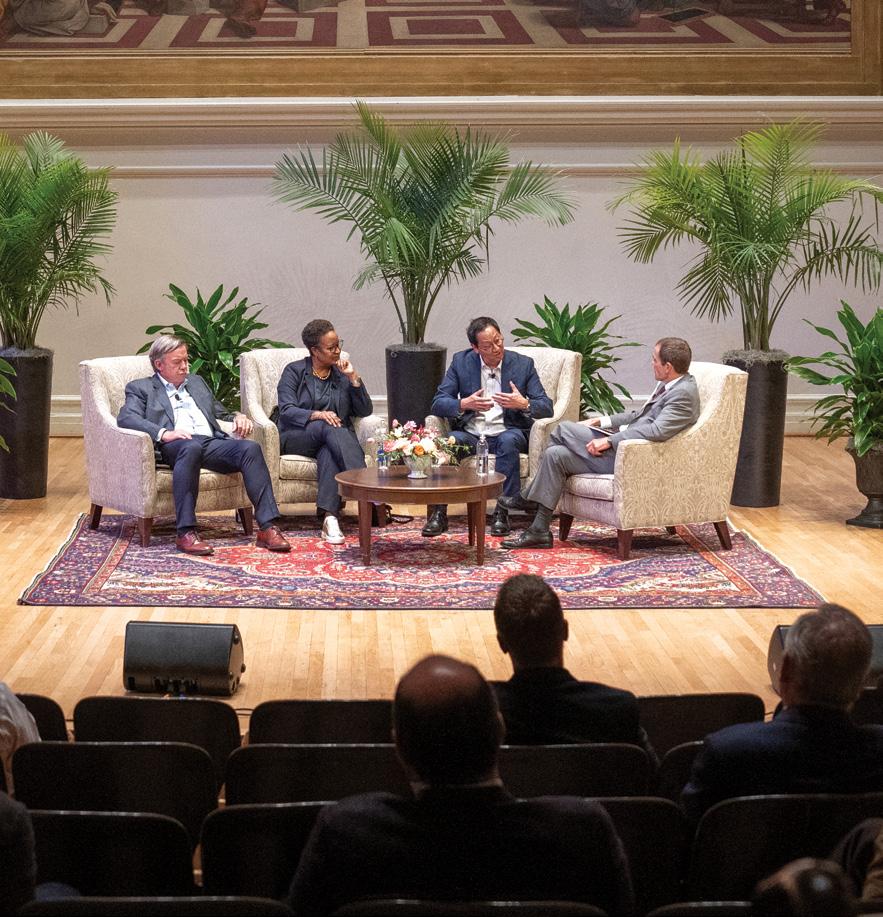
President Harriet Nembhard was an invited panelist for the signature event of University of Virginia’s Futures Initiative Speaker Series. She was one of four university and college presidents discussing how each institution is boldly taking on the future. Moderated by UVA
President Jim Ryan, Nembhard was joined by Michael Crow, president of Arizona State University, and Santa Ono, president of the University of Michigan, to discuss a variety of topics, including serving diverse learners, helping faculty drive innovation, partnership opportunities, and threats and opportunities for higher education.

Jim Bean ’77 reelected chair of the board for two-year term
Albert Lee, Justin Peterson ’85, Autumn Preskill ’09 and Jessica Skon reelected for three-year terms
Obosa Obazuaye ’14 elected as recent graduate trustee
Bruce DePriester ’74 elected as advisory trustee
Mike Curtis and Jason Fennell ’08 named emeritus trustees
Karen Morrison ’08 elected for three-year term
Wilson Receives Oscar Engineering graduate and trustee Michael G. Wilson ’63 and Barbara Broccoli, his sister, received The Irving G. Thalberg Memorial Award, an Oscar statuette, which is presented to creative producers “whose body of work reflects a consistently high quality of motion picture production.” Wilson and Broccoli are producers of the James Bond film series.

C. Dean Rasmussen P’93, who believed in the power of education to transform lives, died in July 2024. While serving on the board (1991 to 2003), he played a pivotal role on the Physical Plant and Campus Planning Committee, shaping key decisions and providing invaluable guidance. In addition to serving on the Parent Leadership Council, he also supported the College by funding scholarships and by giving to the Ronald and Maxine Linde Activities Center Construction Fund and the Carl A. Rasmussen Endowed Fund, which supports research projects related to environmental studies under the Hixon Center.
ANNENBERG LEADERSHIP FORUM
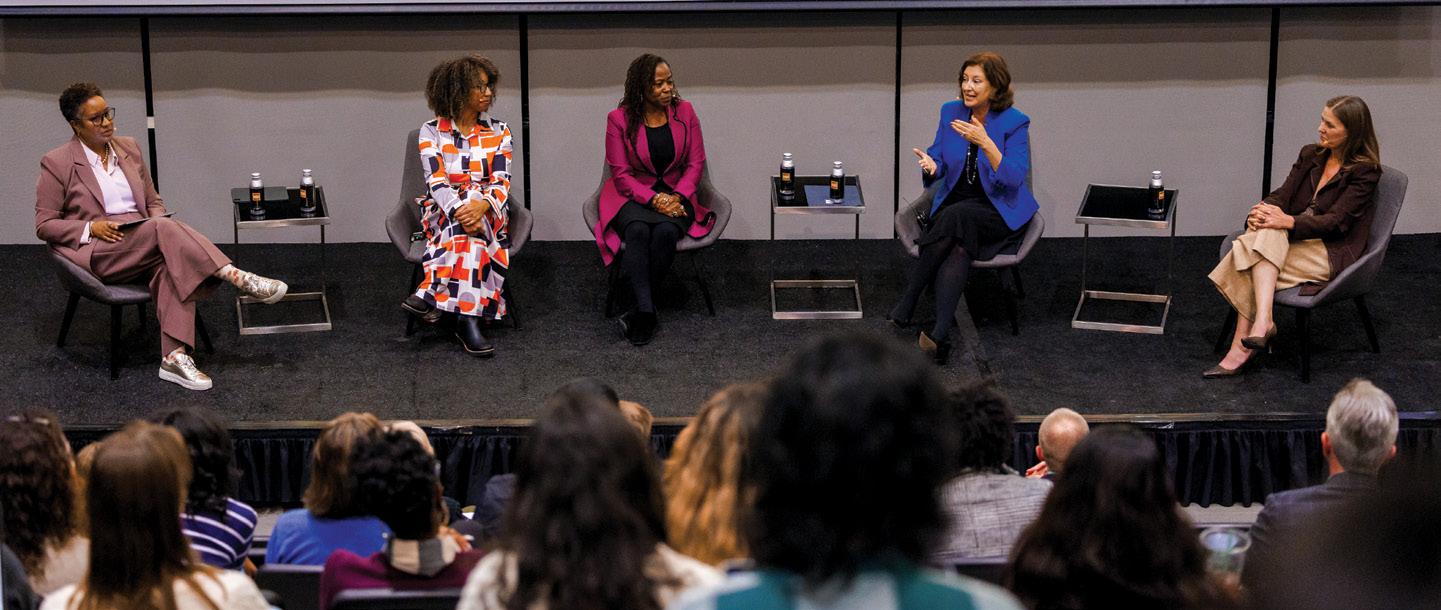
the global pursuit of achieving the UN Sustainable Development Goals (SDGs) by 2030 remains an urgent endeavor. The panel discussion, “The Future of Sustainable Development: Technology and Education at the Forefront,” on Oct.30 brought together professionals from education, industry and science to discuss innovative approaches to addressing global challenges and the interconnected roles of technology, education, collaboration and inclusivity in driving progress toward the SDGs.

collaboration in space exploration, as well as the importance of gender equity and values-driven leadership. As JPL’s first female director, Leshin’s perspective served as a powerful call for inclusive leadership in advancing the SDGs.
The discussion, held on the eve of the 29th United Nations Climate Change Conference (COP29), began with an overview of the SDGs and review of advancements in critical areas, such as vaccines, clean water and education. President Harriet Nembhard set the stage to explore how national efforts, technological advancements and innovative educational approaches are advancing these goals globally. On hand to provide varying perspectives were Shaundra B. Daily, Cue Family Professor of the Practice, Duke University; Ayanna Howard, dean, College of Engineering, The Ohio State University; Laurie Leshin, director, NASA Jet Propulsion Laboratory; and Yvonne Wassenaar, Harvey Mudd trustee and start-up advisor.
Daily highlighted the importance of building community capacity and breaking down entrenched power systems in education. Her work, particularly through the Alliance for Inclusive Computing Education, directly aligns with SDG priorities, including quality education, gender equality and reducing inequalities. Daly emphasized the importance of inclusive learning environments, professional development, and policy reform to prepare educators and administrators for more equitable STEM classrooms.
Howard reflected on the fundamental human rights underpinning sustainable development—access to food, housing, healthcare and meaningful employment. Sharing personal experiences in science and robotics, she underscored the value of technology in addressing unmet needs, such as designing robots for children with special needs.
Understanding how the earth changes and evolves is key to informing climate action. Highlighting JPL’s pivotal role in earth science, Leshin connected missions like surface water and ocean topography to understanding global environmental changes. She emphasized the role of government funding and global
Wassenaar, a champion of using modern technology to drive a safer, more efficient and innovative planet, emphasized the need for rethinking how we approach the SDGs. “To truly meet the sustainability goals on a global basis requires that we have a lot of diversity in terms of experience, perspectives, sense of self and community coming to the table to think about the problems,” said Wassenaar. She shared an example of a Nigerian startup safely delivering medicine to underserved communities, a story which underscored the importance of fostering local innovation and supporting entrepreneurial ecosystems to address urgent needs.
Panelists explored how technology and education must intersect to prepare future leaders. Discussions centered on technology-rich learning environments, the role of artificial intelligence and fostering curiosity. They emphasized breaking down barriers between disciplines and creating opportunities for shared learning between faculty and students.
Partnerships emerged as a central theme in the discussion, and panelists underscored the importance of collaboration across government, academia and industry. Harvey Mudd’s Clinic Program and JPL’s global earth science missions demonstrate the power of collective action in scaling innovations and meeting SDG targets.
The role of advocacy in shaping policies, particularly around technology and education, was another key topic. Panelists emphasized the need for bold leadership to challenge outdated systems and promote policies that advance sustainability goals. They highlighted the value of humanities and liberal arts in questioning and guiding the ethical use of technologies like AI.
The discussion concluded with a call for continued innovation, collaboration and attention to the goals, encouraging participants to contribute to sustainable development efforts.
By Jim Bean ’77 Chair, HMC Board of Trustees
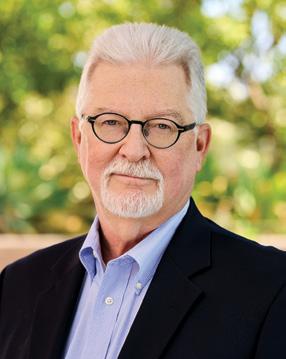
as i reflect on this past year, I celebrate the achievements and collaboration that have strengthened our community. Like many institutions, HMC has navigated challenges, including protests about ongoing global conflicts and discussions about partnerships with defense companies. We are committed to inclusive dialogue that reflects the diverse perspectives of our community. These conversations, along with our strategic planning process, help ensure the College continues to uphold its mission and values.
The academic year 2023–2024 marked the beginning of President Harriet Nembhard’s tenure, culminating in her formal inauguration last spring. The Presidential Transition Task Force was pivotal in creating opportunities for President Nembhard to connect with the campus community. The Community Connections initiative fostered dialogue around aspirations and priorities that informed the College’s strategic plan. These efforts underscored the importance of open communication, collaboration and shared values as we chart a course for the future.
Developing a robust strategic plan is a key priority, with broad input from the community serving as its foundation. The board of trustees and task forces are engaging deeply with this process, ensuring alignment with the College’s mission. We are partnering with a well-known consulting firm to help envision a campaign that will identify critical pillars based on strategic planning outcomes,
guiding us toward ambitious goals that will enhance the College’s impact and sustainability.
Harvey Mudd faculty, which increased by nine for academic year 2023–2024, continued making advances in their fields and sharing their progress on campus and beyond. Among the media highlights were stories about sociologist Alfred Flores and mathematician Francis Su whose recent books received accolades, Darryl Wright on issues of abortion and IVF, Gordon Krauss for helping shape Waterloo Engineering’s Sustainability and Social Entrepreneurship Fellowship Program, biology professor Catherine McFadden for her work on soft corals and bioluminescence, and Talithia Williams for her work in statistics and inclusive education. Students, working in tandem with faculty members, also brought recognition to the College through their varied endeavors. Harvey Mudd students developing a drone that can search for metal landmines were featured by several media outlets, and senior Nathan Hasegawa celebrated his second New York Times crossword puzzle.
The College made progress on several initiatives, including the Entrepreneurship Studio pilot program; our first Innovation Accelerator, designed to provide significant funding for faculty and staff initiatives aligned with the strategic plan; and the Hixon Center for Climate and the Environment. The Hixon Center doubled its joint hires (from two to four), created five new climate courses in as many disciplines, passed into existence two new climate joint majors, renovated its physical space in the Olin building and hosted a first-ever conference on undergraduate climate education. This growth reflects the College’s commitment to addressing the
multifaceted challenges presented by our changing climate.
The board advanced its work to diversify its membership, supporting the College’s efforts to lead the national discussion regarding DEI in STEM and ensuring adequate resources for programming. This commitment remains integral to creating a culture of access, inclusion and belonging, as well as fostering a diverse community that thrives together.
As we gear up for strategic initiatives, campaign planning and changes at the national level, the board is energized by the passion and dedication of our students, faculty, staff and alumni. Together, we will ensure Harvey Mudd College remains a leader in liberal arts education and a beacon for innovation, diversity and excellence.
On behalf of the board of trustees, I extend my gratitude to all who contribute to the success of Harvey Mudd College. We look forward to the opportunities that lie ahead and to working collaboratively to achieve our shared vision for the future.
For more details about the past academic year, including financial and fundraising reports from the Business Affairs Office and the Office of Advancement, review the online annual report at hmc.edu/annual-report

sal khan, the founder of khan Academy, recently discussed the nonprofit’s groundbreaking integration of AI technology. The centerpiece of this initiative is Khanmigo, an AI tutor designed to provide personalized learning support to students.
Khan Academy’s journey began with Khan tutoring his cousins, an experience that highlighted the challenges of learning gaps and inspired him to leverage technology for personalized education. Khanmigo, developed in collaboration with OpenAI, represents a significant step toward this vision.
AI’s Potential
Khanmigo’s capabilities extend across various subjects, assisting students with math problems, programming challenges and writing assignments. The AI tutor’s ability to simulate conversations with historical figures and literary characters adds a unique dimension to learning, fostering engagement and deeper understanding.
Khan emphasized that AI’s role is to enhance, not replace, human interaction in education. He said, “The questions about
cheating and privacy and hallucinations and math errors—we said, those aren’t reasons to run away. Those are issues to mitigate. We have to move forward if we’re really serious about using this technology for good.”
The goal is to empower teachers, providing them with tools to create more effective and engaging lesson plans, while freeing up their time for meaningful student interactions.
Khan believes that AI’s impact on education will depend on how it’s used. The integration of AI in education is not without its challenges. Concerns around anthropomorphization (the extent to which AI should be given human-like qualities), student dependency, misinformation, bias and accountability must be carefully addressed. Khan acknowledged these concerns, emphasizing the importance of responsible AI development.
Khan envisions a future where AI serves as a powerful tool for amplifying positive
human intent. By harnessing AI’s potential, Khan Academy aims to make quality education more accessible, personalized and engaging for learners worldwide. The organization’s commitment to free, world-class education remains, with AI playing a pivotal role in achieving this mission.
The integration of AI in education is still in its early stages, but Khan Academy’s work with Khanmigo offers a glimpse into the transformative potential of this technology. As AI continues to evolve, its impact on education promises to be profound, shaping a new era of personalized and accessible learning.
Khan spoke as part of the fall 2024 Dr. Bruce J. Nelson ’74 Distinguished Speaker Series, “Learning in the Age of AI.” For a different take on the technology’s use and potential, view talks by series speakers John Warner (“Resist, Renew, Explore: Human Values in the Age of AI”) and Emily M. Bender (“Don’t Try to Get Answers from a Stochastic Parrot”), available on HMC’s YouTube channel: bit.ly/nelsonseries-harveymudd
“To be an ambassador, to be a symphony, to make mathematics meaningful, remember what that joy is and shine it forth to the people [with whom] you interact.”
Award-winning Australian educator and “Wootube” host Eddie Woo presented “The Meaning and Meaningfulness of Mathematics” as part of the 2024 Michael E. Moody Lecture Series. View talk on HMC’s YouTube channel: bit.ly/moodylectures
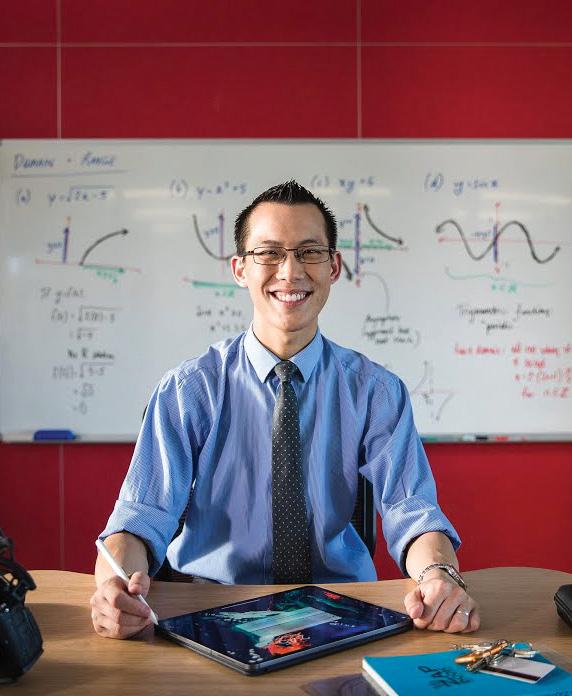
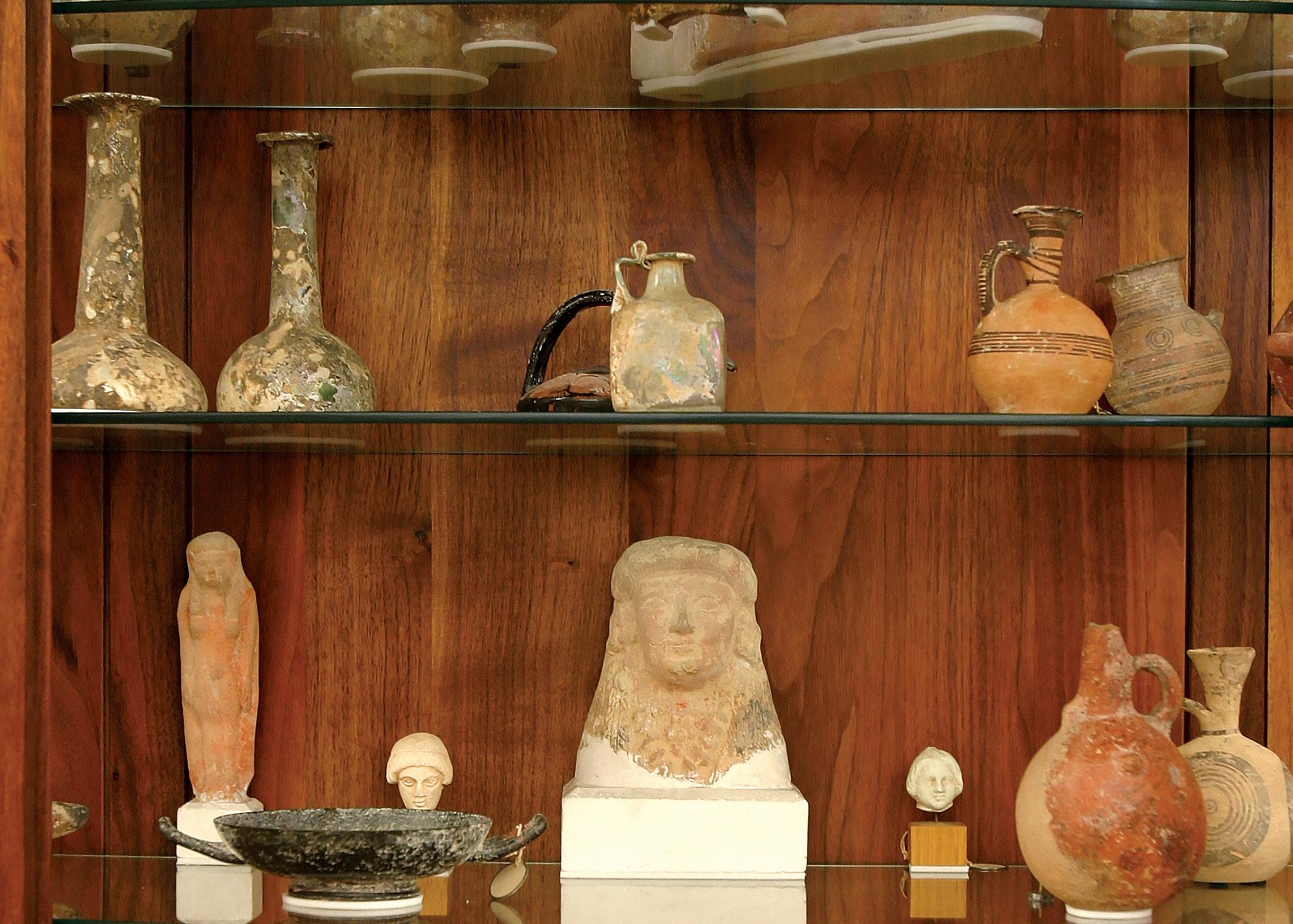
VP and Dean of Faculty Tom Donnelly met with Vasiliki Kassianidou, deputy minister of culture of Cyprus, and H.E. Savva, ambassador of the Republic of Cyprus, to celebrate the repatriation of the College’s Cypriot artifact collection. The visit concludes a process that began in 2018 between then HMC President Maria Klawe and the University of Cyprus. Harvey S. Mudd, the namesake of the College, began collecting the artifacts after he became president of the Cyprus Mines Corporation on the island of Cyprus in 1916. With permission of the Cyprus government, Mudd exported many items to his home in California, and the Mudd family later donated them to the College. The collection of more than 200 items, which has been housed at Harvey Mudd and Scripps colleges, includes an Athenian drinking vessel from the fifth century BCE; an oil lamp from 1500 BCE; and the oldest item a red, ceramic Cypriot drinking bowl circa 2,300–2,000 BCE.
ANNENBERG LEADERSHIP FORUM
Workshop led by HMC President’s Scholars inspires participants to shape their campus and community for the better
as part of the fall 2024 annenberg Leadership Forum, HMC President’s Scholars Leila Bensaid ’26, Brock Bownds ’27, Broderick Bownds ’27, Miranda Brandt ’26, Octavia Herai Garrison ’28, Isabelle Kemp ’25 and Marcella Todd ’25 hosted a Lunch and Learn session. Through presentations and discussions, the student leaders highlighted the importance of the United Nations’ Sustainable Development Goals (SDGs), emphasizing their alignment with HMC’s mission and showing how current research at Harvey Mudd has a potential impact on these global challenges.
Ratified by all UN member states in 2015, The SDGs are a set of 17 global goals aimed at achieving a more sustainable and inclusive world by 2030 and cover areas like poverty eradication, quality education and climate action. The goals are interconnected, with success in one area often supporting success in others, and they encourage collaboration between governments, businesses and individuals. Despite progress (a reduction in global infant mortality and increased access to water and sanitation), only 17% of targets are on track, hindered by COVID-19 and geopolitical tensions. At the fall forum, President’s Scholars highlighted various research initiatives at the College that align with multiple SDGs and underscored the importance of interdisciplinary collaboration and research in achieving global sustainability goals. Education and exposure to the SDGs can help Mudders continue to promote and work toward these goals in their careers. HMC is applying to join the UN Sustainable Development Solutions Network, a group of organizations achieving the SDGs worldwide.
of Research at HMC that Aligns with SDGs
Engineers are working on heat pump systems to reduce CO2 emissions. The project focuses on making heating systems more efficient by using heat pumps and energy storage systems, targeting cold climate areas and multi-family residences. The work is part of a collaboration with the Department of Energy, national labs and companies. Dre Helms, assistant professor of engineering
Faculty members are developing a curriculum that incorporates ecological impact, social impact and ethics to create engineers conscious of their work’s broader impact. Engineering professors Leah Mendelson, Sophia Bahena, Whitney Fowler, Dre Helms
SDGs are a set of 17 global goals aimed at achieving a more sustainable and inclusive world.
Research to detect water purity using self-assembling nanofibers aims to provide a low-cost method for international communities. Researchers are engineering nanofibers to detect synthetic materials and hazardous substances in water, contributing to improved water quality. Whitney Fowler, assistant professor of engineering
Non-invasive methods for analyzing plant root systems are being studied. Researchers use optical techniques to measure crop health, contributing to agricultural sustainability and environmental health. Josh Brake, assistant professor of engineering
Research on wavefront shaping through flexible multi-fiber bundles could improve optical technologies for brain imaging

and interventions. Wavefront shaping and neurophotonics enables scientists to observe, monitor and manipulate brain activity, potentially leading to better treatments for mental health conditions and neurodegenerative diseases. Josh Brake, assistant professor of engineering
Research on atmospheric chemistry focuses on understanding the impact of air pollution on climate and health and involves collaborating with other scientists in the U.S. and abroad to measure air pollution properties. Lelia Hawkins, Professor of Chemistry and Hixon Professor of Climate Studies, director of the Hixon Center for Climate and the Environment; Chris Clark, professor emeritus of engineering; Julie Medero, associate professor of computer science
Researchers are studying green energy initiatives, promoting sustainable practices in waste management and
discovering ways to reduce exposure to toxic substances. Work includes efforts to transition undergrad labs to greener alternatives and collaborations with biologists and other experts. David Vosburg, Donald A. Strauss Endowed Professorship in Chemistry
A National Science Foundation grant for a project involving Math for America Los Angeles, founded in 2007 by USC, Claremont Graduate University and Harvey Mudd, aims to improve access to high-quality math and CS instruction in secondary schools. The project funds 34 master fellows who create improvement plans for their schools’ math and CS programs and participate in professional development, advocating for equal access to higher education. Zach Dodds, LeonhardJohnson-Rae Chair in Computer Science; and Colleen Lewis, associate professor of computer science, University of Illinois Urbana-Champaign; Karen Gallagher,
and
Researchers are developing a crossverification approach for identifying deep fake material, using a two-hypothesis method to test authenticity of audio-visual content. TJ Tsai, associate professor of engineering
In collaboration with experts in cardiology at UCLA, HMC researchers are using tensor models for cardiac imaging to provide a diagnostic tool with potential applications in reducing gender inequality in medical diagnoses. Jamie Haddock, Iris and Howard Critchell Assistant Professor of Mathematics
Biology
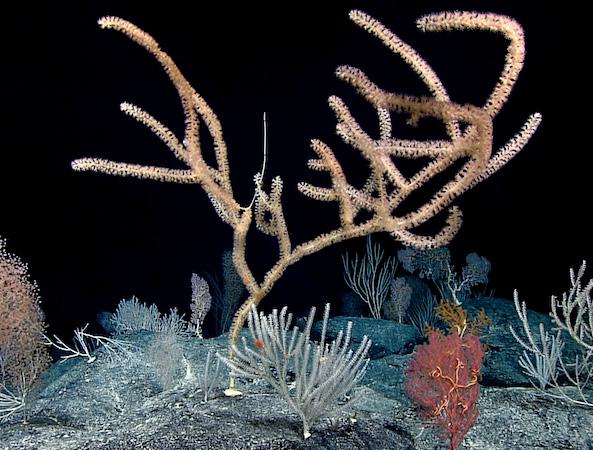
Which octocorals produce bioluminescent proteins? How do such organisms relate to one another? When did this ability to make these proteins evolve? A study co-authored by Cathy McFadden, Vivian and D. Kenneth Baker Professor in the Life Sciences, seeks to answer these questions and more. “Evolution of bioluminescence in anthozoa with emphasis on octocorallia,” was published in Proceedings of the Royal Society B, the main research journal of The Royal Society of London for Improving Natural Knowledge. Fellow co-authors include Danielle DeLeo, research associate at the Smithsonian Institution’s National Museum of Natural History (NMNH); Steve Haddock ’88, senior scientist and marine biologist at the Monterey Bay Aquarium Research Institute; and Andrea Quattrini, curator of corals at NMNH and a former postdoc researcher in McFadden’s lab. In addition to its potential for further application in biomolecular research, the study is the first to date bioluminescence among octocorals in evolutionary terms. “The distribution of this trait we’ve seen in octocorals suggests it evolved for them more than 550 million years ago, suggesting they would have been among the first bioluminescent animals,” says McFadden.
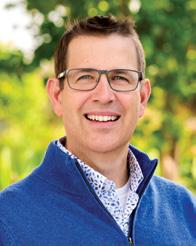
Karl Haushalter will be the next vice president for academic affairs and R. Michael Shanahan Dean of the Faculty, effective July 1. Currently chair of the Department of Chemistry and Seeley Wintersmith Mudd Professor of Chemistry and Biology, he has been a faculty member since 2003. A distinguished scholar and educator, he brings to the role over two decades of teaching and leadership experience as well as a steadfast commitment to academic excellence and innovation.
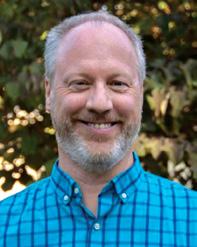
Adam Johnson received the 2024 James Flack Norris Award for Outstanding Achievement in the Teaching of Chemistry. This prestigious award, given by the Northeastern Section of the American Chemical Society, recognizes Johnson’s exceptional contributions to the field of chemistry education, particularly through the groundbreaking Interactive Online Network of Inorganic Chemists (IONic) project, as well as his dedication to mentoring future teacher-scholars in inorganic chemistry. Johnson and his co-awardees were commended for their creation and ongoing leadership within the IONiC, which stemmed from Johnson’s idea of bringing together inorganic chemists to talk about teaching.

At a Claremont Colleges
Library Discourse talk in October, Professor of Climate and Chemistry
Sarah Kavassalis discussed “When Plants Pollute: Navigating the Ambiguities of ‘Best Available Science.’”
David Vosburg, Donald A. Strauss Professor of Chemistry, received the 2025 Teaching Green Fellowship awarded by the American Chemical Society Green Chemistry Institute. The fellowship recognizes educators who have contributed substantially to green and sustainable
chemistry education and includes $10,000 in summer salary, a $5,000 student research stipend and conference travel support.
Lynn Kirabo, Jim Boerkoel and HMC students attended the 2024 Tapia Conference where attendees hear about current topics in tech, learn about effective strategies for success in professional careers from diverse perspectives, pursue career options, seek opportunities for graduate studies and work together to increase diversity in computing.
Professors Whitney Fowler, Leah Mendelson and Sophia Bahena are leaders on a National Science Foundation grantfunded project that will help Harvey Mudd engineering faculty, undergraduate students and interdisciplinary climate experts enhance how student engineers evaluate the environmental, social and ethical impacts of their professional practice.
Fowler specializes in systems thinking and in developing molecular systems that address global challenges in water sustainability and health. Mendelson, an expert in bio-inspired fluid mechanics and prototyping for curricular change, is a recent NSF grant recipient for her underwater propulsion research. Bahena, whose research focuses on alternative water treatment and the water-energy nexus, has expertise in environmental engineering. The project— “Prototyping a Systems Thinking Framework to Foster Environmental and Sociotechnical Thinking Across an Interdisciplinary Engineering Curriculum”—also includes collaborations with engineering professor Dre Helmns and Lelia Hawkins, professor of chemistry and Hixon Professor of Climate Studies.
Humanities, Social Sciences, and the Arts
Alfred Flores has received national recognition for his book Tip of the Spear: Land, Labor, and U.S. Settler Militarism in Guåhan, 1944–1962. He received a Best
First Book Honorable Mention from the Native American and Indigenous Studies Association. He also received an honorable mention award (adult non-fiction) from the Asian Pacific American Librarians Association. Tip of the Spear explores the tension in the history and relationships between the CHamoru people and the U.S. military in Guåhan (Guam). With a grant from the ASIANetwork a (consortium of liberal arts colleges) and the Mellon Foundation, he will document the oral history of the Marshallese people of Southern California.
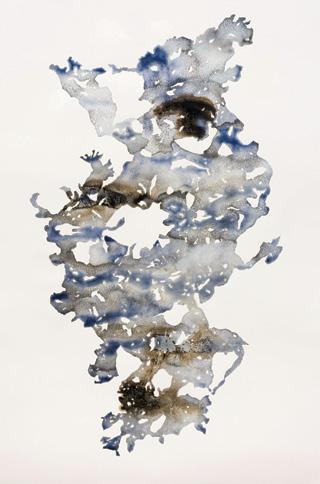
Art professor Rachel Mayeri, architecture professor Jia Yi Gu and Hixon-Riggs Early Career Fellow Isabel Beavers are curators and artists in Getty PST ART: Art and Science Collide, a landmark regional event with more than 70 institutions and over 700 artists exploring the intersections of art and science. Among the ways they participated, Gu curated “Material Acts: Experimentation in Art and Design” at the Craft Contemporary in Los Angeles, Mayeri’s work is included in “Embodied Pacific: Ocean Unseen” at the Birch Aquarium in San Diego, and Beavers’ work is included in “Transformative Currents: Art and Action in the Pacific Ocean” at the Oceanside Museum of Art.
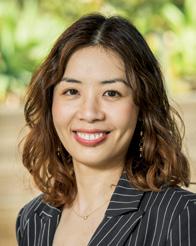
Dede Long, assistant professor of economics, is a co-principal investigator on a $799,343 grant to develop a new set of economic measuring systems that capture the full value of forest ecosystems. Funded by the U.S. Department of Agriculture, the project includes landscape ecologists, an economist and a fire ecologist. HMC student research assistants will work with the researchers to model how climate change and fire risks impact forests. Improving the valuation of forests could help inform future
forest management policies and support economic decision-making and sustainable practices.
Math
Jamie Haddock has been awarded a $402,235 CAREER grant from the National Science Foundation for a project that aims to develop new computational techniques that help solve large-scale mathematical problems in fields like data science and optimization. The project focuses on creating randomized iterative methods that are not only faster and more efficient but can also handle errors, adapt to real-world constraints and manage extremely large data. A new advanced course in numerical linear algebra will be developed, and mentorship opportunities will equip students for a data-driven world.

Haydee Lindo received the 2024 Henry L. Alder Award for Distinguished Teaching by a Beginning College or University Mathematics Faculty Member. The awards committee cited Lindo’s “rigorous yet supportive approach to teaching, [which] is celebrated by students and colleagues alike, rooted in her belief that every student can excel in their course material.”
Francis Su, Benediktsson-Karwa Professor of Mathematics, was elected a Fellow of the American Mathematical Society. The AMS Fellows program acknowledges members who have made outstanding contributions to the creation, exposition, advancement, communication and utilization of mathematics. Su is a former president of the Mathematical Association of America as well as a former American Mathematical Society vice president. His recent book, Mathematics for Human Flourishing, received the 2021 Euler Book Prize and has been translated into eight languages.
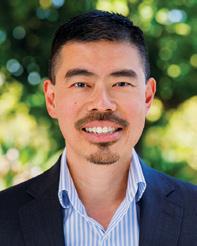
field of math education. The Mathematical Association of America recognizes a pure or applied mathematician who is making a distinguished and active contribution to improving the mathematical education of K–16 students in the United States or Canada. Yong has seven co-authored books, 17 refereed publications in mathematics education and nine NSF grants supporting his work to enhance teacher quality, retention and empowerment, as well as student performance.
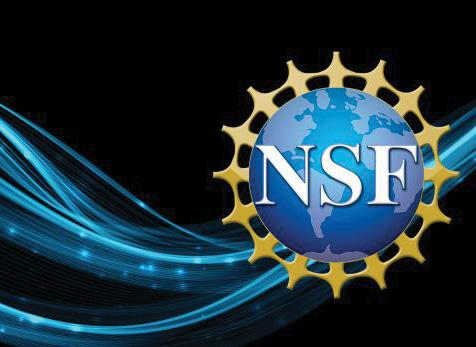
Darryl Yong ’96, “a brilliant teacher of teachers, a true master of his craft,” received the 2024 Mary P. Dolciani Award for outstanding impact in the
Harvey Mudd and Claremont McKenna College received a $918,485 NSF grant to acquire a high-performance computing (HPC) cluster, significantly expanding The Claremont Colleges’ research capabilities across multiple disciplines. The new HPC cluster will provide a powerful mix of CPU and GPU resources, enabling researchers at HMC and CMC to run complex simulations and process massive datasets and will allow students to gain hands-on experience with advanced computational techniques. Harvey Mudd professors Jamie Haddock and Bilin Zhuang played key roles as co-principal investigators by contributing their expertise in mathematics and chemistry, respectively. The project team also includes HMC faculty Sarah Kavassalis, assistant professor of climate and chemistry, Dede Long, assistant professor of economics, and Heather Zinn-Brooks, assistant professor of mathematics. The grant will also expand outreach opportunities, including summer research programs for high school students from underrepresented backgrounds.
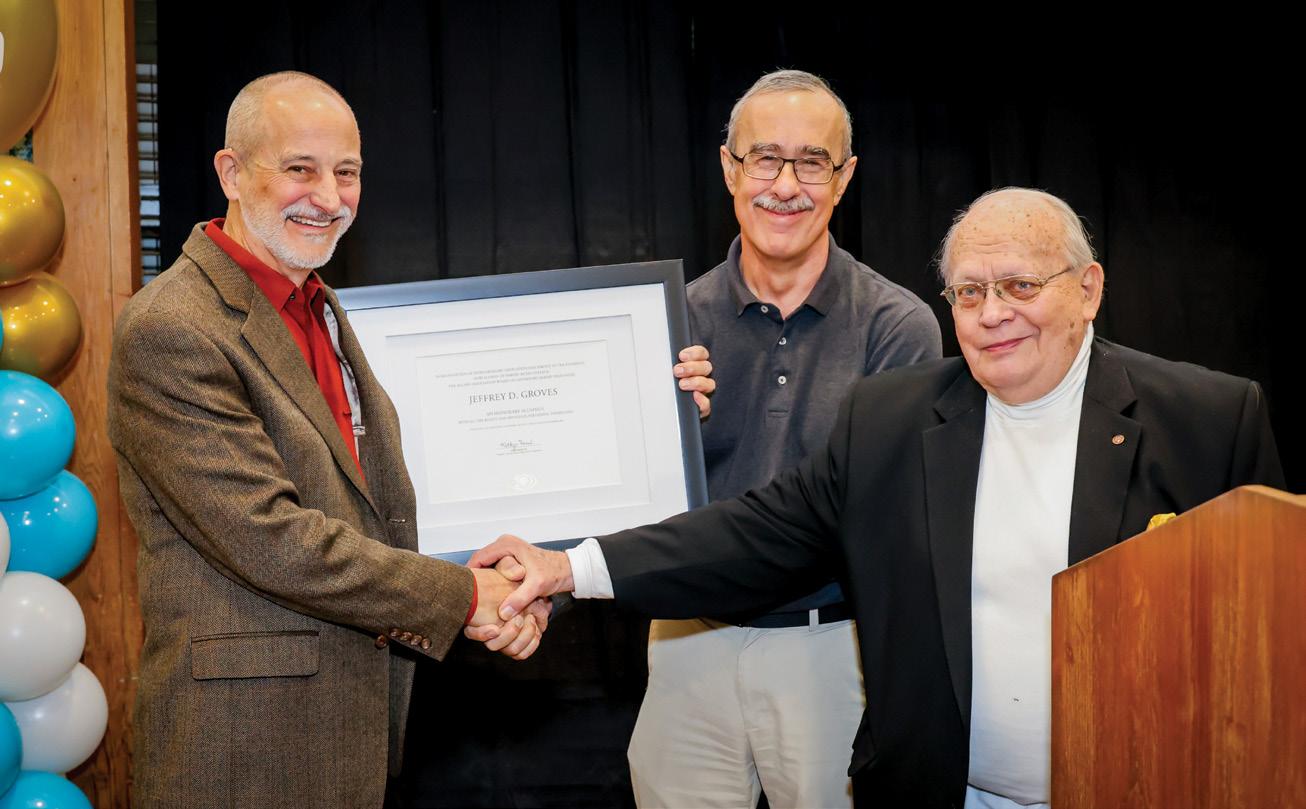
The HMC community celebrated Jeffrey Groves on Dec. 12 for his longtime impact (1980s–2024) in the classroom and beyond. His career at the College was marked by significant achievements in teaching and leadership. He helped organize unique experiences, and his courses spanned various disciplines, including Middle English literature and environmental analysis. Groves played a crucial role in curricular changes and racial inclusion initiatives, leading with wisdom and empathy. Here, he reflects on his time at HMC.
Describe the most memorable teaching moments you had with students. Early: The Shakespeare course I taught for 22 years, which, starting in 1989, included a full production every spring. Mid: Dickens, Hardy, and the Victorian Age, which I co-taught with Jim Eckert, and which took students to England every other year between 2000 and 2023. Late: Building Los Angeles, which I co-taught first with Dan Petersen and later with Char Miller (Pomona), and which took students into Los Angeles to learn about its history, infrastructure and architecture.
Why did you choose to teach at HMC? What will you miss the most?
I chose to teach at HMC because the College offered me a job at a time when jobs were scarce. Having landed here, though, I fell in love with the mission, the consortium, my colleagues (faculty and staff) and my students. I will miss the teaching most—I always loved being in the classroom, especially when the classroom was an outdoor theater, a muddy field in Dorset or a city street.
What are your retirement plans?
More time on woodworking, letterpress printing and gardening. Spending time at our vacation place on the island of Lesvos in Greece.
Fun Facts
On my mother’s side, I’m a fifth-generation Californian. I grew up around horses and mules, and my family regularly engaged in summer horse-packing trips in the Sierras. My wife and I got together when we performed in a modernized version of Hippolytus in college. I was Hippolytus, she was the goddess Artemis, and the play opened with my first line, “Artemis, daughter of Zeus, we salute you.” Still saluting.
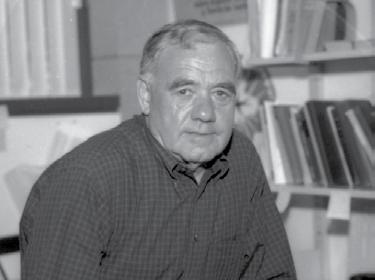
Alden Pixley died Sept. 23 at age 96. In 1961, soon after Harvey Mudd College opened, Pixley moved to Claremont and joined the mathematics department. For many years, Pixley concentrated on teaching and curriculum development and, in the late sixties, was chair of an all-Claremont Colleges committee tasked with helping the colleges collectively address issues tied to diversity on the campuses. He also served as president of the Claremont Colleges Faculty Senate. He served as department chair and made groundbreaking contributions to the field of universal algebra, an area of mathematics concerned with the most general, abstract properties of algebraic systems. Several of his over 40 publications were co-authored by Eastern European mathematicians. Pixley was known for riding his bicycle to work and for swimming with colleagues every day at noon, rain or shine, in the College pool. He retired from Harvey Mudd in 1998.
–Information courtesy of the Claremont Courier
The Harvey Mudd Community grieves the loss of two students who passed away during the fall semester.
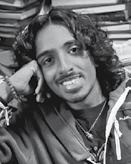
Arjun Shivram Vattipalli ’27 (Oct. 18, 2004–Oct. 22, 2024) was an exceptional student and a kind, supportive friend who touched the lives of many across the 5C campuses.
Vattipalli’s journey at Harvey Mudd reflected a blend of genuine academic passion and personal warmth toward peers and professors alike. He was particularly fascinated by molecular biology and the intricacies of molecular movements. During a summer internship at the University of Colorado Anschutz Medical Campus, he did research on molecular dynamics.
Jae Hur, associate professor of biology, recalls Vattipalli’s curiosity as a student in his Molecular Genetics and Introduction to Biology classes. The two discussed Vattipalli’s work using molecular dynamics simulations. “I think Arjun held a deep joy in working to go behind the scenes to finally understand what movements these molecules might actually be doing.”
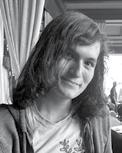
Olivia Guerrero ’25 (Oct. 4, 2002–Nov. 4, 2024) was a bright, compassionate and fiercely dedicated student who formed meaningful connections with those around her.
Guerrero, a computer science major with a concentration in Chinese language, pursued academic interests with curiosity and a desire to share knowledge. Known for her wit, tolerance and extensive understanding of many subjects, she excelled in her studies while also demonstrating an unwavering commitment to social justice. She was deeply involved in her Clinic team, where her advisor, computer science Professor Zach Dodds, recalls Guerrero as a thoughtful and generous team member whose “gracious enthusiasm” brought warmth to both her introductory CS class and her Clinic capstone project.
Guerrero’s passion for languages led her to study advanced Chinese at Pomona College. Professor Feng Xiang said, “Olivia was a remarkable student. She had a deep interest in exploring cross-cultural differences between the U.S. and China, which enriched our class discussions.” He recalled her “extraordinary” command of Chinese grammar and pronunciation and commended her enthusiasm and valuable insight.
To strengthen his resume for graduate study in medicine and research, Vattipalli completed emergency medical certification and volunteered at the University of Colorado Hospital.
A vital member of the West Dorm community, Vattipalli regularly gave of his time and skills. He inspired his classmates to challenge conventional thinking, encouraging them to explore deeper meanings whether through analyzing literature “for fun” or discussing the significance of a piece of music. Family and friends recall Vattipalli as being “empathetic, hardworking, intelligent, humble, kind and caring, funny, goofy, responsible and giving by nature.”
In addition to his many hobbies reading, piano, gym, rock climbing Vattipalli cherished the connections he made with his Mudd classmates and friends from middle and high school. Vattipalli is survived by a large family, including his parents, Vasu and Parul, and younger brother, Valmik.
hmc.edu/in-memoriam/arjun-vattipalli-27
Guerrero’s academic journey was marked by dedication and a drive to excel. She was on track to complete a computer science degree at Harvey Mudd her dream school and was looking forward to seeing where her skills would take her. Guerrero’s impact extended beyond academic pursuits. She was a remarkable individual who reflected empathy and patience for others. Whether through tutoring, volunteering or advocating for civil and human rights, she brought a spirit of kindness and a commitment to social justice into everything she did. She was dedicated to raising awareness of global and social issues, from LGBTQ+ rights to economic and geopolitical equity.
A passionate and creative spirit, Guerrero had a love for gourmet cooking, gaming and music. With the online gaming community, she connected with friends worldwide. Her diverse hobbies and interests included perfecting new culinary techniques, music history, literature, anime and history.
Guerrero is survived by her parents, Jolene and Francisco Guerrero, her sister, Marisa, and her beloved dog, Luna.
hmc.edu/in-memoriam/olivia-guerrero-25
For Mithra Karamchedu ’26, a computer science and mathematics major, mathematician Claude Shannon’s legacy goes beyond information theory—it’s a reminder that inspiration can be found everywhere, even in the simplest of joys.
Recognized by the Mathematical Association of America for his essay “A Mind, a Machine, and a Game in Between: Claude Shannon and the Origin of the Information Age,” Karamchedu explores the life and work of the mathematician often hailed as the “father of information theory.” The essay won first prize in the MAA’s history of math student essay contest and was published in the MAA journal Convergence Karamchedu’s interest in Shannon emerged during a project for the course Biography in Mathematics, taught by Jemma Lorenat, a Pitzer College math professor. Tasked with writing a biography
of a mathematician, Karamchedu was drawn to Shannon’s unique blend of theoretical brilliance and playful creativity. “Shannon was fascinated by theoretical abstractions and was also drawn to the practicality of building things he found fun and interesting,” Karamchedu says.
In his essay, Karamchedu delves into Shannon’s seminal contributions, such as his groundbreaking papers “A Symbolic Analysis of Relay and Switching Circuits” and “A Mathematical Theory of Communication.” But what captivated Karamchedu most was Shannon’s playful approach to innovation. “He allowed his whimsy and sense of fun to drive his research,” he says. Shannon’s passion for puzzles, games and toys—including creating a chess-playing machine and writing an unpublished paper on the mathematics of juggling—resonated with Karamchedu.
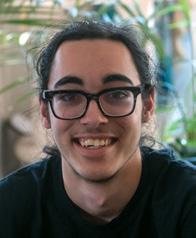
The Astronaut Scholarship Foundation selected physics major Kavi Dey ’26 as a 2024 Astronaut Scholar. Dey worked with Professor Helen Zhou on a brain imaging project in the Multimodal Neuroimaging in Neuropsychiatric Disorders Laboratory at the National University of Singapore. At Harvey Mudd, Dey has worked with visiting professor Gabe Hope on variational deep learning, engineering professor TJ Tsai in the Music Information Retrieval Lab on three-way audio alignment for piano concertos, engineering professor and makerspace Director Matthew Spencer in the Analog
Circuit Engineering Lab on ultrasonic beam forming sonar development, and biology professor Matina DonaldsonMatasci in the Bee Lab on zero-shot image classification for pollen species detection. Dey also works in the College’s machine shop as a shop improvement and repair proctor, as a practicum proctor for the Introduction to Engineering Systems course and as a teaching assistant for the Microprocessor-Based Systems: Design and Application course. After graduation, Dey will pursue a doctorate in computer science.
Read about Harvey Mudd’s other Astronaut Scholar, Alisha Chulani on the facing page.
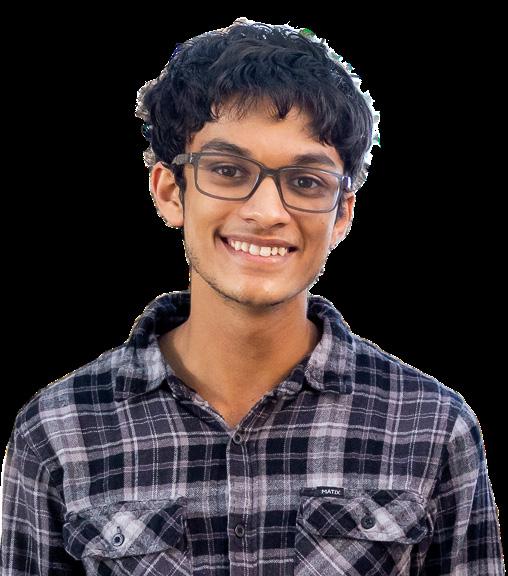
The insights Karamchedu gained from studying Shannon have left a lasting impression on his own academic journey. “Learning about Shannon has taught me the importance of looking for ideas in all things,” he reflects. “While many deep and beautiful ideas are motivated by pure theory, the cool things that we see in the world or that we build can have ideas that are just as powerful. This philosophy is incredibly inspiring to me, and I hope to implement it as much as I can.”
Harvey Mudd College ranks No. 2 in the nation for best career placement (private schools) in Princeton Review, The Best Value Colleges, 2024 rankings.
MY MUDD LIFE
Written by Dominic Indolino
engineering major alisha chulani’25 has been making her mark at Harvey Mudd College. North Hall mentor, Lab for Autonomous and Intelligent Robotics (LAIR) student researcher, two-time NCAA National tennis champion and Astronaut Scholar are just a few titles Chulani has earned during her time as a Mudder.
“I enjoy all the different things I’m doing,” Chulani says when asked how she does it all. “I really love my engineering major, and tennis has been something that’s always been a part of my life. So, it feels a little bit less like work and more like activities to have fun with.”
Despite her current success, when Chulani started her first year at Harvey Mudd, she had to work through a lot of self-doubt. “When you come in as a first year it’s really easy to doubt yourself and to think that you’re not going to be able to do this or you don’t fit in,” Chulani says.
But, by confiding in professors, Claremont-Mudd-Scripps (CMS) Athletics coaches, teammates and classmates, Chulani formed a support system that guaranteed a steady supply of encouragement and helped her take on schoolwork and extracurricular activities.
“That support has been super special for me,” Chulani says. “From the engineering program at Mudd to the athletics at CMS, as I did more, I got to the point where I realized if the people around me think I can do it, and I’m seeing other people do it, then I can do it, too.”
Chulani has been able to embrace her love for academics, something she feels is common among Mudd students. During the summer of 2023, she joined
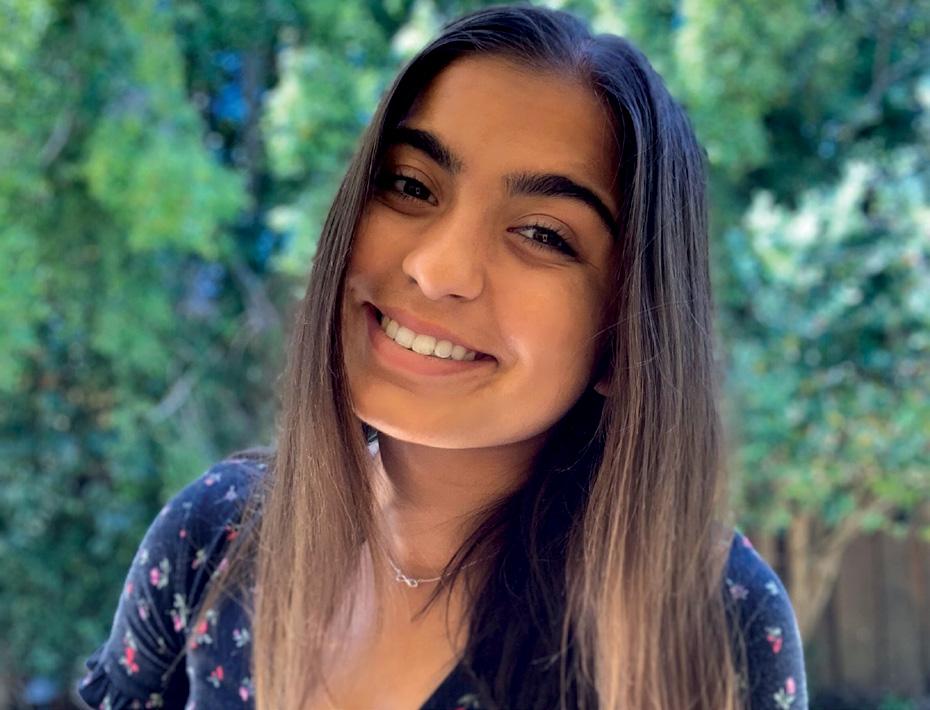
the LAIR team led by Chris Clark, emeritus professor of engineering, to conduct research in Costa Rica. Along with peers from the Shark Lab at California State University, Long Beach, and graduate students from the University of Costa Rica, the LAIR group worked on a seafloor mapping project in the Santa Elena Bay. Chulani and her team were responsible for programming the IVER-3 autonomous underwater vehicle routes and processing the sonar data it collected.
“It was a super memorable experience,” Chulani says. “Prof. Clark has been super cool to work with. I think being able to do this project with him and seeing the way he thinks about robotics and engineering in general has been really great.”
Equal to Chulani’s love for academics is her love for tennis. Along with being a two-time NCAA National Champion, Chulani earned a 2024 Intercollegiate Tennis Association (ITA) National Championship, is a five-time All-America honoree, three-time ITA Student Athlete awardee, two-time Harvey Mudd College Female Athlete of the Year awardee and was featured in “The Sixth Street Rivalry,” an episode from LG Presents.
“One of the questions my coach always asks is why we play tennis, and I think for me, it’s the time of day that I can put my phone and all my work away and just focus on being on the court with my team,” Chulani says.
Playing tennis also has taught Chulani how to work with lab partners. “You get to learn how to work with different types of people, and the teamwork aspect of the engineering program has definitely been
one of my favorite things,” she says. “It lets me work with friends, which doesn’t make it feel like work.”
Chulani credits the feeling of community she has at Mudd for helping her gain so many accolades. She mentioned the advice engineering professor Josh Brake provided when it came to managing tennis and engineering classes, promising to never lower his standards but to help her and be supportive. Chulani also shared how the hands-on experience in her Introduction to Engineering Systems class with James Howard Kindelberger Professor of Engineering and Department of Engineering Chair Nancy Lape inspired her to declare engineering as her major.
After graduating in spring, Chulani will go to work at Nvidia, where, as an intern in summer 2024, she conducted tests on the automation framework of graphic processing units. Chulani’s advice for other students at Harvey Mudd is to be open to the experience.
“It’s something that I try to remind myself every day because if I didn’t stay open to the experience, I wouldn’t have found my love for engineering,” Chulani says. “Even some of my favorite HSA classes—ones I never thought I would take—have been recommendations from my teammates and ended up being super interesting to me. So be open and try different things because it’s easy to doubt yourself, but you’re not going to be able to get better at anything if you don’t try it first.”

Have a dream? Michelle Gordon ’94 says, Go for it.
Written by Brenda Rees
she entered medical school at 31, cared for a son with childhood cancer as a single mom, headed up a successful multimillion-dollar surgical practice, worked in a hospital during the early, deadly days of COVID-19 and, after switching careers during a pandemic, is now reimagining a new life chapter.
For all the storms that Michelle Gordon ’94 has weathered throughout her life, she credits Harvey Mudd College with shaping her, sharpening her intellectual tenacity and mental toughness, and helping her get through challenging times.
“Going through the Harvey Mudd curriculum was probably one of the hardest things I have ever done,” says Gordon from her home in Cortland Manor in New York. “I learned how to quickly assimilate and filter knowledge and how to be an effective problem solver. Being around people who think like you do really helps you grow. After that experience, I knew I could take on anything.”
Finding a challenging and self-fulfilling career was harder than Gordon expected. She decided early in life to be a doctor. Gordon remembers overhearing her mother discuss her two brothers (who were doctors) and declaring they were “so rich.”
“My five-year-old brain put this together: ‘I want to make my mom happy. I have to be rich. And the way to be rich is to be a doctor.’” She pauses. “And, you know what I got? Rich. And I also burned myself out.”
Now as a “recovering surgeon,” Gordon sees herself as a “health coach,” helping
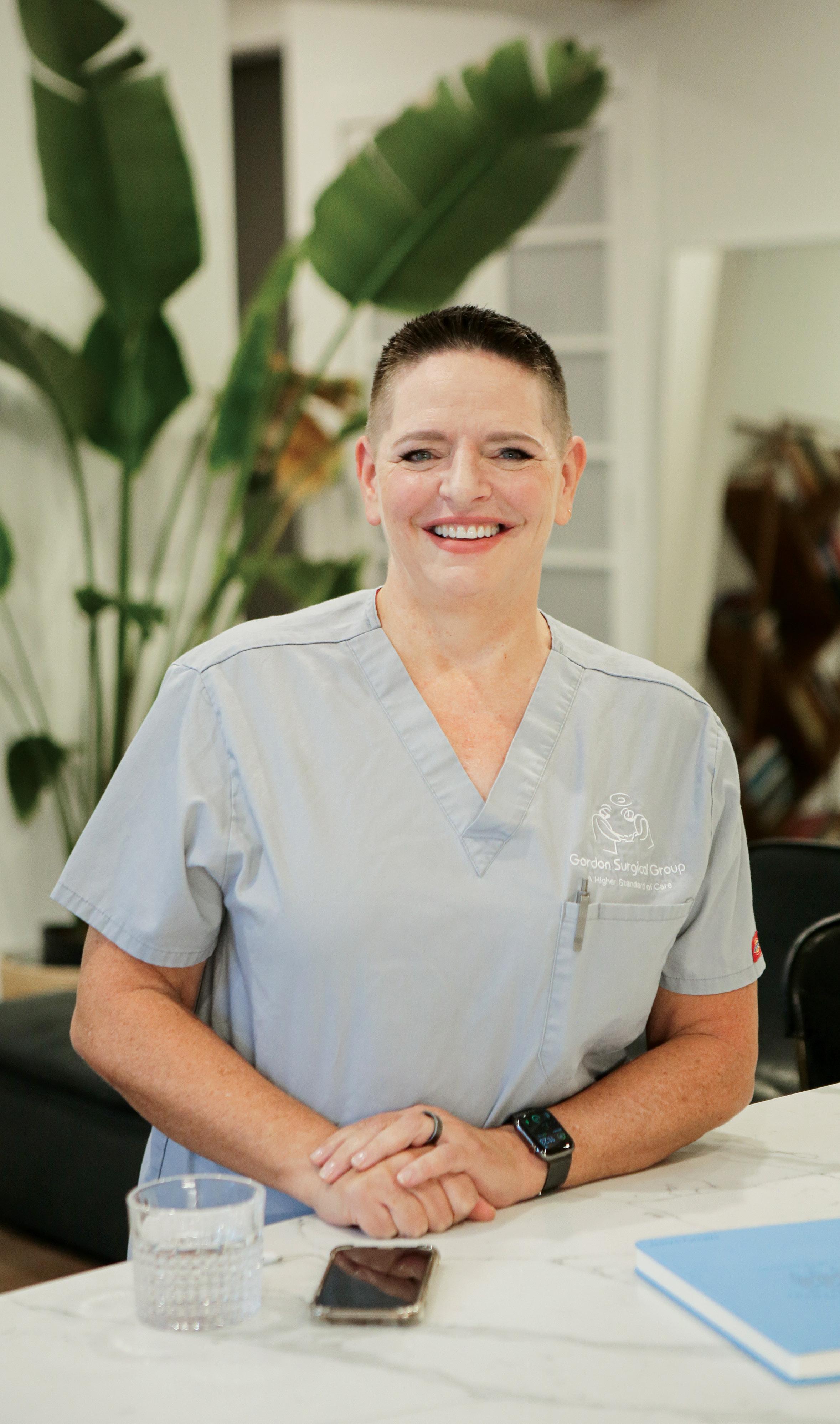
other high-powered professionals deal with burn out as they begin new careers. She’s also working on other ventures that build on her medical background and personal experiences: women and menopause, combatting depression and adopting healthier habits.
Science is in Gordon’s background and blood. She grew up in Richland, Washington, a town that Manhattan Project personnel took over to create plutonium for the bomb that was dropped on Nagasaki. Her father was a particle physicist. “The culture of the town was like a think tank; all the people who lived in the area were scientists,” she says, remembering a pro-nuke rally she attended in high school.
After graduating high school and moving to Seattle, Gordon took college classes and began to explore her personal identity. She moved to Southern California and married a man but, deep down, Gordon knew she was gay. She enrolled in Mudd at age 25.
Gordon discovered she was pregnant around the time her marriage was dissolving. She kept her studies going and proudly remembers carrying her “one-year-old son across the stage to receive my diploma.” A few months later, her son was diagnosed with a rare childhood cancer. Gordon cared for him after graduation while working in Mudd’s IT department.
All the while, she held on to her goal of becoming a doctor. She was accepted into medical school at Western University of Health Sciences in Pomona at age 31. She was sure she was starting her dream career. She moved to Queens for her residency, took a job in Westchester, and, in 2005, formed a surgical group which she led for almost 15 years.
Gordon enjoyed the problem-solving aspects of being a surgeon, especially emergencies that she says “were like
puzzles. People came in broken and left happy.” But once her practice got big and the administrative paperwork overwhelming, she discovered she really didn’t like leading surgeons with big personalities. Gordon’s dream career was starting to crack.
When her medical director, who was going through difficult times in his personal life, died by suicide in 2019, Gordon looked at her own life: always exhausted, resentful and wanting more time with her son. “Is this the life I want?” she wondered.
As Gordon was figuring out how to close down the practice, the pandemic descended on New York City. “Every available bed at our hospital was an ICU bed,” she recalls. “Everywhere there were dead and dying Covid patients. We lost some of our best nurses to Covid because we did not know how to treat them.”
Gordon worked most of the year at the hospital. After she closed her practice, Gordon gradually released her childlike idea of being a rich doctor, began to breathe easier and got excited about other career paths.
In recent years, Gordon has continued to reinvent herself: she’s coached highachieving professionals, established resources for women with menopause, and created a popular “Launch Your Life” podcast where she shared personal stories and motivational talks about career, behavioral change, motherhood and life.
Gordon’s current focus involves reinforcing wellness choices and helping to individualize medicine and private care. In March 2024, she started a telehealth practice and loves it. She often gives others advice about the value of reinvention.
“Look, I’m 60 years old, and I’m still building something new,” she says. In her opinion, it’s never too late to go after your dreams.
“ Look, I’m 60 years old, and I’m still building something new.”
– MICHELLE GORDON ’94

Sarah Wang ’17 sets her sights on a cleaner, greener way to travel.
Written by Jen A. Miller
Photo by Anita Nowacka
one day, sarah wang ’17 hopes that she can look up into the sky and see a project she’s worked on, whisking people to and from wherever they need to go, in a cleaner, electric way.
That’s what she’s doing at Joby Aviation, an electric take-off and landing (eVTOL) start-up based in Santa-Cruz.
“I don’t know if it was aviation itself that drew me to the company, but I thought it was cool to be working on something that would eventually fly,” she says.
When considering what she wanted to do with her life, Wang first set her cap on working in the medical field because she wanted to help people. So, she left her home state of Kentucky to pursue engineering at Harvey Mudd College. Even from her first campus tour, the College stood out to her when she saw “professors taking the time to engage with prospective students,” she says.
While a student, she took full advantage of being at Mudd and near the other Claremont Colleges. In addition to her studies, she went to Pomona College to both participate in ballroom dancing and practice Japanese and Mandarin at the Oldenburg Center for Modern Languages and International Relations there.
“The Mudd curriculum is very strenuous, and it can be easy to stay on Mudd’s campus and not go anywhere else,” she says, which is why forcing herself to make the 15-minute walk to and from Pomona to do these extracurriculars was an important part of having a well-rounded college experience.
But, of course, classroom work is important too. Wang found her first job there when she did a Clinic project with medical device consulting firm Triple Ring Technologies. After she graduated, the company hired her full-time as an embedded software engineer.
She had gotten her foot in the door of the medical field, but soon realized it might not have been what she really wanted to do after all. The projects she worked on seemed to impact a very small number of people instead of making a big impact on large groups.
Wang didn’t know that opportunity would come in aviation, but she credits her Mudd experience with enabling her to be flexible enough—and confident enough in her abilities—to pivot when she found something that did seem like an opportunity to impact more people.
A fellow Mudd alum who was earning a PhD degree at Stanford attended a talk by someone at Joby Aviation and told her about it. The company seemed exciting and appeared to be doing important work. Not only has Joby partnered with NASA on electric flight projects, but it’s also developing its own electric, aerial rideshare vehicle that could provide a cleaner, greener way of travel.
Wang started out as an embedded software engineer there and is now a senior development assurance engineer, making sure that the software used on Joby aircrafts meets safety and regulatory standards set by the Federal Aviation Administration in the U.S., the European Union Aviation Safety Agency and other
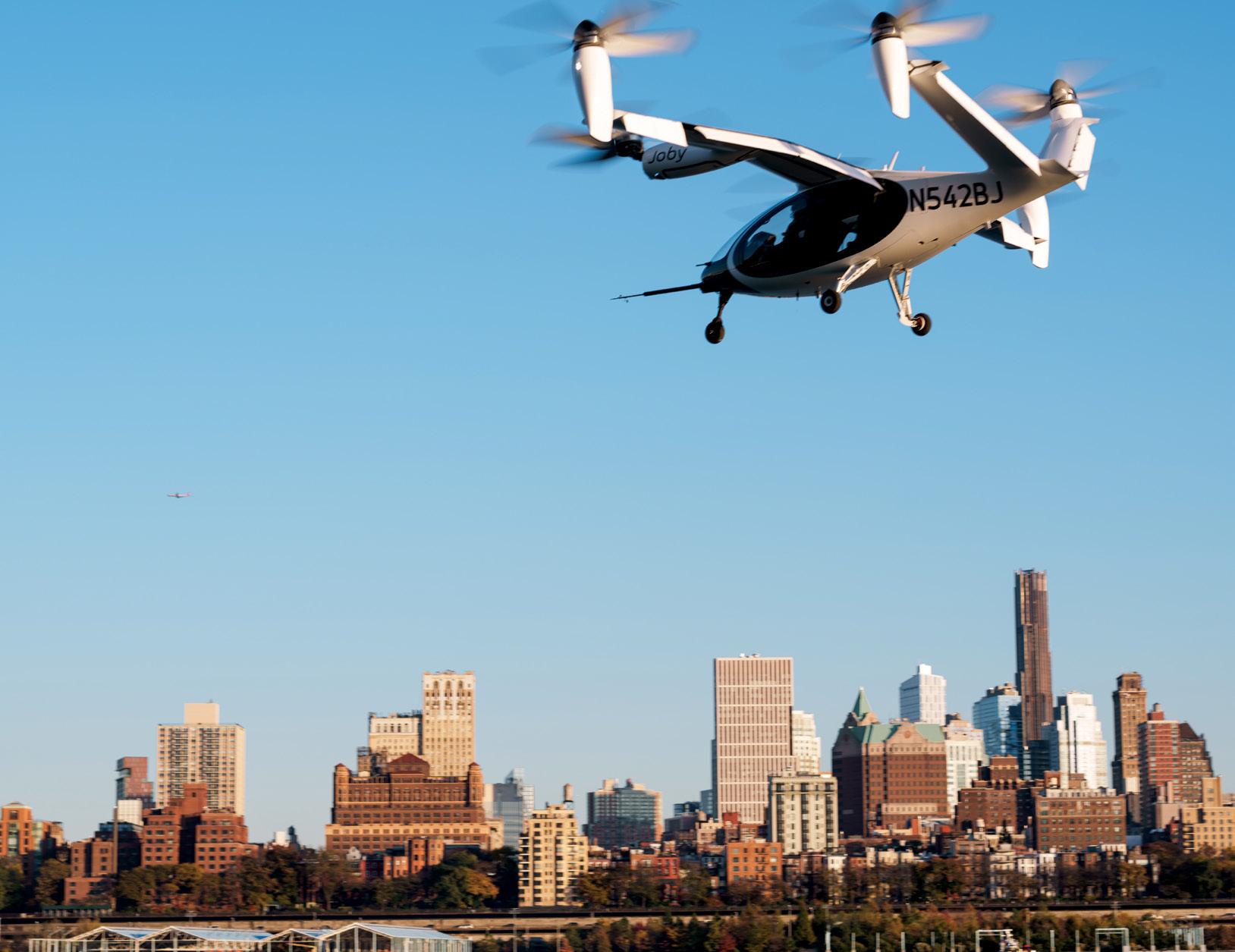
certification authorities around the world. Without meeting these requirements to earn proper certifications, no aircraft are allowed to fly.
The job requires “enough technical background to be able to conduct oversight on the software development and ensure that the design is safe and compliant to regulatory standards,” Wang says. And while the company isn’t brand new (Joby first partnered with NASA in 2012), the concept of creating air rideshares as a means of transportation still is.
Wang says that Mudd’s emphasis on “first principles,” where professors asked them to not just solve a problem using known methods, but also to understand it down to its fundamentals, taught her how to tackle the unknowns in an emerging field. She is constantly challenging assumptions and often asks herself “what are the core principles that are driving the problem?” to provide a fresh perspective in the field of regulatory compliance.
She also credits Mudd with emphasizing the importance of communication and busting the stereotype that it wasn’t important for engineers to know how to write. “When it comes to my
job, I love documenting my work because it helps me absorb what I just learned,” she says. It also allows her to share her work with other people in a way that they can understand and then invite them to “provide constructive feedback because they understand it through my writing.”
And while it’s not in the medical field, Wang doesn’t see this work as out of line with her original goal of helping everyday people. “In the Bay Area, where there’s a lot of congestion, having this mode of transportation would save you an hour a day of sitting in traffic and instead spend that time with your loved ones,” she says (and, indeed, Joby has worked with Delta Airlines, Toyota and Uber).
Stack up all those hours for all those people, and it could make a difference in terms of providing an electric option to cut down on carbon emissions and improve people’s quality of life. That’s what makes her hopeful that in the future she will see her work high in the sky. Wang wants to one day point to a Joby aircraft and “tell my friends and family that ‘I worked on that.’”
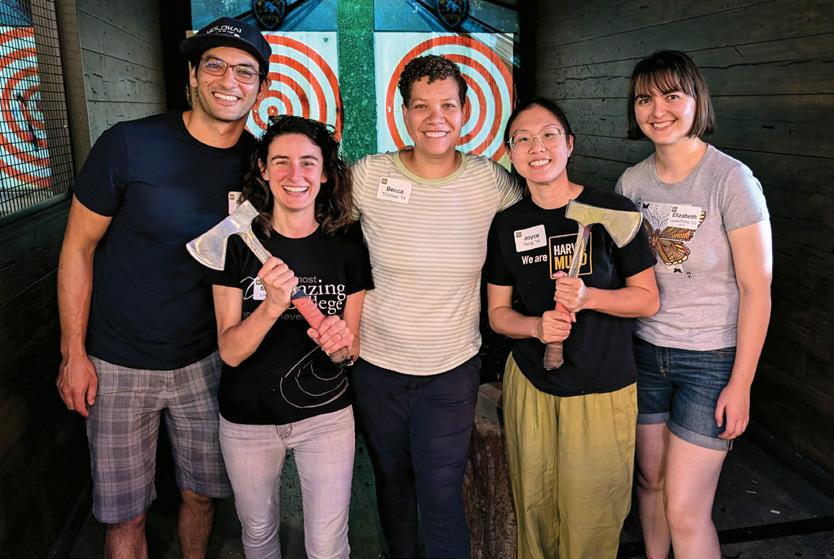


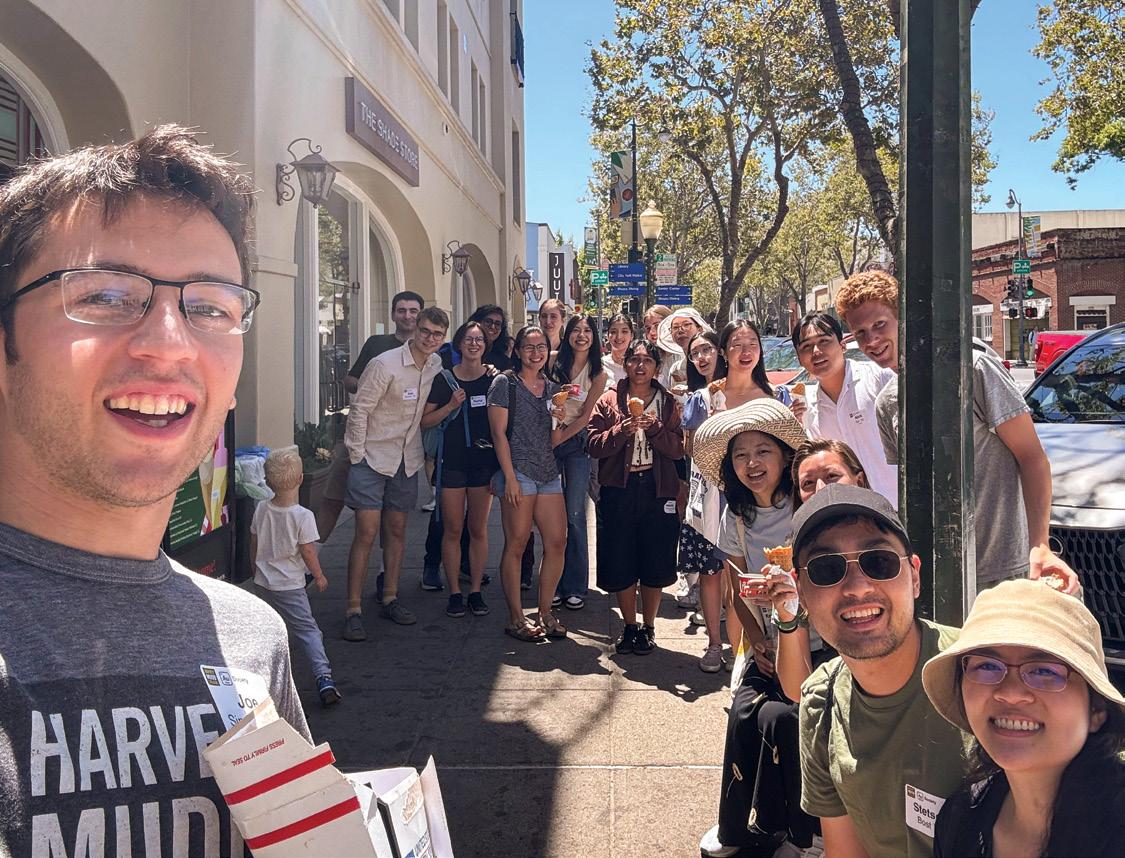
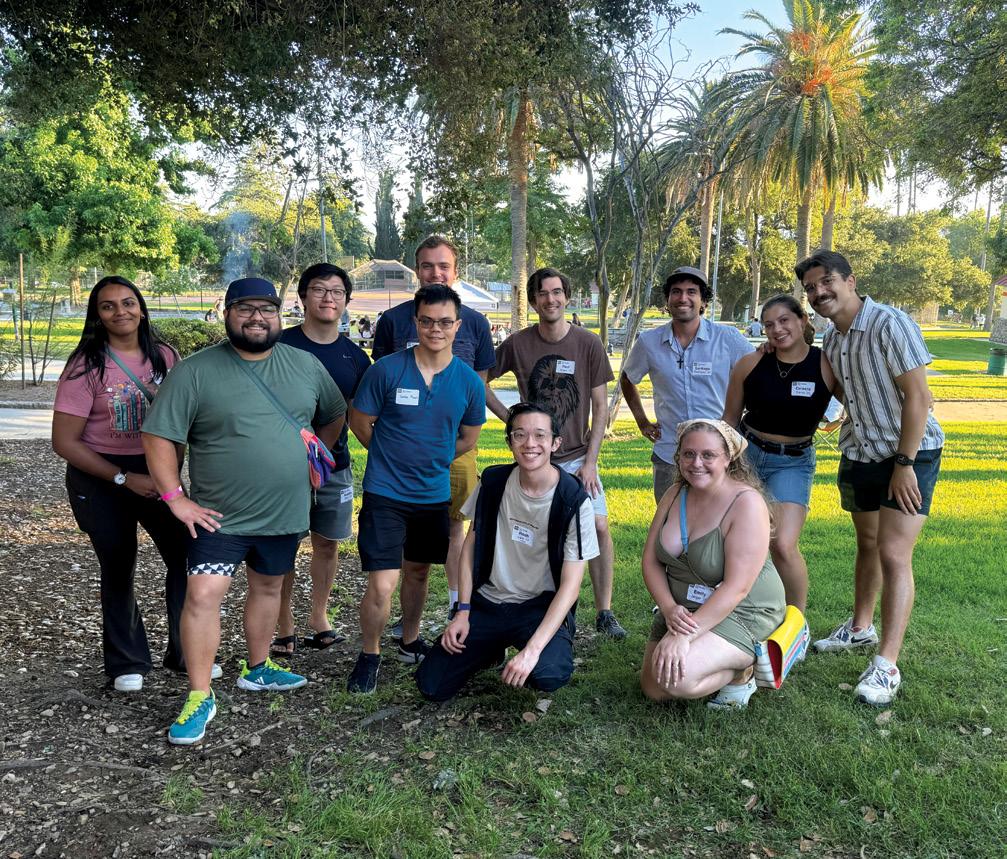
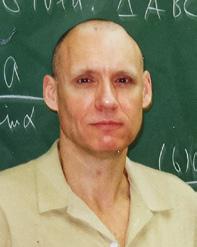
Sometimes gifts to the College come as a complete surprise, like the one from Allen Coleman, a lifelong Claremont resident and son of a master mechanical engineer. After serving in the Army, Coleman earned bachelor’s and master’s degrees in mathematics from Cal Poly Pomona and was an instructor there and at Mt. San Antonio Community College. His colleagues and friends fondly remember his joy, humor and love of teaching, and one person recalled that he “admired Harvey Mudd College from afar.” Only at his death did the College learn that it was the sole beneficiary of his estate. The College is pleased to honor Coleman’s legacy by applying his gift toward the areas of greatest need.
To learn more about planned giving at HMC, visit hmc.edu/giving/planned-giving

May 2–4, 2025
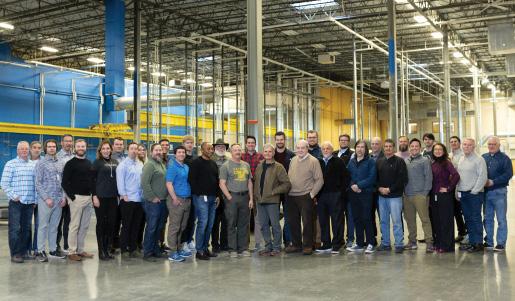
Richard Sears (engineering) reports, “In April 2022, I got a call from an old friend asking if I wanted to work half time. I said, “no.” For the last two years, I have been working as a part-time consultant to the director of pulsed power for Xcimer Energy. We are on a development program to prove our concept for fusion power. The reason I am outing my inability to retire is that the company has decided to place alumni flags around the facility. An HMC flag should be in place by the end of the year. Check out the Xcimer Energy site. I am in the group picture (white beard and hat).”
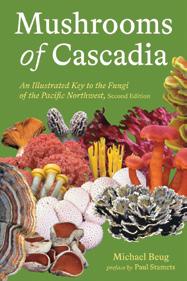
Mushrooms of Cascadia:
An Illustrated Key to the Fungi of the Pacific Northwest (second edition, Ten Speed Press) by Michael Beug (chemistry) was released Sept. 24, 2024, and by Oct. 18, it reached No. 1 on Amazon’s Hot New Releases. It is a significant expansion of the first edition that was self-published in 2021 and has nearly 1,100 photos with keys to roughly 3,000 species. It is designed for use by all skill levels of individuals interested in the kingdom of fungi. Roughly 90% of the photographs are by Michael. It is available in over 20 countries.
1968

Frank Greitzer (math, psychology) has been “semi-retired” since 2012. Through his consulting company, PsyberAnalytix, he performs applied behavioral science research and AI model development
for information security, focusing on countering insider threats. This past year, he presented his research at insider threat conferences and symposia in Brussels, Belgium, Washington, D.C., and Monterey, California. Spending about half-time on this work still allows time for recreation and vacation travel: Sue and Frank enjoyed beach-resort vacations about twice a year (in Mexico or Hawaii), and they recently visited the Riviera Maya, Mexico, to celebrate their 47th wedding anniversary.
James W. Michel (chemistry) has published the book Gravitational Renaissance: Unveiling the Universe Through Evolving Compressive Gravity. This work proposes a revolutionary perspective on gravity that challenges conventional views and could reshape our understanding of the universe. “I’m currently seeking scientists and experts in physics and cosmology for insightful reviews and endorsements. If you’re interested in exploring groundbreaking ideas and contributing to a pivotal discussion in modern science, I would be honored to connect with you.”
David Wilbur (math) says, “We are closing out our nonprofit, LinDave Institute, which focused on Baby College. It was a rewarding activitiy. I am still chair of the board of directors of Options for Learning.”
Bruce Cohen (physics) works part-time for Lawrence Livermore National Laboratory. He submitted a monograph for publication based on UC Berkeley physics Professor Allan Kaufman’s lectures on Statistical Mechanics, which he transcribed and edited (with co-editor Alain J. Brizard). It’s available for free download on arxiv.org. His daughter turned 40 (OMG!) and is a doctor at the San Francisco VA Hospital.
Jack Cuzick (math), a 2010 Outstanding Alum, received a knighthood (Knights Bachelor) from the British government. His ground-breaking research on breast cancer first showed that women receiving tamoxifen had a reduced risk of
contralateral cancers, long-term recurrence and even the risk of developing breast cancer in women at elevated risk. He has also identified groups of women at high risk of breast cancer through the Tyrer-Cuzick model which is widely used in family history service. His seminal work has led to major improvements in prevention and screening of cervical cancer. He led the first trial comparing HPV testing with conventional cytology for screening. This has led to primary HPV testing being widely used in the UK and elsewhere, and his recent studies of self-sampling are likely to lead to increased uptake of screening among unscreened women. He has led analysis of the use of flexible sigmoidoscopy for bowel cancer screening and breast cancer trial meta-analyses. Since 2017, he has continued his prolific output of internationally recognized research, with a further 170 papers published out of a lifetime total of over 700.
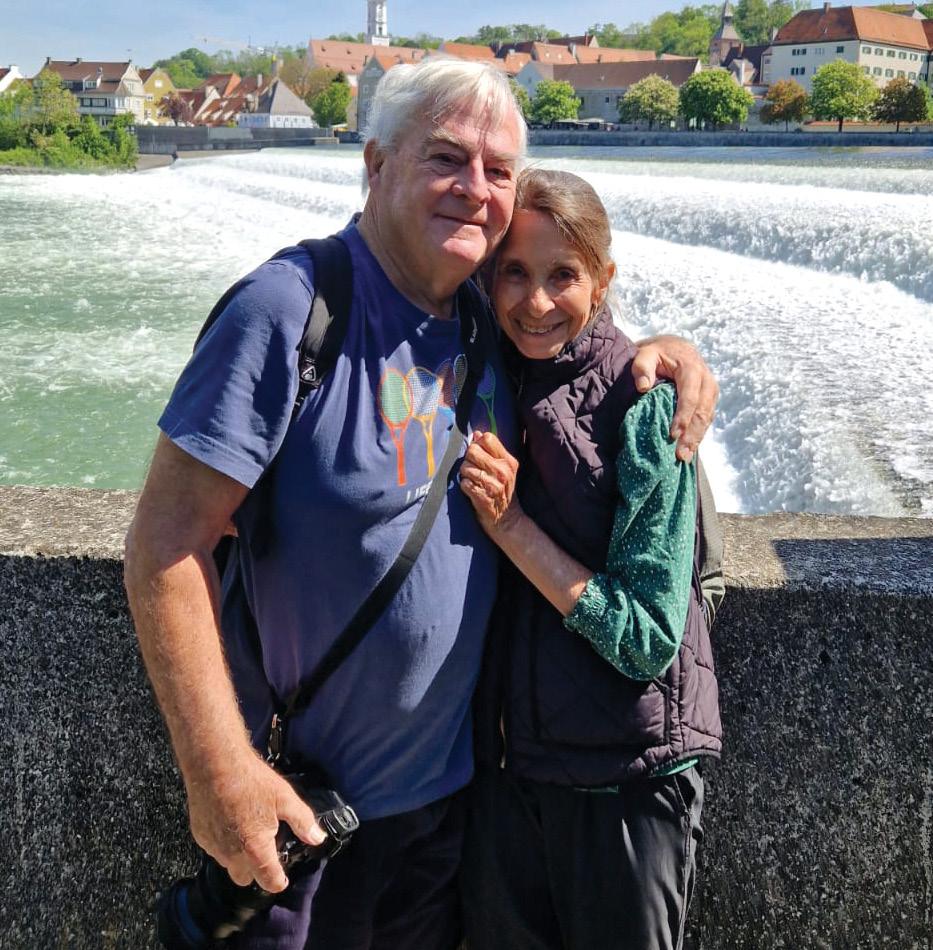
David Robertson (physics) writes, “On June 24, 2024, my wife of 52 years, Katherine Ward Taylor SCR ’72 died unexpectedly after a short illness. We met while students at The Claremont Colleges in 1968 and married in Claremont the day after graduation on June 5, 1972.”
Jim Potter (chemistry) shares, “Patti and I are the proud to announce the recent birth of our first grandchild, a boy. We
also have news of our second grandchild on the way, due in February, a girl. We couldn’t be happier. We celebrated our 40th anniversary yesterday with a daylong tour through many wonderful stops in picturesque New England with gorgeous fall colors, apple picking, brunch and dinner out with all three of our sons, two daughters-in-law and grandson. We are enjoying retirement with traveling, hobbies and family. Life is good. I hope to see many of my classmates at our 50th HMC reunion in May 2025.”
Dave Abrahamson (math): This spring, Dave retired from full-time work after 43 years of teaching. He’s enjoying having plenty of time for family and exercise and can finally devote sufficient energy to being supercilious!
1978
Mitch Hefter (engineering) was recognized as a Fellow of the Illuminating Engineering Society (IES) in August 2024. He is one of only three Fellows of both IES and the United States Institute for Theatre Technology. After 45+ years, the last 29 with Signify (formerly known as Philips Lighting), Mitch is entering semi-retirement. In addition to doing some consulting, he will continue active involvement in USITT, IES standards development, the Technical Standards Program of the Entertainment Services and Technology Association and the National Electrical Code.
Rick Lynds (physics) is retired and living in Mesa, Arizona, to be closer to the grandkids.
Shun Cheung (engineering) writes, “Both my wife (Louisa Mak ’82) and I are retired, and we are enjoying possibly the best time of our lives, perhaps second to our years at Mudd. I do a lot of photography and volunteer at youth orchestra events.”
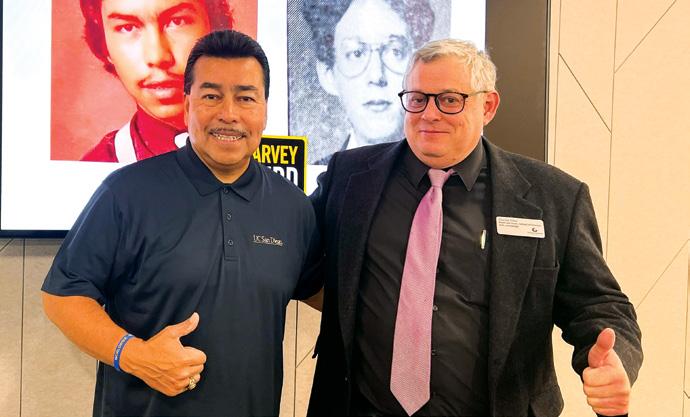
After eight years in industry and 30 years in higher education, Rafael Alvarez (engineering) announces that he “graduated” (retired) from San Diego City College on Sept. 6 to become “a full-time revolutionary to spark the learning culture revolution across higher education to help transform student lives.” In fall 2024, he visited six institutions in five states, with his last stop at Georgia Gwinnett College, where he reunited with Charles Piblel, associate dean in GGC’s School of Science and Technology. At GGC, Rafael gave a presentation to students and met with the provost, school dean and department chairs. “It’s always a privilege to interact with students, and I believe that the GGC educational leaders truly appreciated the opportunity to be introduced to the learning culture empowerment model. I can’t wait for many more opportunities in 2025 to ‘turn on the lights’ for students and leaders.”
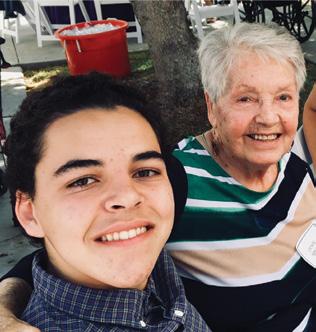

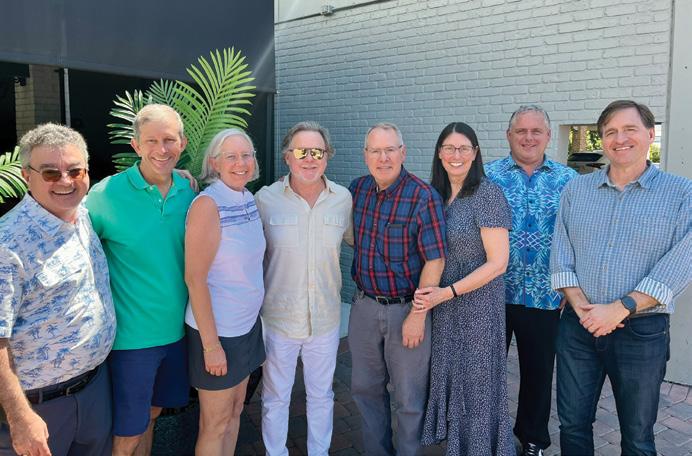
Tim Wendler (engineering) had a great time seeing many Class of ’89 classmates for his reunion. A large gathering of Mudders visited with Suzanne ’88 and Keith ’87 Blackburn during their visit to Southern California, including Kate and Ted Kubasak, John McDonough, George Stevens and Keith Saints
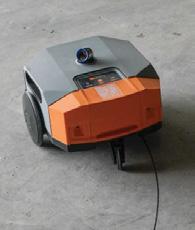
Nick Rossi (engineering) reports, “At Dusty Robotics, we just released FieldPrinter 2, the second generation of our construction layout robot, with significant contributions from Rin Ha ’24, Zeneve Jacotin ’24, Chris Herrera ’24 and Bennet Matazzoni ’25.”
Amanda Minieri (engineering) is now retired.
Brian Fleming (physics) writes, “At long last we’ve announced the next big PlayStation game we’re working on here at Sucker Punch: Ghost of Yotei! The trailer (on YouTube) has the Kurosawa/Katana vibes you expect with the new female protagonist you didn’t!”
Steve Bordelon (chemistry, film studies) says, “Continuing on with the fine tradition of procrastination, Penelope Joyce Bordelon was born in September 2024.”
Embedded software expert Elecia White (IPS) announced that the second edition of her book Making Embedded Systems is available in electronic book form. She added “100+ pages, four new chapters, lots of ideas, tons of advice, a chicken button and an eldritch horror.” Find it wherever you find your electronic books.
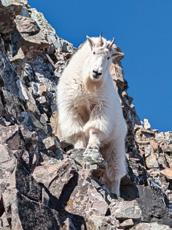
Mats Cooper (engineering) is trying to complete the Colorado 14ers, hiking to the top of all 53 prominent peaks in Colorado of 14,000 feet or higher. He’s ascended 22 peaks so far.
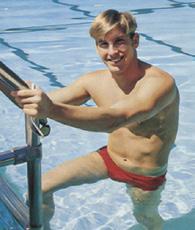
Gary Simon (engineering) was inducted into the Ted Ducey Hall of Fame at Claremont-Mudd-Scripps Jan. 19. Gary competed for the Stags swimming team for two seasons and won the NCAA Division III Swimmer of the Year both times. He broke NCAA records three times, once in the 100-yard breaststroke and twice in the 200-yard individual medley, and set four CMS records, which also included the 200-yard breaststroke and the 100-yard butterfly. His 200-yard IM time would have placed him fourth at the NCAA Division I Championship; it held up as the national record for 15 years and lasted as the CMS record for 26 years. His efforts in 1998, which included national titles in the 200 IM and the 200 breast, helped CMS to a fourth-place finish at the NCAA Division III Championships. He also earned the SCIAC Athlete of the Year Award in water polo as a senior as well as first-team All-America and first-team WWPA honors, while leading the Stags to a pair of SCIAC Championships.
In September 2024, Matthew Wright (CS) was installed as a Kevin O’Sullivan Endowed Professor in Cybersecurity at Rochester Institute of Technology. Matthew is a professor and chair of RIT’s Department of Cybersecurity, whose research focuses on adversarial machine learning, distributed systems and usable security. He has been the lead investigator on more than $5.8 million in externally funded projects and has published over 100 peer-reviewed papers.
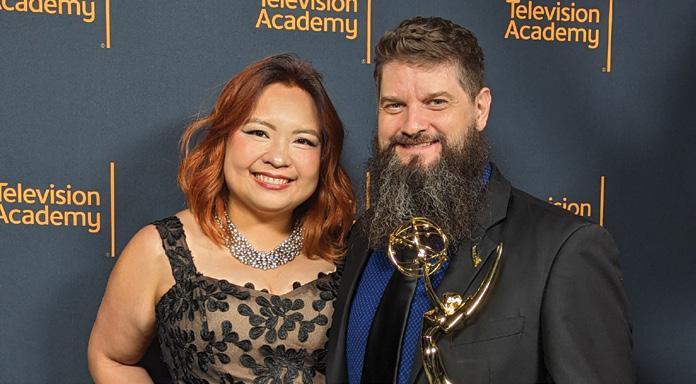
Zeke Burgess (CS/math) was honored by the Television Academy with an Engineering, Science and Technology Emmy for his work on the Concept Overdrive Motion System.

Elizabeth Reynolds (engineering) adopted Giovanni (now 5 years old) in June 2022, then in June 2024 had Keaton. “Gio has been thrilled to have a little brother, and it’s so much fun to watch Keaton’s reactions to Gio’s antics. We live outside Denver with our two dogs.”
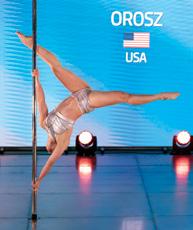
Since earning a PhD in chemistry, Kristina Orosz (chemistry) has spent 10+ years working at Roche Tissue Diagnostics in R&D. She recently received a Six Sigma Black Belt certification and is preparing to represent the USA in the POSA Pole Sport World Championships for the second time. Kristina and Adam Mills ’03 are still together after 22 years.
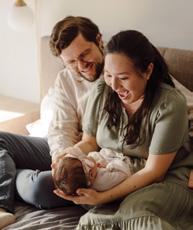
Clay Hambrick (physics) and his wife, Semmie Kim, welcomed a daughter, Callista, in March 2024. After more than a decade in NYC, the family has relocated to Pittsburgh for Semmie to pursue a PhD, while Clay will continue his software engineering career remotely.
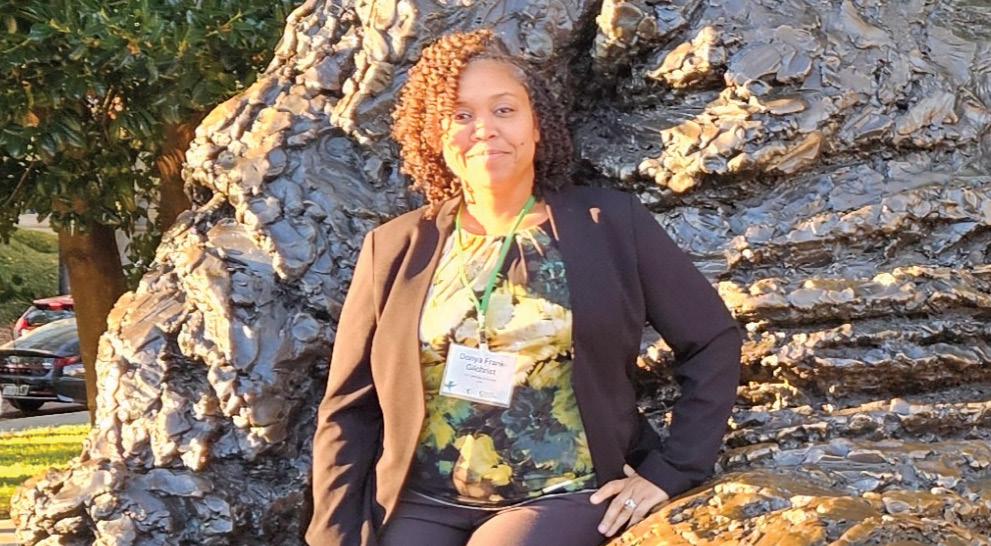
Donya Frank-Gilchrist (engineering) is a research oceanographer with the U.S. Geological Survey. She recently published an article on one of the first direct measurements of vortex-trapped sand grains by turbulent coherent structures or vortices shed from ripples, which was hypothesized over 30 years ago. Understanding these small-scale processes can help improve the accuracy of large-scale sand transport predictions.
This research was conducted with the U.S. Naval Research Laboratory and the Naval Meteorology and Oceanography Command of the U.S. Navy.
Val Monticue (engineering) has been a physics teacher since 2008, National Board certified since 2017, president of the Northern California/Nevada section of the American Association of Physics Teachers from 2016 to 2022 while leading early career physics teacher workshops three times a year. She moved to Seattle to help open a new school for twice-exceptional students in 2022 and recently started a graduate program for an EdD in cognitive diversity in education. Val was chosen to be an intern at the Strength Based Assessment Lab where interviews and learning assessments are conducted with 2e students to promote best practices in classrooms and homes to help students thrive. She says, “I tell you what, going to Mudd has definitely prepared me to work with these kiddos in so very many ways.” Val also went to the South Pole as a telescope engineer in 2015, “largely because of the Clinic projects I did.” She gave three talks about her trip to a high school astronomy class and a women in STEM club in Portland. She also does historical jousting on horseback.
Nate Chenette (CS and math) is in his 11th year teaching at Rose-Hulman Institute of Technology, along with spouse Heather (Schalliol) Chenette. This past spring, I was awarded one of the institute’s highest honors for faculty: the Board of Trustees’ Outstanding Scholar Award.
As an associate professor of computer engineering at California Polytechnic State University, San Luis Obispo, Andrew Danowitz (engineering) is in the second year of an NSF RED grant with his department. “We’re working to make our department more inclusive and supportive of our students while eliminating barriers to graduation for students from all backgrounds!”
Many of us have started something meaningful—a project, a dream, a degree— only to set it aside when life pulls us in a different direction. If you’ve ever wondered “What if?” regarding an unfinished goal, this conversation with Phil Lockwood ’95 (and ’24) about his decades-long journey to revisit an aspiration will resonate with you.
How close were you to completing your degree before life took you in a different direction?
I was two classes short of finishing my bachelor’s degree in engineering. I needed one class in Thermodynamics/Chemical Reactions and one in Mechanics/Statics/ Dynamics. During my senior year, I was offered a dream job in Seattle at Midisoft working on music sequencer software. I was burned out on school, out of time and out of money. So, I leapt at the opportunity and left in 1995 without completing those two classes.
How did that work out?
I was at Midisoft for about six months. I later was offered a job in the Bay Area, also in music software, that offered more money and was an exciting early stage startup. But, the company folded shortly after I joined. I then transitioned into a career in software development within the internet and web services.
Was completing your degree something you thought about often over the years? Absolutely. I had always wanted to finish my degree, but it wasn’t feasible to uproot my life from the Bay Area to physically take those classes on campus in Southern California.
How did you finally get a chance to finish?
Last Christmas, I decided to reach out to the college again. I received an email from Sharon Gerbode, associate dean for
academic affairs, explaining there was a path forward as a transfer student: If I could find equivalent courses at another ABET-accredited school, successfully petition to have them accepted and earn at least a B in each, I could transfer the credits and finally graduate from Harvey Mudd. I found two classes near me at San Jose State University that fit the criteria: a Strength of Materials class and a Thermodynamics class.
What obstacles did you face?
For starters, the Mechanics class was fully booked. I couldn’t officially enroll but kept attending lectures and doing homework anyway, hoping a spot would open up. Meanwhile, I had to review an entire Statics course online to prepare. Thermodynamics was even tougher. I realized quickly that I had major knowledge gaps. When my daughter, Beatrice, was born just a month into the semester, I had even less time and energy. I failed my first Thermodynamics midterm with a D, and it was incredibly discouraging.
How did you manage to push through? I found online tutors in Pakistan and India who helped me with chemistry and thermodynamics for hours each week;
it narrowed the gap. At the same time, I kept attending the Mechanics class and doing the work, even though I wasn’t officially enrolled. A spot finally opened, and I was able to add the class. Diana, my wife, was also instrumental. She supported me while caring for Bea, especially in those early months. Without her, I couldn’t have managed everything.
How did you feel heading into finals week?
I was nervous but determined. I knew the material, but I was slow—especially in Mechanics, where the final exam was packed with problems. I scored a 65% on the final, but the class average was just 50%, so my overall performance held up. In the end, I earned a B+ in both classes, which was enough to fulfill the requirements.
How does it feel to close this chapter after all these years?
I sent my transcripts to Harvey Mudd College and received my diploma in the mail—nearly 30 years after I originally started my degree. It’s a huge relief and incredibly satisfying. This journey took longer than I ever expected and was harder than I imagined, but I’m so grateful for the second chance.
What advice would you give to others wanting to finish something they started long ago?
If you get a second chance, savor it. Don’t be afraid to take that leap—you might surprise yourself with what you can accomplish.
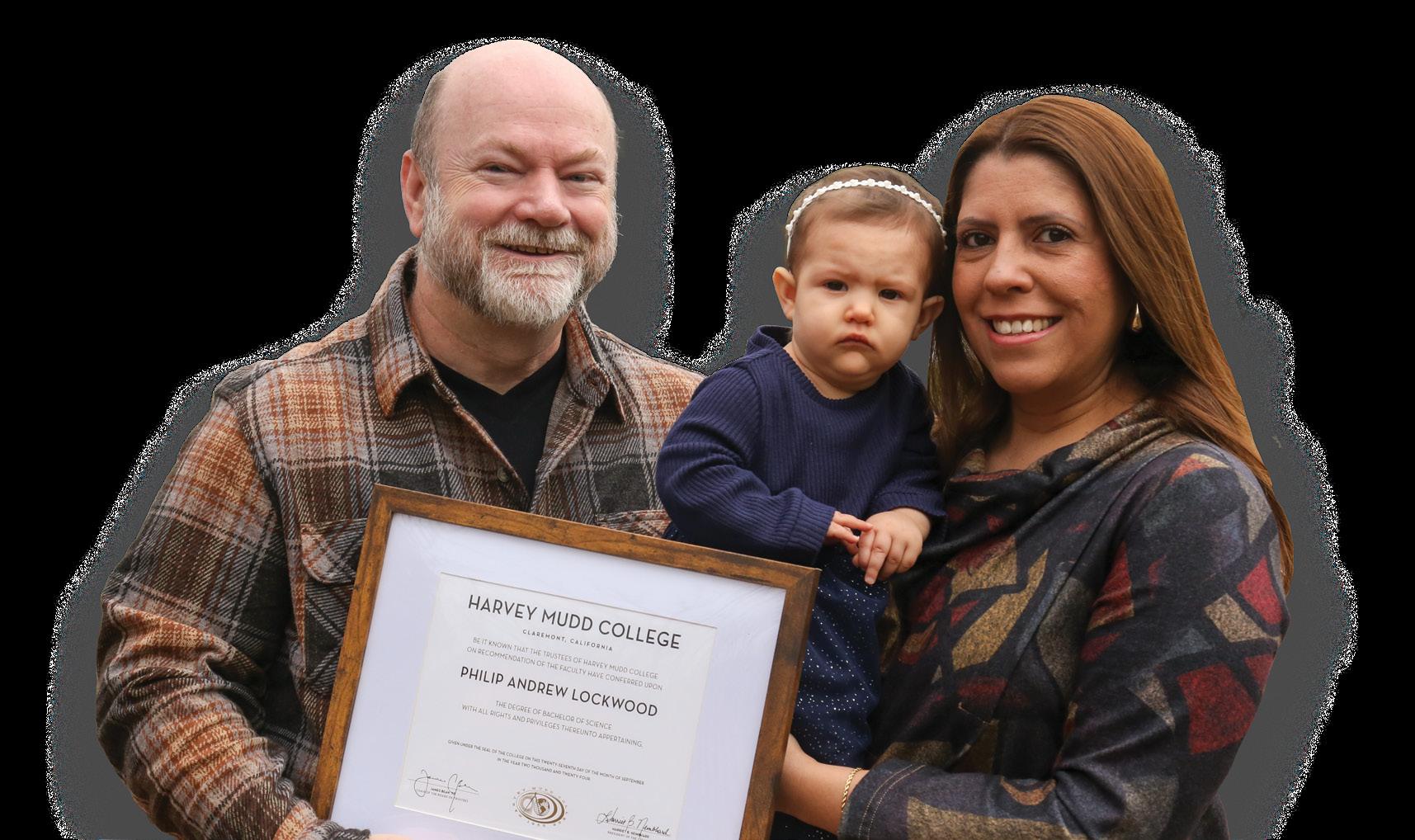
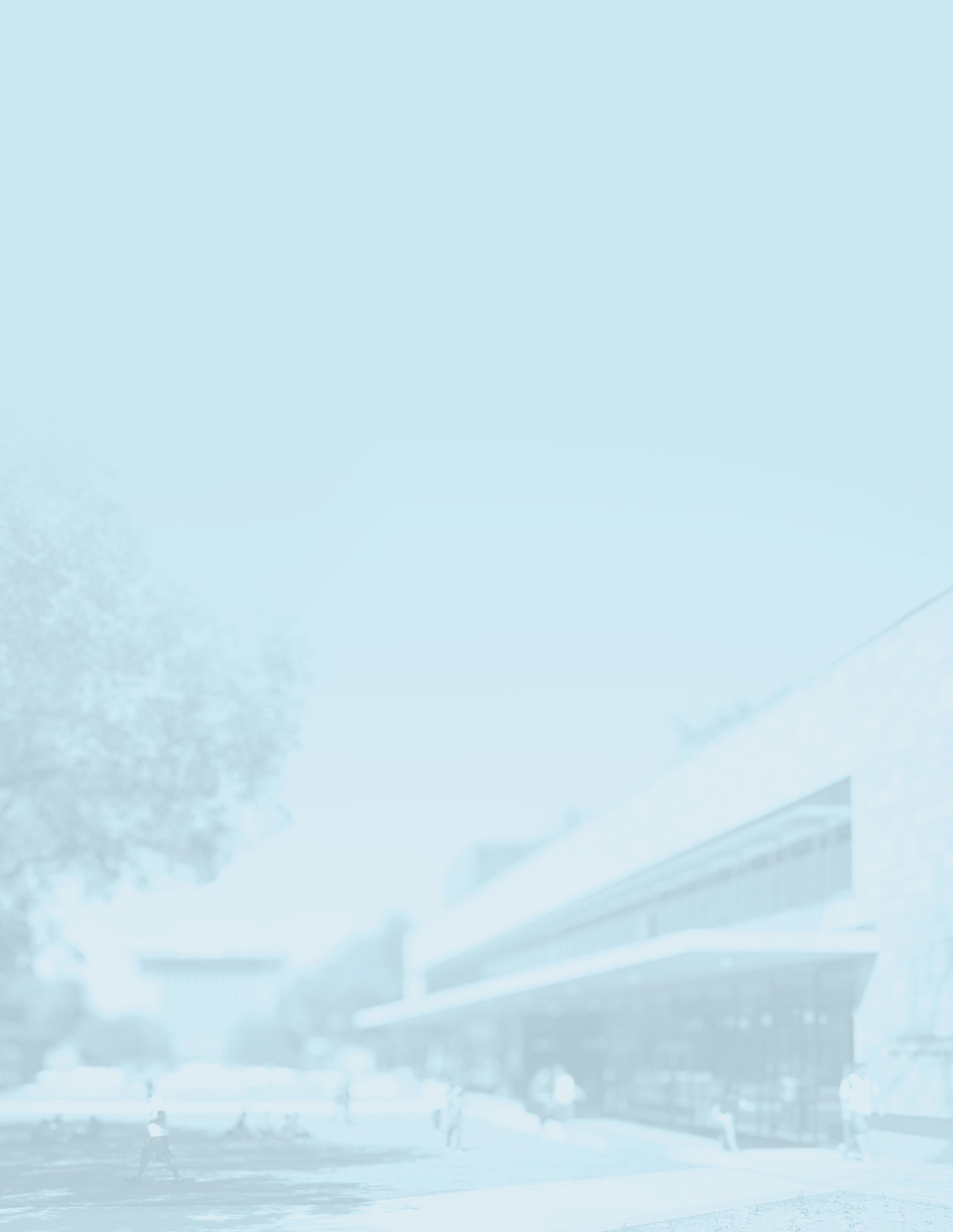
Seanna Vine (chemistry) and Brandon Horn (physics) got married in 2015 after finishing grad school at Columbia (or dropping out, in Brandon’s case). Seanna works as a medical researcher at Mass General Brigham, and Brandon works as a software engineer at Microsoft. Their children, Sybil (7) and Nico (6), recently proved their mettle on the family trip to Iceland, and another daughter is currently in development and expected in early 2025. Seanna and Brandon recently moved to Newburyport, Massachusetts, where they built a net-zero passive house, complete with a rock-climbing wall and tons of Legos.
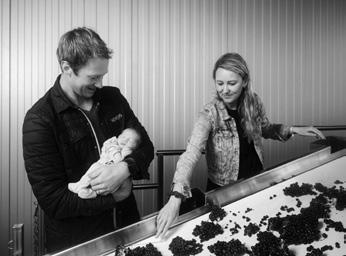
Christopher Strieter (economics) married Jocelyn Woolsey Strieter CMC ’09 in April 2023 and welcomed William Alfred Strieter in August 2024, days before a successful Sonoma grape harvest.
During summer 2024, Sarah Loeb (math) received tenure and was promoted to associate professor of mathematics at Hampden-Sydney College.
Taylor McAdam (math) joined the mathematics and statistics department at Pomona College in 2023 as a visiting assistant professor. “I am very happy to be back at The Claremont Colleges and teaching at a liberal arts college!”
In early 2025, Jaron Kent-Dobias (physics) leaves Rome to begin a professorship at the ICTP-SAIFR (International Center for Theoretical Physics – South American
Institute for Fundamental Research) in São Paulo, Brazil.
Kyle Siegel ’14 (engineering) turned his dual passions of being an engineer and skier into the adventure gear brand Raide Equipment. In an interview with Powder Magazine (fall 2024), Kyle describes the business and his desire to be “the best on the market.” Siegel said, “I was always interested in starting my own company. I wanted to make a pack for myself and had a clear vision with what I wanted it to look like.” Read the article, www.powder.com/ news/spacex-backpack-kyle-siegel-raide
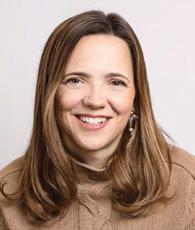
In a Sept. 9, 2024 Food Technology article, Sarah Reisinger (biology) chief science and research officer at DSM Firmenich, discussed innovation in the food industry, including biotechnology for the future of food and beverage. She shared her excitement for the use of data science and AI. Sarah combines an extensive background in biotechnology with a strong track record in ingredients and technology development for the consumer goods industry. Prior to joining Firmenich in 2018, she held pivotal roles at Ginkgo Bioworks, Intrexon and Amyris, having started her career in the field of biology and cancer therapeutics.
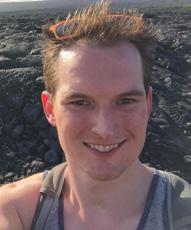
Phillip Diffley (physics) recently finished replacing The New York Times’ video publishing and delivery system and is now available as a consultant tech lead and fractional CTO with the software development collective Handle with Care. They specialize in realtime systems, content management, rich text editors and media infrastructure in addition to standard web and mobile development.
Sarah A. Nichols (engineering) is founder and managing director at The STEAM Engine near Mukilteo, Washington, where she offers after-school classes in which kids can explore STEM, art and makerspace activities.
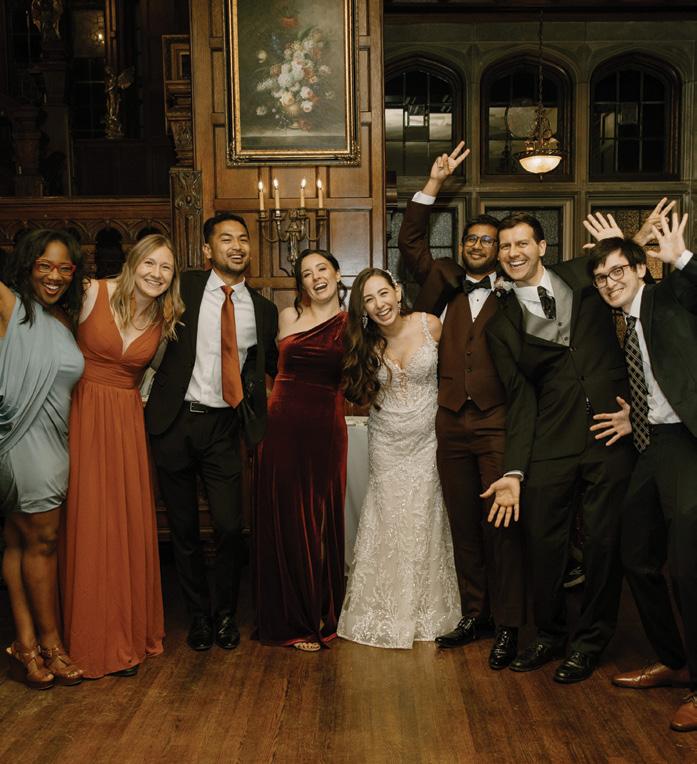
Aleina Wachtel (math) married Joshua Weaver in the Seattle area after seven wonderful years together. Mudders in attendance were Professor Talithia Williams, Heather Young, Russell Salazar’19, Hannah Smart, Sid Srinivasan, Vincent Fiorentini and Matt Wilber
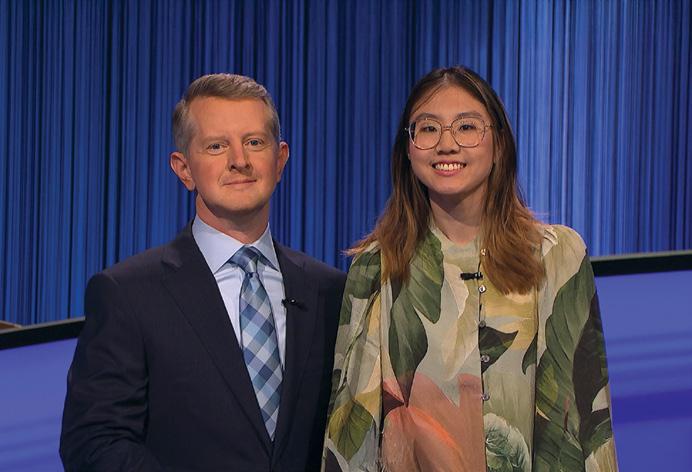
On May 13, 2024, Joyce Yang (math) appeared on Jeopardy! There were, unfortunately, not many science or math questions, but she did answer a question about the population of the city of Chang’an, now called Xi’an, which is her mother’s hometown.

Alex Ozdemir (IPS) and Veronica Rivera (CS and math) got married in Claremont during October 2024. They met on the first day of orientation at Harvey Mudd in 2013, started dating three weeks later and have been together ever since.
Andy Zhang (CS and math) and Lilly Liu (computer science) got married in Los Angeles, California, celebrating with family and many HMC classmates.

From August 2024 to June 2025, Shanni Lam (CS and math) will serve as an English Teaching Flagship Fellow in rural Chiayi County, Taiwan, through the Foundation of Scholarly Exchange and Taiwan’s Ministry of Education (Fulbright Taiwan). “I am excited to learn more Mandarin and Taiwanese, learn more about teaching and language acquisition, and am loving riding a scooter motorcycle!”
Hannah Lu (CS and math) joined the Institute for Defense Analyses (IDA) as a Baccalaureate Fellow at the Science and Technology Policy Institute, a federally funded research and development center operated by IDA, a nonprofit corporation that answers the most challenging U.S. security and science policy questions with objective analysis leveraging extraordinary scientific, technical and analytic expertise.
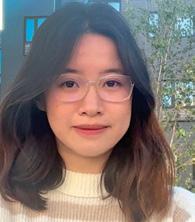
Eritas Yang (physics), a first-year PhD student in astrophysics at Princeton University, was awarded the American Physical Society’s
2024 LeRoy Apker Award, a prestigious recognition for outstanding achievements in physics. Eritas was honored for her research on the long-term “secular” dynamics of planetary systems, specifically her work in developing a perturbative model for the orbital evolution of coplanar three-planet systems. Her research sheds
new light on the mechanisms driving instabilities in planetary systems—a critical step toward understanding the chaotic processes that shape the final orbits of planets. The citation on Eritas’ award reads: “For developing a perturbative model for the long-term secular dynamics of coplanar three-planet systems, elucidating the physics of such systems.”
Have you changed jobs? Retired? Celebrated a milestone?
In addition to updates you submit, we compile information from a variety of sources: campus event notices, newspaper and magazine articles, press releases and Google alerts. Please submit updates to alumni@hmc.edu
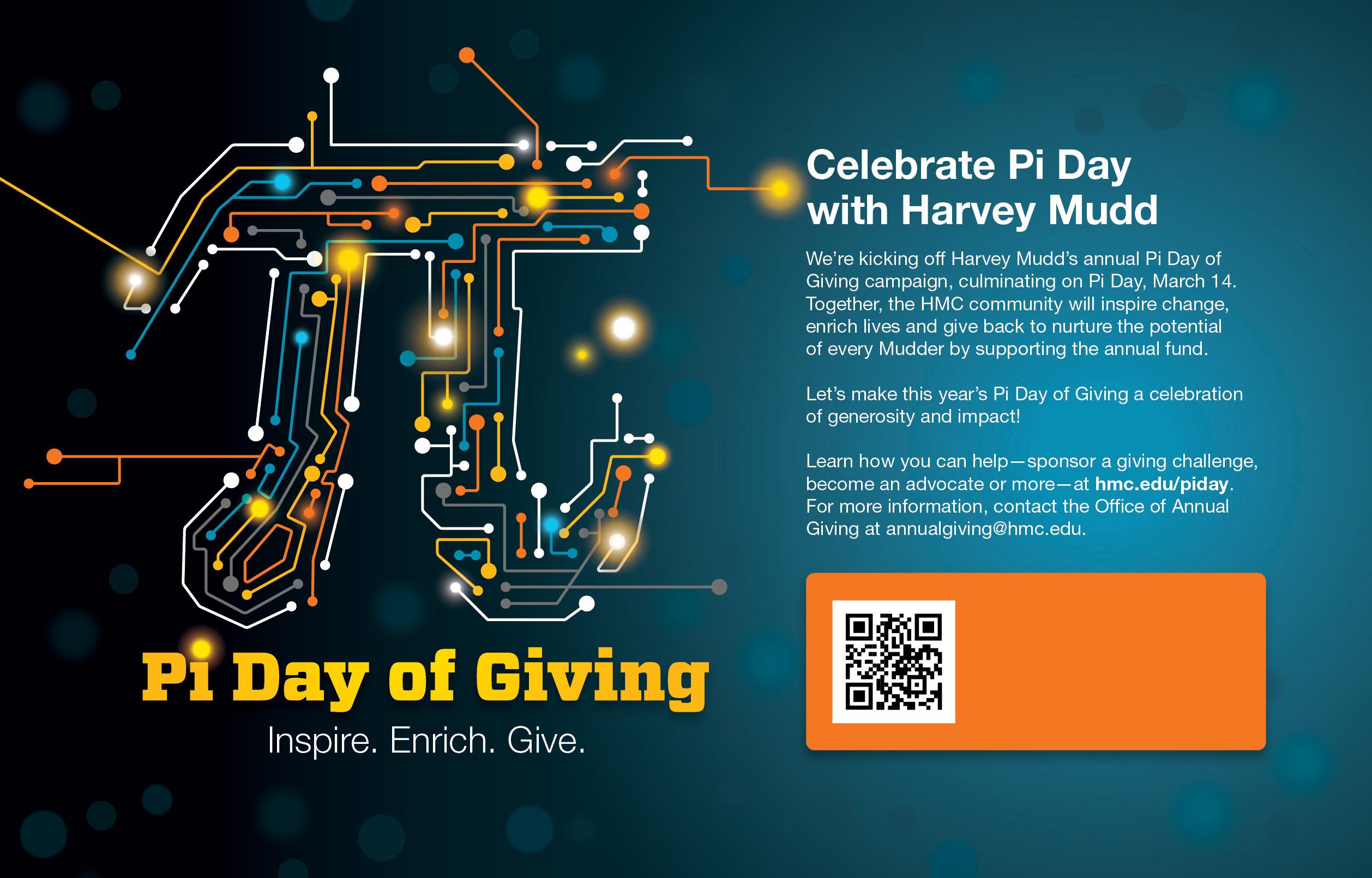

Peter Loeb ’59 (math) one of the two graduates from the Class of ’59, passed away Nov. 20, 2024. A professor emeritus at the University of Illinois department of mathematics and pioneer in nonstandard analysis, he was a quintessentially nonstandard human being, father, husband and friend. He is survived by his wife of 66 years, Jane, three children and extended family. The top half of HMC’s first graduating class (n = 2), he received an M.S. at Princeton (’61) and PhD from Stanford (’64) in mathematics. His first professorship was at UCLA, then he became assistant professor at UI in 1968. He and Jane remained in Champaign-Urbana for the next 56 years. Peter made fundamental and lasting contributions to mathematics. His research was centered in problems of representing measures and ideal boundaries in potential theory and the application of nonstandard models to mathematical analysis. In 1975, he published a mathematical construction that has since been called the “Loeb measure,” used by mathematicians worldwide. It has inspired a vast literature in mathematics and beyond and has led to important applications in probability theory, potential theory, number theory, mathematical economics and mathematical physics. Some of those applications have made a compelling case for the current and future development of mathematical models based on a Loeb space. Peter also enjoyed performing in concerts and recitals.
Arla Allen, spouse, reports that Charles D. Lemme ’65 (engineering) passed away on Dec. 23, 2024. A 2016 HMC Outstanding Alum, Charles made significant technological contributions to the medical device field, automotive industry, optics industry and more. A retired engineering fellow for Ventana Medical Systems and former adjunct professor of mechanical design at University of Arizona, he was named on more than 40 patents.
Terence Needham ’66 (chemistry) died in July 2024. He excelled in the sciences as well as in music and art. He received his PhD in chemistry in 1972 from the University of Illinois, Champaign-Urbana, then spent several years in postdoctoral training at Los Alamos, New Mexico. His area of study was in the structural chemistry of crystals via nuclear magnetic resonance imaging. Terry was then hired by the defense industry, where his area of expertise became underwater acoustic signal interpretation. He maintained a Top Secret security clearance during the Cold War.
George McNulty ’67 (math) died June 13, 2023. He pursued a PhD at UC Berkeley with fellowships from the Woodrow Wilson Foundation and the NSF. He wrote his dissertation under the tutelage of Alfred Tarski, and did post-doctoral work at the University of Manitoba, UC Berkeley and Dartmouth College. He served as a mathematics faculty member and department chair at the University of South Carolina, where he received many honors and awards. He was named a Fellow of the American Mathematical Society and had over 70 publications, including three volumes on Algebras, Lattices, Varieties, published by the AMS. He advised many graduate and undergrad students and mentored middle and high school math teachers. He was also active in the FilipinoAmerica Association of Greater Columbia with his wife of 42 years, Nieves Austria McNulty, and their son and daughter.
Tim Quilici ’74 (physics) passed away on Oct. 27, 2024, shares his older brother Steve Quilici ’67. Tim leaves his wife, Lois (married 50 years) and sons Bryan and Jason and their families. Tim founded a software company, QuickScores.com, dedicated to full-service sports league scheduling, registration, etc., about 20 years ago. Tim became chief innovation officer, and son Bryan moved up to president. Quickscores continues to thrive thanks to Tim’s early innovations, years of solo software development and willingness to strike out on his own after a career in high-tech.
Thomas C. Banwell ’78 (physics), died May 26, 2024 after a long illness. A Westinghouse scholar and graduate of Caltech (PhD, applied physics) and University of Medicine and Dentistry of New Jersey (M.D.), Tom worked at Bellcore/Telcordia/Vencore/Perspecta as a scientist, producing over 15 patents, numerous IEEE professional articles and quietly inspiring others. With his father, Tom published papers on boat stability and was a member of Cal Poly Pomona Alternative Vehicle Club. At UMDNJ, Tom aided his teachers with research projects and volunteered tending to border babies while continuing electrical engineering part time. After graduating and a year of medical residency, he returned to electrical engineering full-time.

Carrie Crum Lindstrom’99 reports that Jennifer Jack’99 (math) died Dec. 8 after a long struggle with head and neck cancer. Carrie writes, “She handled this cruel disease with the same grace and strength she was known for throughout her entire life. With degrees in math and industrial engineering/operations research (UC Berkeley), Jen worked at Fair Isaac and Zephyr Health and finished her career as a manager at Meta. She was an easygoing and loyal friend who was known for her sage advice, challenging questions and love of rainbows. She will be deeply missed. To honor her memory, please consider donating to the American Head and Neck Association.”
The College also learned of the passing these alumni:
Gary Modrell ’66 (engineering) died in early 2024.
Richard L. Reinhardt ’66 (physics) died in July 2020.
James McComb ’78 (chemistry) died in October 2023.
Hyman Crippen ’80 (engineering) died in May 2023.
Michael J. Chan ’01 (CS) died unexpectedly on May 17, 2024.

As students discovering “our people,” educators and professionals inspired by HMC’s mission or family members watching our loved ones grow, gain confidence and thrive, we all share one common thread—that sense of connection rooted in what we call “Mudd Moments.”
December 14 marks Founders Day—the day in 1955 when Harvey Mudd College’s articles of incorporation were filed with the state of California. On Dec. 14, 2024, we began a yearlong celebration of an extraordinary milestone in the life of the College: the 70th anniversary of HMC’s founding. To honor this occasion, we ask everyone in the HMC community to share their own Mudd Moment.
Upload a favorite photo and share a story or memory that celebrates your connection to the Harvey Mudd community. Your submission will become part of an interactive virtual mosaic, that will not only showcase our collective memories but will also evolve as new stories and photos are added. Visit the mosaic often to explore the contributions from HMC community members.
So many lives have been touched by Harvey Mudd College during its first 70 years.
But what really makes this College special are the people who bring its mission to life—both on campus and beyond. Your photos and stories will help bring our mosaic to life. And on Dec. 14, 2025, we’ll unveil the end result: a vibrant tribute to our community that honors those who founded the College, celebrates those who have shaped it and inspires those who will carry its legacy forward.
Together, as a community, let’s commemorate 70 years of connection, innovation and belonging at Harvey Mudd.

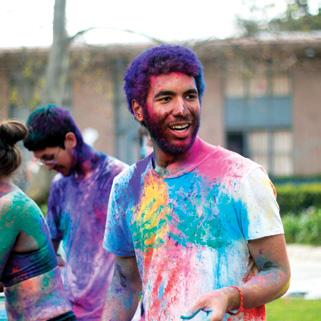

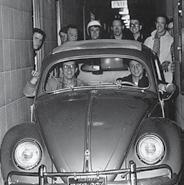
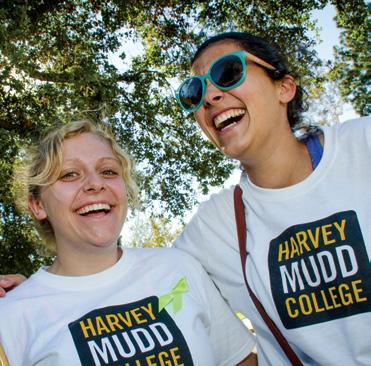

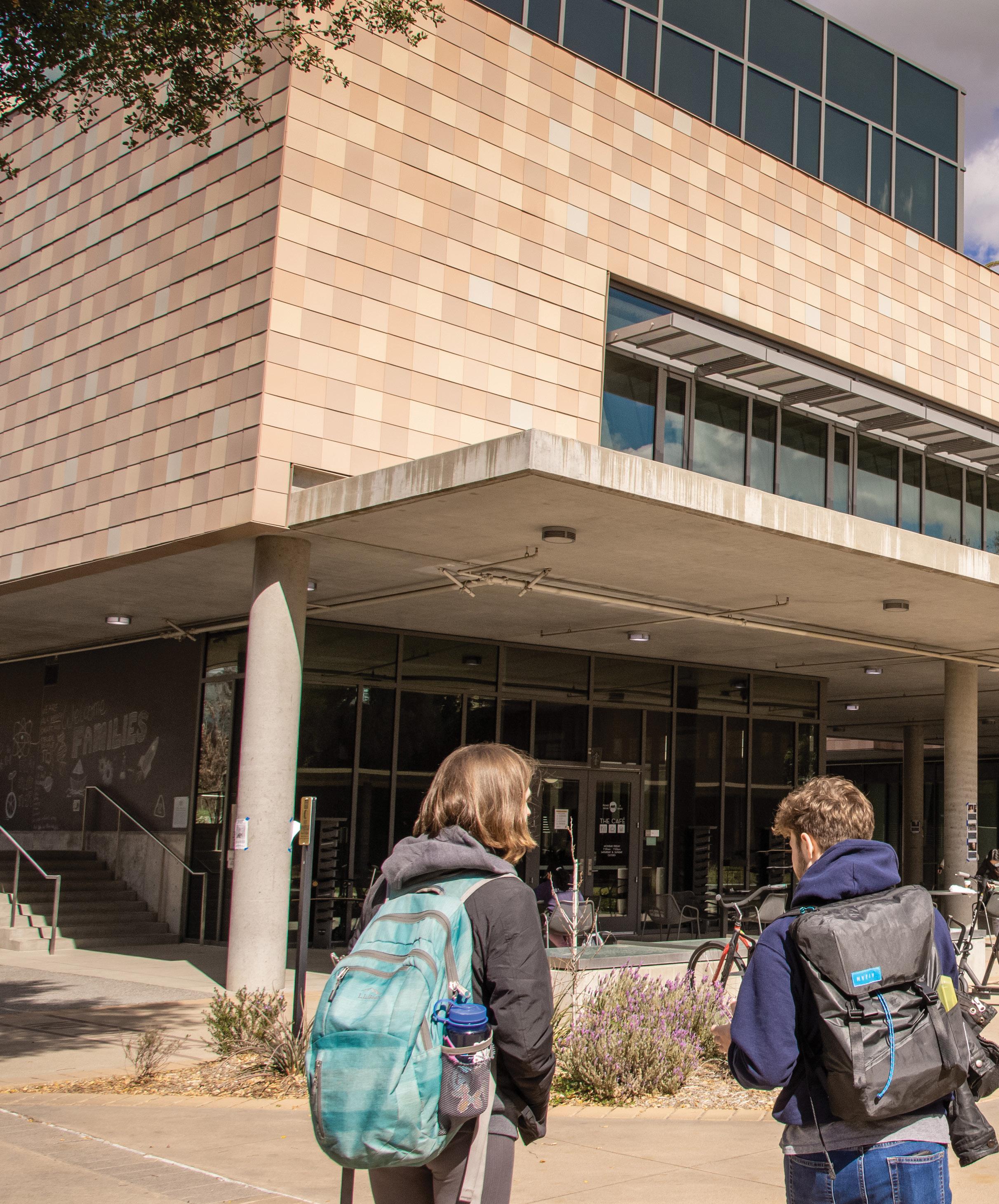
Harvey Mudd College Strategic Plan
2025–2035
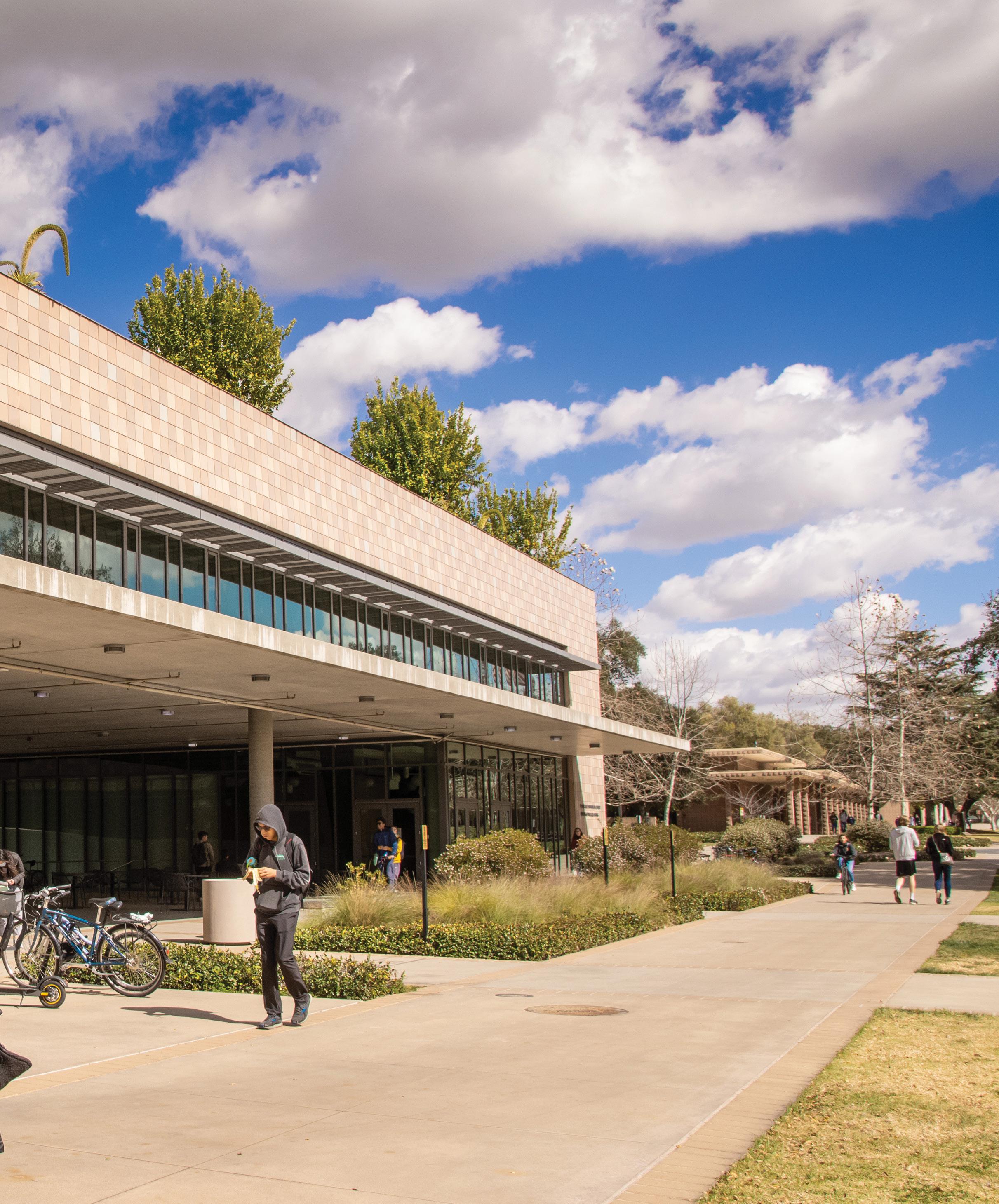
Harvey Mudd College seeks to educate engineers, scientists and mathematicians well versed in all of these areas and in the humanities, social sciences and the arts so that they may assume leadership in their fields with a clear understanding of the impact of their work on society.
The decade before Harvey Mudd College’s founding in 1955 was marked by extraordinary developments—the first electronic computer (UNIVAC), color television broadcasting, the transistor, the photovoltaic cell and the first surgically implanted artificial heart valve as well as medications for asthma, hypertension and rheumatoid arthritis. Amid a Cold War and the space race, artificial satellites were launched, powered by advancements in ballistic missile and thermonuclear technologies.
National leaders recognized the need for a new generation of scientific and technological leaders who could explore innovative solutions to the unprecedented challenges, including human spaceflight to the moon. They wanted leaders who could stand at the intersection of mathematics, chemistry, biology, physics, engineering and computing and help their teams develop new, human-centered solutions to these novel problems. They wanted innovative problem solvers who could work across disciplines and across cultures so that they ask the bold questions required to find innovative solutions.
Back in Claremont, California, our founders believed that integrating the humanities, social sciences and the arts into a rigorous and cross-disciplinary undergraduate STEM curriculum was key to creating this next generation of well-rounded leaders and compassionate problem solvers. They believed it could help students understand how these relationships can impact their work—relationships not just between the liberal arts and the STEM disciplines, but also between their work and its impact on society as well as how societal pressures often shape technologies and scientific advances.
Their idea was an innovative concept in undergraduate STEM education. It would focus on students. It would center the importance of strong undergraduate teaching with hands-on learning to build students’ capability to innovate and solve problems. The curriculum would explore the linkages and tensions between science and engineering on the one hand and the human condition on the other. Harvey Mudd was announced as “a new college of liberal arts emphasizing basic science and engineering.” To this day, we proudly refer to ourselves as the liberal arts college of science and engineering.
Despite its small size, Harvey Mudd College has had an outsized impact on STEM higher education in this country. That’s because our focus has always been our students. From the start, faculty have been focused
on teaching excellence and exploring new pedagogical approaches to help students learn, grow and thrive.
More than 60 years ago, our engineering department created the Clinic Program—a unique approach to engineering education that partnered industry with undergraduate student teams to solve real-world problems. This model, later adopted by colleges and universities worldwide, teaches students how to lead and manage teams, ideate and develop innovative solutions, develop written and oral presentations and translate their discoveries for both technical and nontechnical audiences.
Over the last 15 years, faculty members have redesigned curricular and co-curricular approaches in computer science, engineering and our other departments to diversify STEM education and close gender-based gaps in course performance among our students. These advances, which inspired broader change across higher education, helped Harvey Mudd achieve gender parity in STEM in 2014. We continue to recruit and support students from a wide range of backgrounds, ensuring that different perspectives are valued.
More recently, we’ve begun developing a new, innovative approach to preparing future STEM leaders to address climate change through joint major programs that partner STEM disciplines with deep study in climate science and policy.
Throughout our history, the Harvey Mudd College community has reached across disciplines and across departments to collaborate and develop unique solutions to help prepare our students to lead and address the greatest challenges facing our world.
Each of us believes in living our mission every day.
Our faculty live our mission by advancing innovative curricular approaches that strengthen learning outcomes for all students. They explore and advance pedagogical improvements and share what they learn so that others can benefit from their innovations in teaching. They understand the critical importance of research and practical, hands-on learning as keys to deepening our students’ understanding of STEM disciplines and fueling their innovative problem-solving.
Our students throw themselves into a rigorous STEM curriculum that demands they collaborate to be

successful. They begin with a foundational Core—a set of coordinated courses that engages every department on our campus—biology, chemistry, computer science, engineering, mathematics, physics and humanities, social sciences and the arts. Beyond the Core, more than a quarter of their coursework is completed through courses in the humanities, social sciences and the arts, including a specialization. Students deepen their knowledge in their major field of study and by completing a senior capstone requiring either a research thesis or a Clinic project. Through these experience-based learning opportunities, they live our mission by gaining knowledge and learning to translate it by presenting on campus, to industry partners or at academic conferences around the world.
Our staff live our mission by collaborating across departments and offices to support and empower every student so that they can be at their best. From managing the campus infrastructure to providing a welcoming living, learning and working environment for our community, our staff members partner with one another and with the faculty to provide exceptional experiences in our co-curricular and curricular programs.
Finally, our alumni live our mission every day by being the leaders, inventors and innovators who discover new technologies, cure or develop new treatments for diseases, identify creative solutions to address climate change, launch new companies to address critical societal needs, teach new generations of students, and elevate our culture through innovations in music, theater and film.
The deep relationships forged here—among students and faculty, among the liberal arts and STEM disciplines, among teaching and research—help prepare our students to graduate as creative thinkers, leaders and innovators who can collaborate across disciplines and across continents to develop human-centered, novel approaches to address the most important problems impacting the world around them.
For 70 years, our unwavering focus on students and our mission has guided us. As we envision the next decade, our community’s creativity and agility position us to continue innovating and sharing our discoveries to benefit others.
This is how we live our mission—and why the world needs Harvey Mudd now more than ever.
Our strategic plan is encapsulated in a simple yet profound vision: STEM for a Better World.
STEM for a Better World carries two essential meanings.
First, a liberal arts STEM education at Harvey Mudd must seamlessly integrate exceptional curriculum development, teaching and hands-on learning with top-tier residential and co-curricular programming. This combination aims to prepare a diverse group of engaged problem-solvers to lead through today’s most significant challenges. As we look toward the future, the world faces a new array of challenges that demand the ingenuity and leadership of STEM professionals who understand that the humanities, social sciences and the arts power our ability to create technological solutions that positively impact society.
Some of the most pressing issues include climate change and environmental sustainability, healthcare and biotechnology, the ethical development and use of artificial intelligence and big data, space exploration and technology, cybersecurity and digital privacy and quantum computing. Addressing these challenges requires
interdisciplinary approaches and innovative thinking. The next generation of STEM leaders must blend technical expertise with a deep understanding of ethical, social and environmental considerations to develop solutions that benefit humanity and the planet.
STEM for a Better World also reflects our commitment to fostering a community of responsible and compassionate citizens of the nation and the world. Harvey Mudd strives to create and nurture a supportive, inclusive and accessible community of students, faculty and staff from diverse backgrounds and perspectives who believe that the health, wellbeing and success of every individual matters. Wherever in the world they call home, our students, faculty and staff now also have a home at Harvey Mudd within our community. At its core, this vision aspires to integrate technical achievement with a deep sense of purpose, empowering our community to contribute meaningfully in the world while upholding the values of justice, equity and peace.
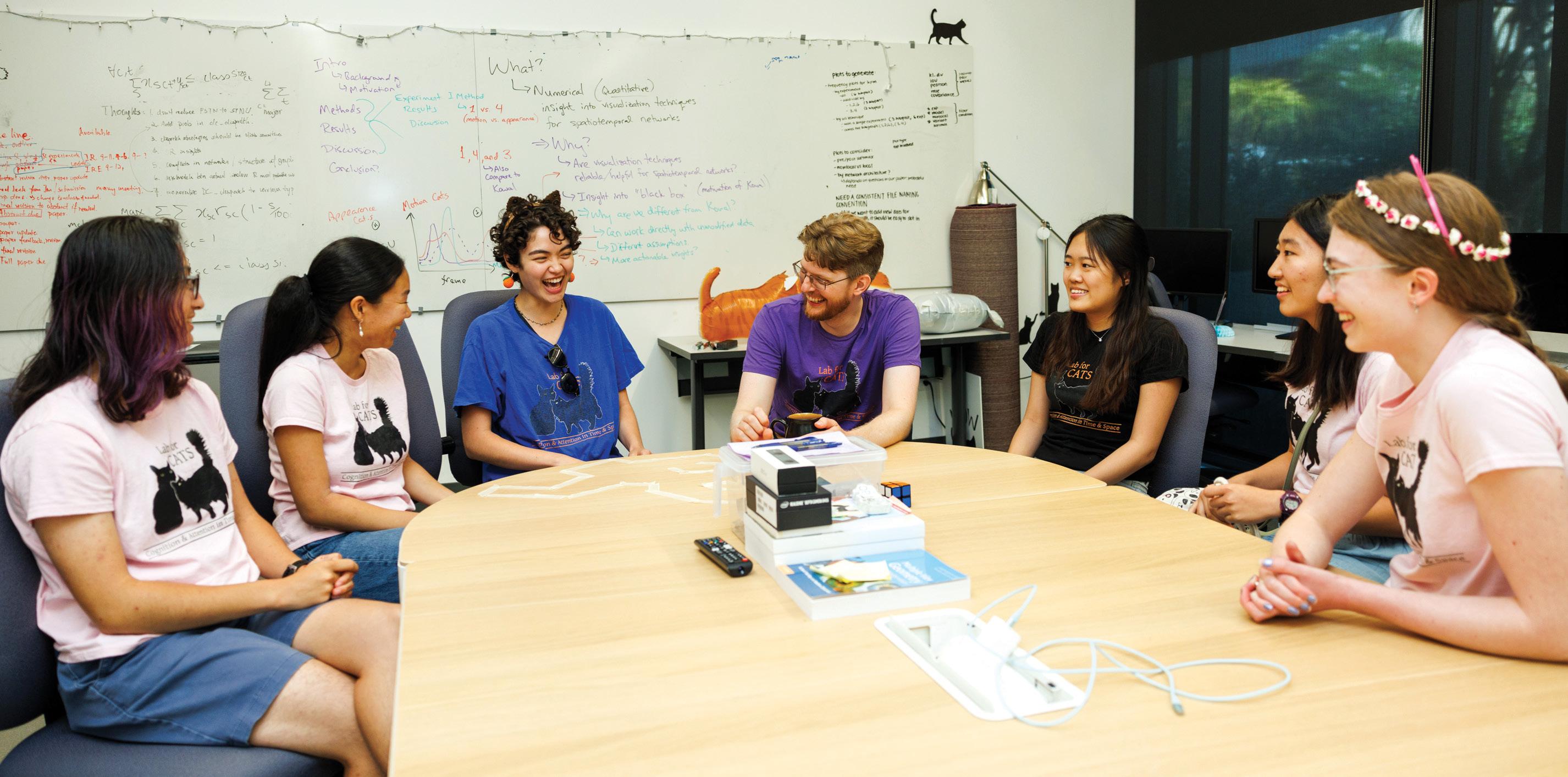
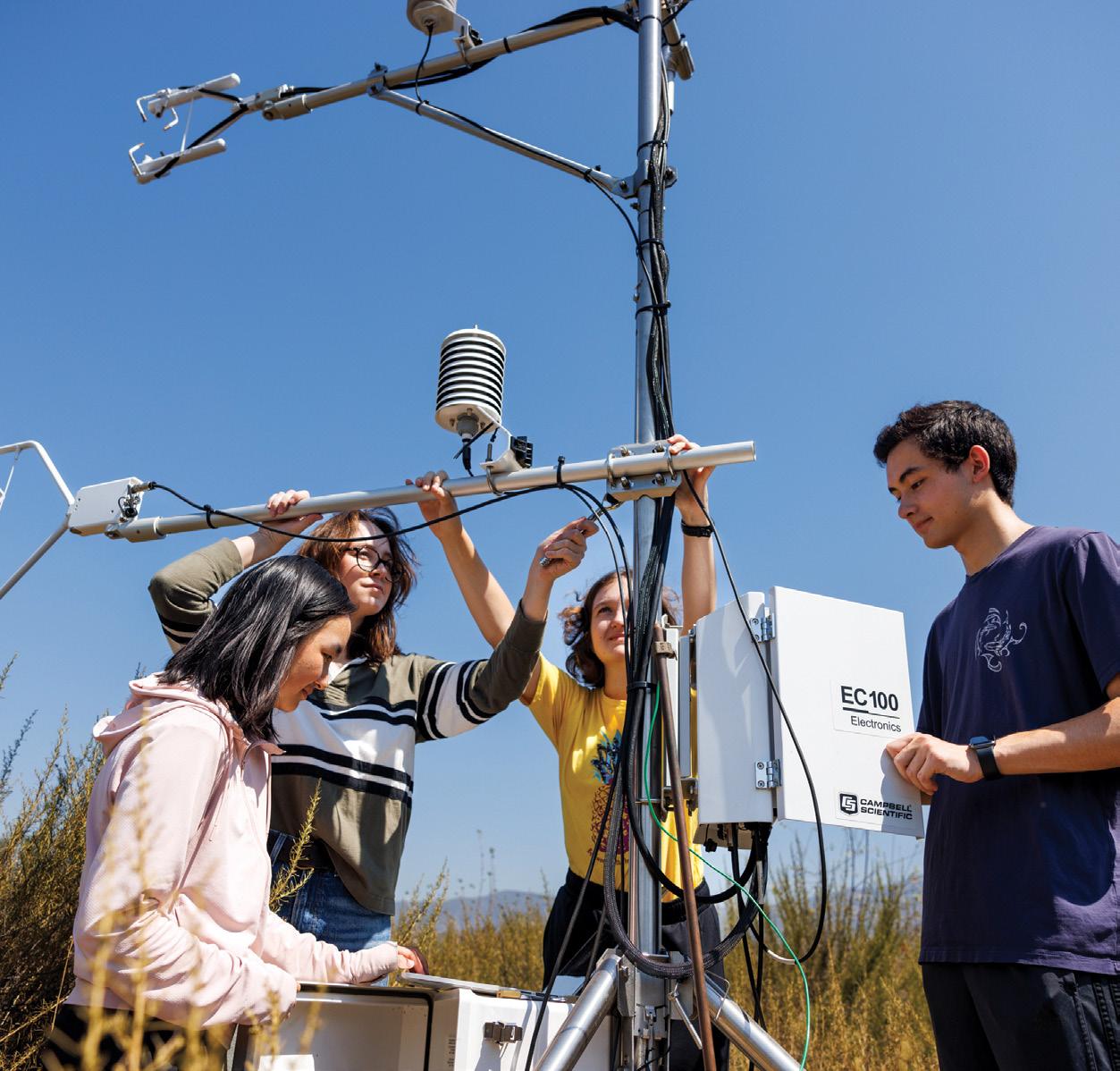
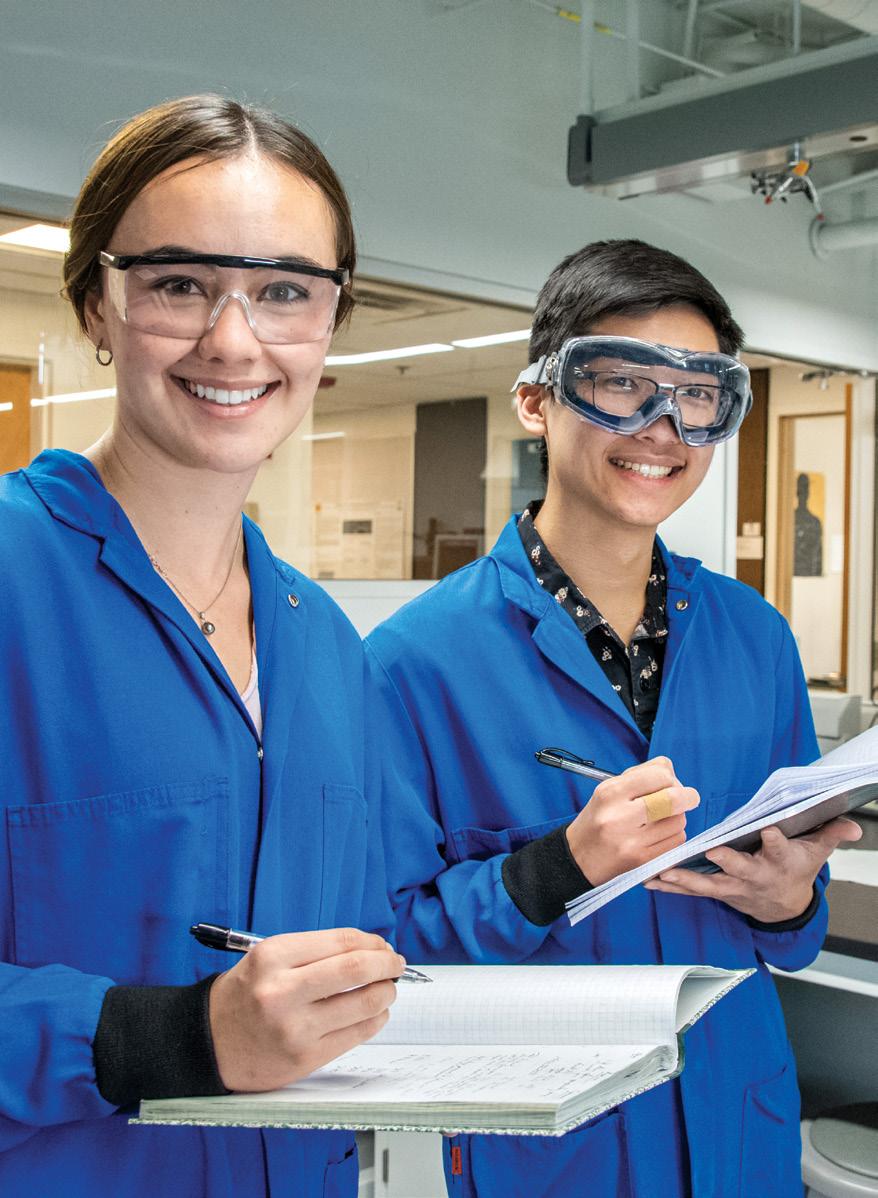
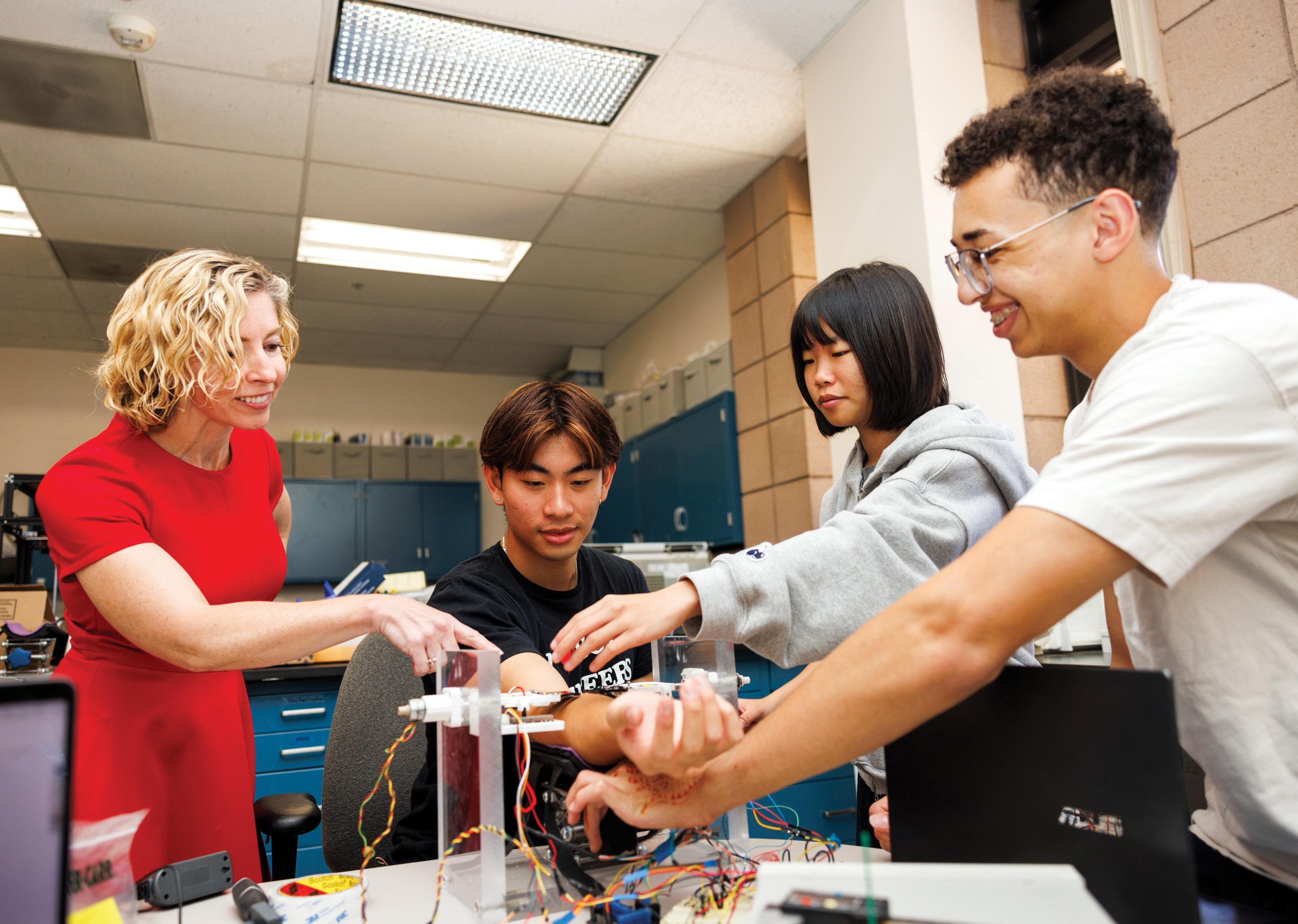
Our community has articulated core values, aspirations and priorities essential to achieving our ambitious goals. These guiding statements serve as a foundation for future decisionmaking, ensuring that we remain aligned with our mission and uphold the principles that define our community. They reflect our commitment to a STEM education that embodies excellence, innovation, inclusivity and the wellbeing of all members of the Harvey Mudd community.
1. Joyful, Powerful Liberal Arts STEM Education
We celebrate the unique combination of liberal arts and STEM education at Harvey Mudd, offering a joyful and powerful undergraduate learning experience that fosters both technical expertise and broad cultural understanding.
2. Innovation and Scientific Discovery
We are stewards of the innovative spirit that inspired the College’s founding. We believe in the power of scientific discovery and STEM education to address global challenges and are committed to exploring and sharing innovative solutions that enhance our curriculum and pedagogy. We also are stewards of the infrastructure and resources that power the unique curricular and co-curricular experiences we provide. We believe it is imperative to provide the resources and infrastructure to support our students, faculty and staff in order to secure the College’s unique place in liberal arts STEM education for generations to come.
3. Inclusive Excellence and Social Justice
We are committed to attracting exceptionally talented and diverse students to the College. We are dedicated to advancing diversity, equity, inclusion and belonging in every aspect of campus life. By emphasizing an exploration of our societal impact, we empower our community to contribute to a more just and peaceful world.
4. Empowering Faculty as Teacher-Scholars
We are committed to empowering our faculty as teacherscholars, fostering an environment that supports their professional growth, encourages innovative teaching and advances cutting-edge research. We recognize the importance of faculty development in maintaining academic excellence and enriching the student experience.
5. Teaching and Experiential Learning
Our students come first. Our faculty prioritize creative undergraduate teaching and hands-on learning experiences, offering students a rigorous and challenging STEM curriculum that provides a solid grounding across disciplines. We prepare our students to tackle real-world problems, while equipping them with the skills to lead and to develop innovative solutions to society’s most pressing issues.
6. Integrity, Shared Governance and Leadership
We uphold the values of trust, integrity and mutual respect as expressed in our Honor Code. We are dedicated to shared decision-making, fostering transparency, accountability and engagement across our community. We defend academic freedom and freedom of expression. We believe that by leading with courage and respect we can bring about the structures and relationships that can help support the change we seek in the world.
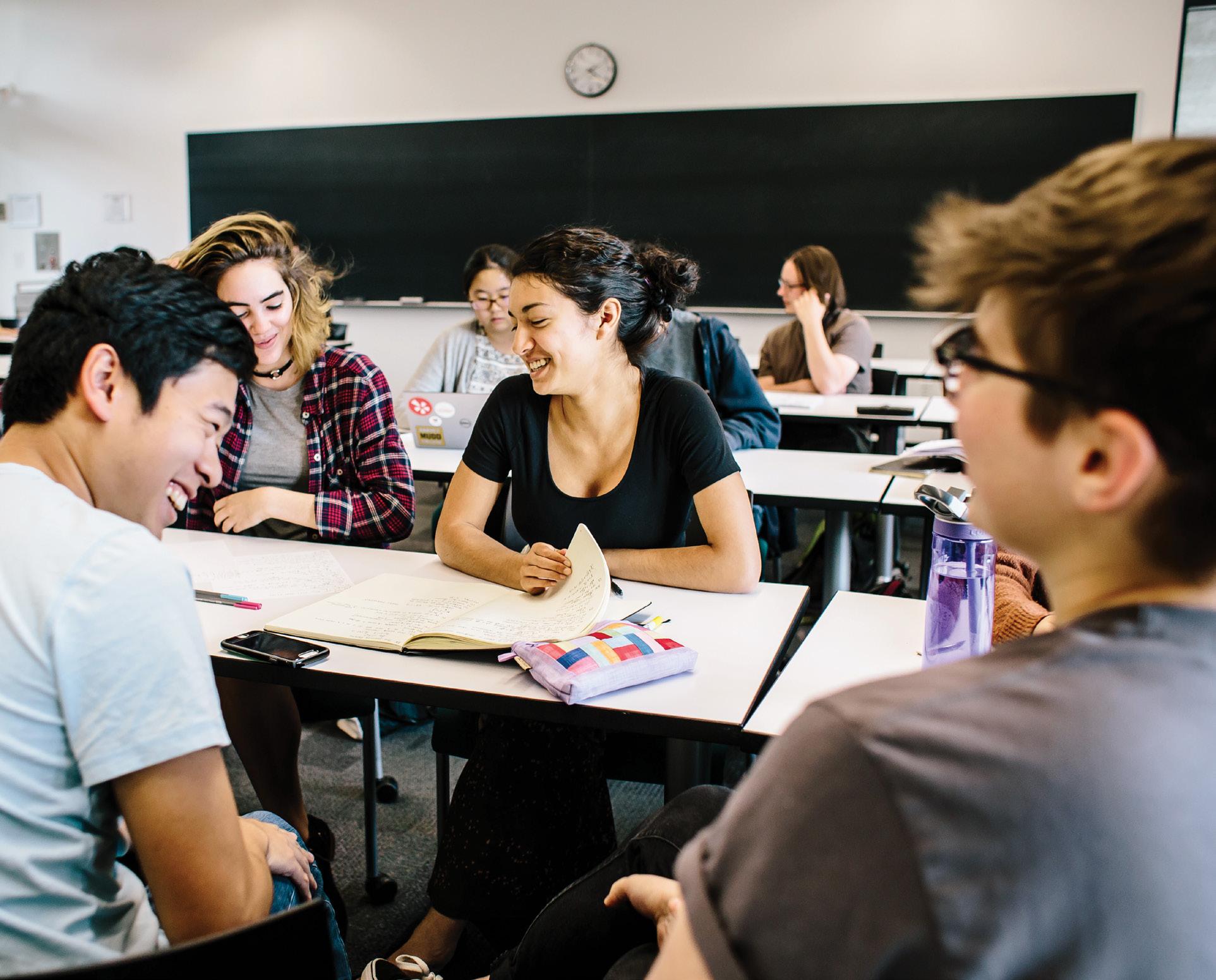
7. A Healthy and Vibrant Campus Community
We celebrate a culture of fun and camaraderie, where good-natured pranks are embraced as part of our community’s unique traditions. We prioritize the health and wellbeing of all community members, recognizing that personal fulfillment and holistic wellness are integral to academic and professional success. We are committed to creating a vibrant, inclusive residential campus that fosters meaningful connections, supports personal growth and provides a nurturing environment for all.
We value our professional and academic staff and are dedicated to making Harvey Mudd College an exceptional workplace, empowering our employees by prioritizing their professional and personal growth through comprehensive professional development opportunities and work-life integration, exemplifying healthy excellence in all aspects of work life.
9. Elevating Our Brand and Reputation
We aim to enhance Harvey Mudd’s visibility and reputation, showcasing the College as an extraordinary institution worthy of being recognized and celebrated within the broader educational landscape.
We encourage and support a culture of philanthropy, recognizing the vital role that generous contributions play in advancing our mission and providing transformative educational experiences.
The plan is organized into four overarching goals, supported by specific objectives and actions. These goals have been developed via community-wide engagement, working groups and task forces. Some actions have already begun, others continue existing work, and some are still in the early planning stages. The Strategic Plan Steering Committee will monitor progress on these goals and objectives as we move forward. This plan embodies Harvey Mudd College’s commitment to continuous innovation and impactful contributions, solidifying our reputation as a global leader in liberal arts STEM education. Our mission, vision of STEM for a Better World, guiding statements and strategic goals aim to propel innovation in a world that greatly needs Harvey Mudd.
Harvey Mudd College is committed to leading a STEMeducation renaissance by pioneering transformative teaching methods, curricula and co-curricular programs through the establishment of an Innovation Accelerator. We will empower faculty and staff to create educational experiences that infuse creativity, innovation and inclusivity. Our initiatives aim to close historical performance gaps, enhance student mastery and ensure the material we teach addresses pressing global challenges. We will recruit, admit and retain a student body that reflects the richness of society and provide them with the resources and skills to be successful.
OBJECTIVE 1.1
Advance STEM Education and Practice for the 21st Century
Foster a diverse cohort of engaged STEM leaders through exceptional teaching, learning and research. This includes establishing new institutes and centers of excellence to develop innovative educational approaches for emerging STEM challenges, expanding support for endowed professorships, scholarships, undergraduate research, experiential learning opportunities and summer experiences, and the Core Impact course, ensuring these programs are accessible and beneficial to all students.
OBJECTIVE 1.2
Lead in Climate Education
Continue expansion of the Hixon Center for Climate and the Environment to provide comprehensive education on climate issues. Develop joint majors in climate + STEM fields, integrating interdisciplinary expertise to address global environmental challenges while fostering inclusive approaches to environmental education that consider diverse perspectives and knowledge systems.
OBJECTIVE 1.3
Build State-of-the-Art Educational Infrastructure
Construct a magnificent science and engineering building, residence hall and student union consistent with the highest “healthy building” principles. These facilities will transform the College’s cutting-edge scholarship and residential opportunities, creating a comprehensively compelling experience for future students.
Goal 2: Transformative
We will forge new partnerships and strengthen the most promising existing collaborative efforts between Harvey Mudd and The Claremont Colleges, external organizations, businesses and community groups. These partnerships will create a dynamic ecosystem that invigorates our students’ educational experiences, reinforces our ability to carry out our mission and drives positive societal impact.
OBJECTIVE 2.1
Enhance Professional and Research Partnerships
Review, evaluate and expand partnerships with corporations, foundations, nonprofits and other entities through the Clinic Program and the Office of Career Services, including exploring ways to offer students a greater variety of opportunities, internships and career placements in high-impact areas, both domestically and internationally. Explore additional opportunities to partner with other educational institutions, federal and state government organizations, companies, venture capital organizations and nonprofits to enhance opportunities for research, innovation and societal impact.
OBJECTIVE 2.2
Foster Entrepreneurship and Interdisciplinary Education
Develop comprehensive entrepreneurship offerings, including the Entrepreneurship Studio program, in collaboration with companies, venture capital organizations and nonprofits. Explore new joint programs and majors with The Claremont Colleges in interdisciplinary areas like public policy, ethics and STEM disciplines. Create partnerships that allow students to engage with STEM challenges in a global context, promoting a holistic understanding of societal issues.
We aim to strengthen Harvey Mudd College through intentional steps that further develop our institutional maturity by promoting shared responsibility and philanthropy, ensuring affordability for all students and reducing our environmental impact. By doing so, we will create a stronger foundation for the College’s mission and ensure that it is in position to serve future generations of Mudders.
OBJECTIVE 3.1
Increased Visibility and Support of Our Cause and Vision
Build new approaches to engage alumni, parents and friends in supporting Harvey Mudd’s cause of STEM for A Better World and our liberal arts-based, STEM educational approach. We will cultivate a culture of shared responsibility of philanthropy to secure resources that sustain and strengthen the College’s leadership in higher education.
OBJECTIVE 3.2
Ensuring Access and Equity
Eliminate financial barriers by removing loans from financial aid packages, establishing a Secure Scholars Fund to cover students’ indirect costs, and supporting firstgeneration and low-income students through programs, such as I’m a First and the Summer Institute. This will ensure that a Harvey Mudd College education is financially accessible and inclusive, fostering a diverse student body and providing essential resources and mentorship.
OBJECTIVE 3.3
Embedding Sustainability into College Operations
Renovate our facilities and incorporate alternative energy sources in alignment with sustainable practices. Integrate sustainability into the College’s structure and operations to reduce our long-term environmental footprint.
We will support our students, alumni, professional staff and faculty in leading fulfilling lives and making positive contributions to our campus and to society. Our central campus serves as a hub of connection, offering the physical space, programs and resources needed to foster social and cultural support, personal growth and the development of impactful lives.
OBJECTIVE 4.1
Strengthen Collaboration and Community Engagement
Enhance our collaborative and socially engaged nature with the Office of Civic and Community Engagement. Build students’ citizenship and global awareness through local, regional and global outreach, fostering a community that values diverse perspectives to enable creative problem-solving.
OBJECTIVE 4.2
Foster Holistic Wellbeing and Purposeful Growth
Provide comprehensive programs and resources to support students’ personal and academic journeys, helping them achieve a healthy balance between professional and personal life. Use the Office of Wellbeing and other structures to promote programs that empower students to explore their personal philosophies and align their activities with their values and goals to design fulfilling lives.
OBJECTIVE 4.3
Empowered and Engaged Faculty and Staff
Prioritize the recruitment, retention, and professional and personal growth of outstanding faculty and staff by offering competitive pay, benefits and comprehensive professional development opportunities, and work-life integration initiatives. Foster a supportive and inclusive workplace environment, empowering faculty and staff to excel in their careers while maintaining a sense of fulfillment and connection to the Harvey Mudd community.
It is a fundamental truth that institutions, like individuals, are always in a state of becoming.
At Harvey Mudd College, we honor a rich legacy that has brought us to this moment—a juncture between what we are and what we aspire to be. Our mission, deeply rooted in the integration of the sciences, engineering, mathematics and the liberal arts, will continue to guide us as we reimagine our role in today’s world and for the future.
For us, this HMC Strategic Plan 2025–2035—STEM for a Better World embodies our mission, bringing it to life for today’s needs as well as for the challenges ahead. It bridges our storied past to our innovative future, focusing on both our enduring long-term goals and the immediate needs of the students we educate today.
While we cannot provide a precise roadmap for the decade ahead—no map can predict every twist and turn—as a community, we know our destination.
In this document, you find a strategy that tells our story, shares our vision, outlines our guiding statements and presents four overarching goals. The strategy is responsive by design—a living document to guide us through an ever-evolving world.
Together, let us embrace this journey with optimism, courage, determination and a shared dedication to excellence. Together, let us continue propelling innovation as we push the frontiers of knowledge and inspire future generations of thinkers and leaders. Together, let’s soar to even greater heights!
Yours in the journey,
Harriet B. Nembhard President, Harvey Mudd College
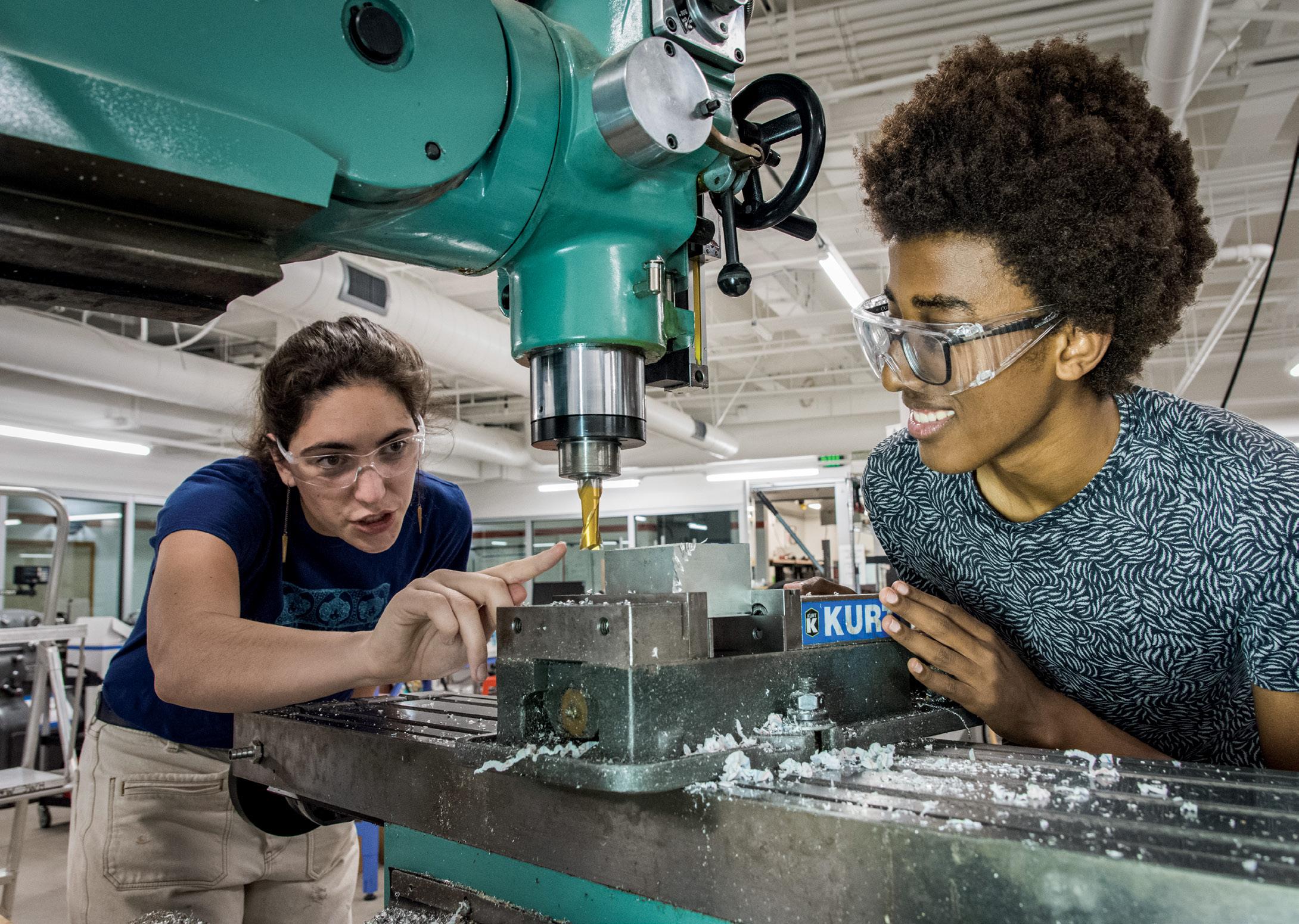
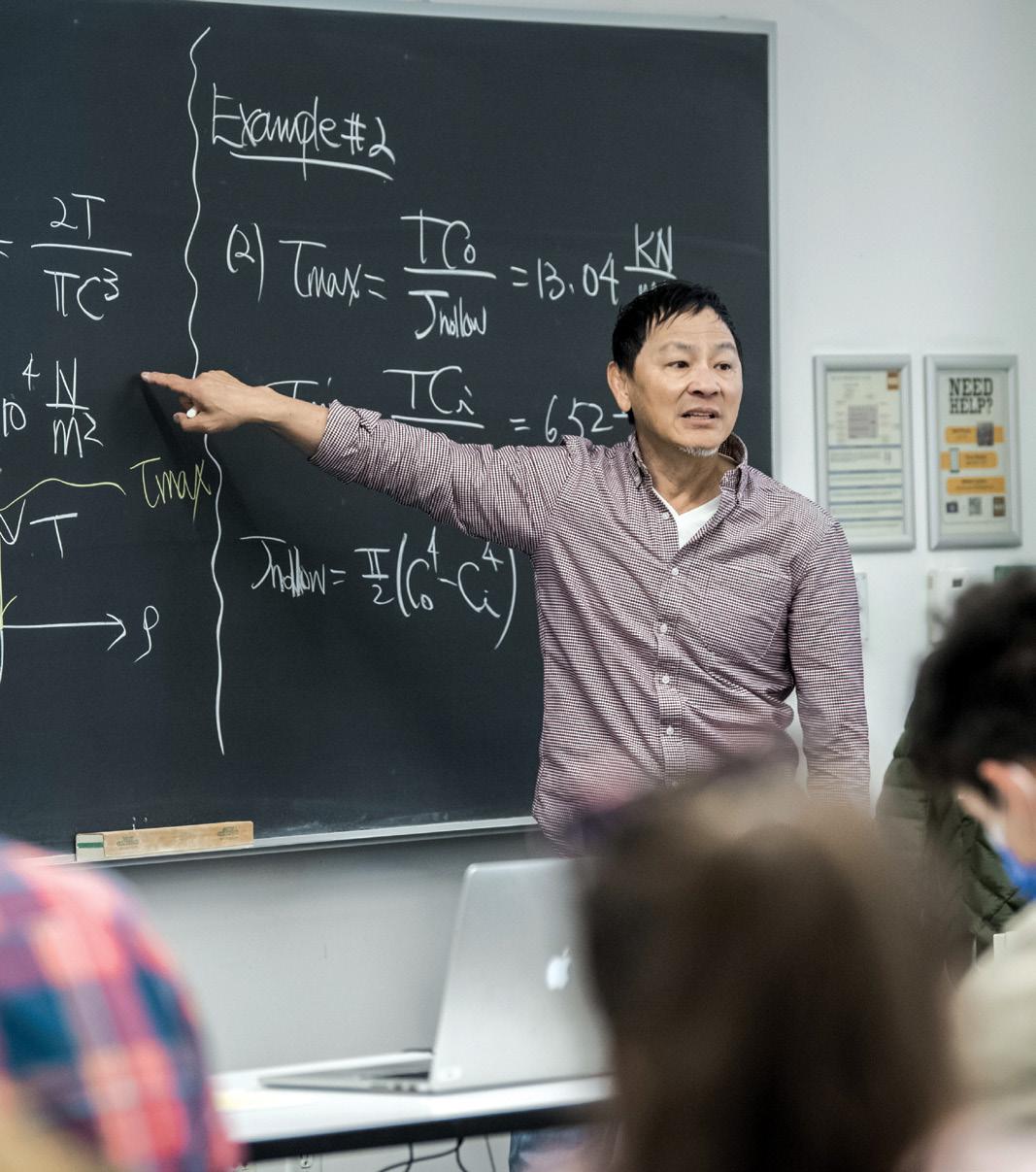
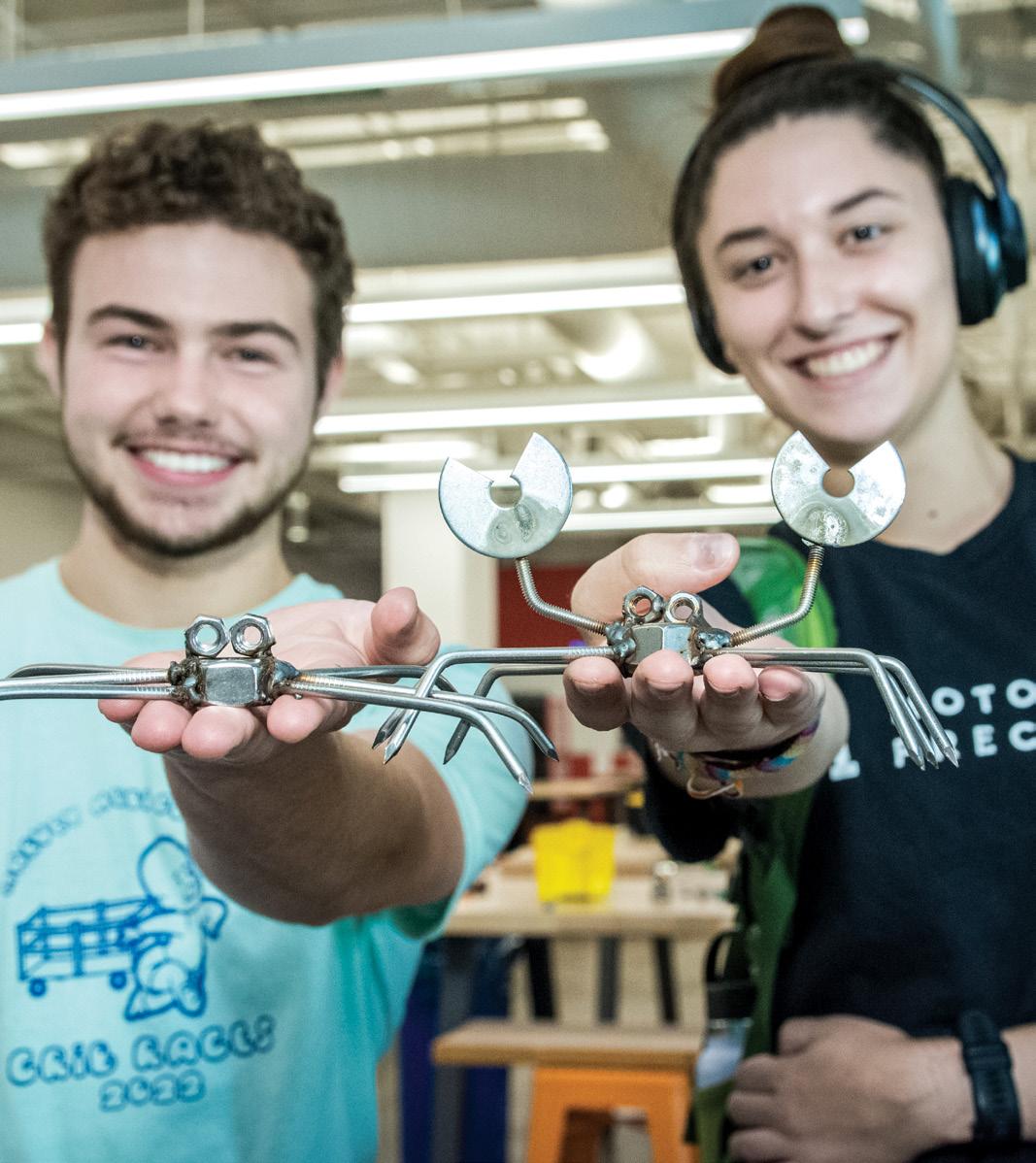
Don’t want to receive the print version anymore? Just write to communications@hmc.edu, and we’ll add you to our email-only list.
